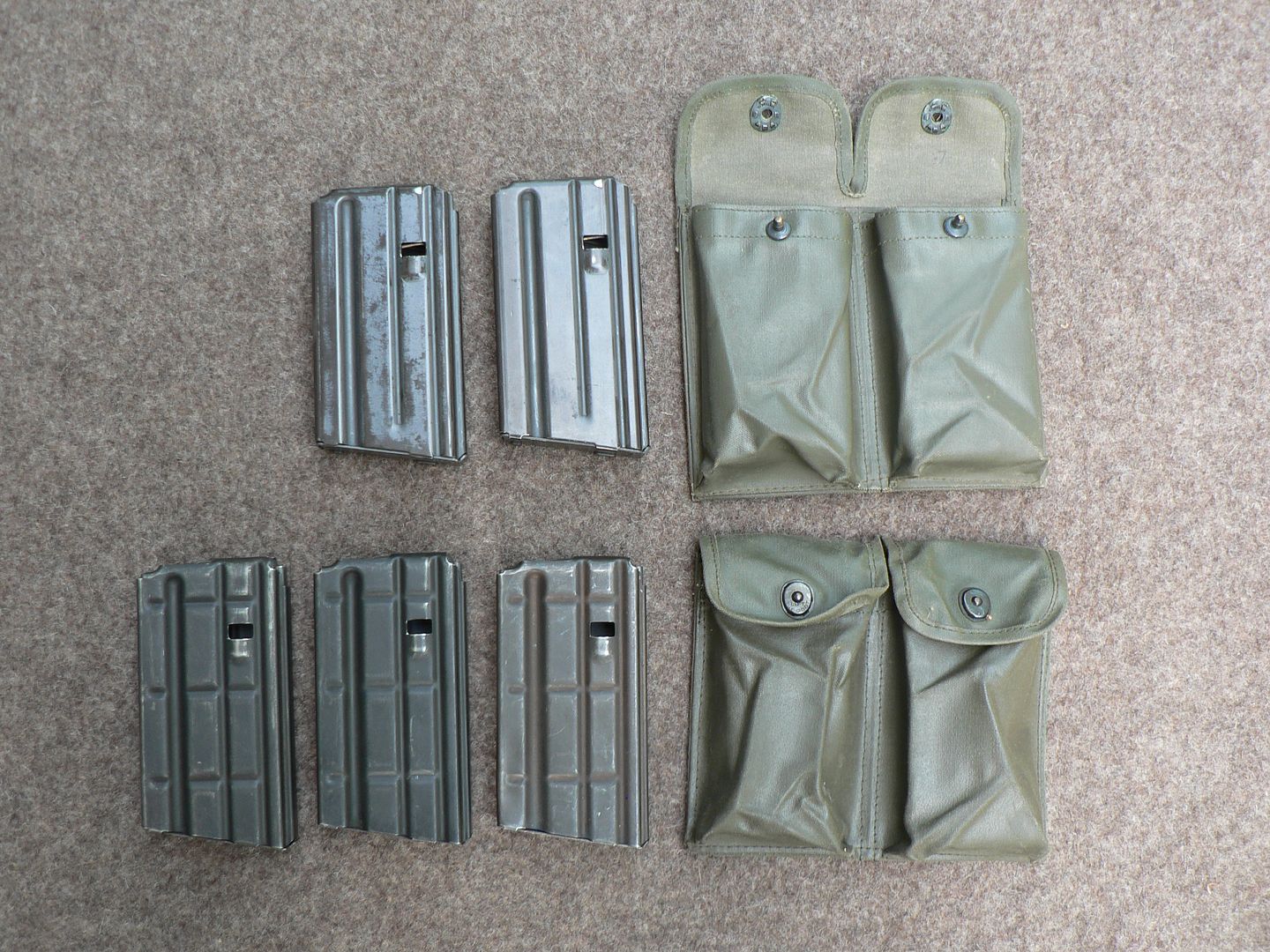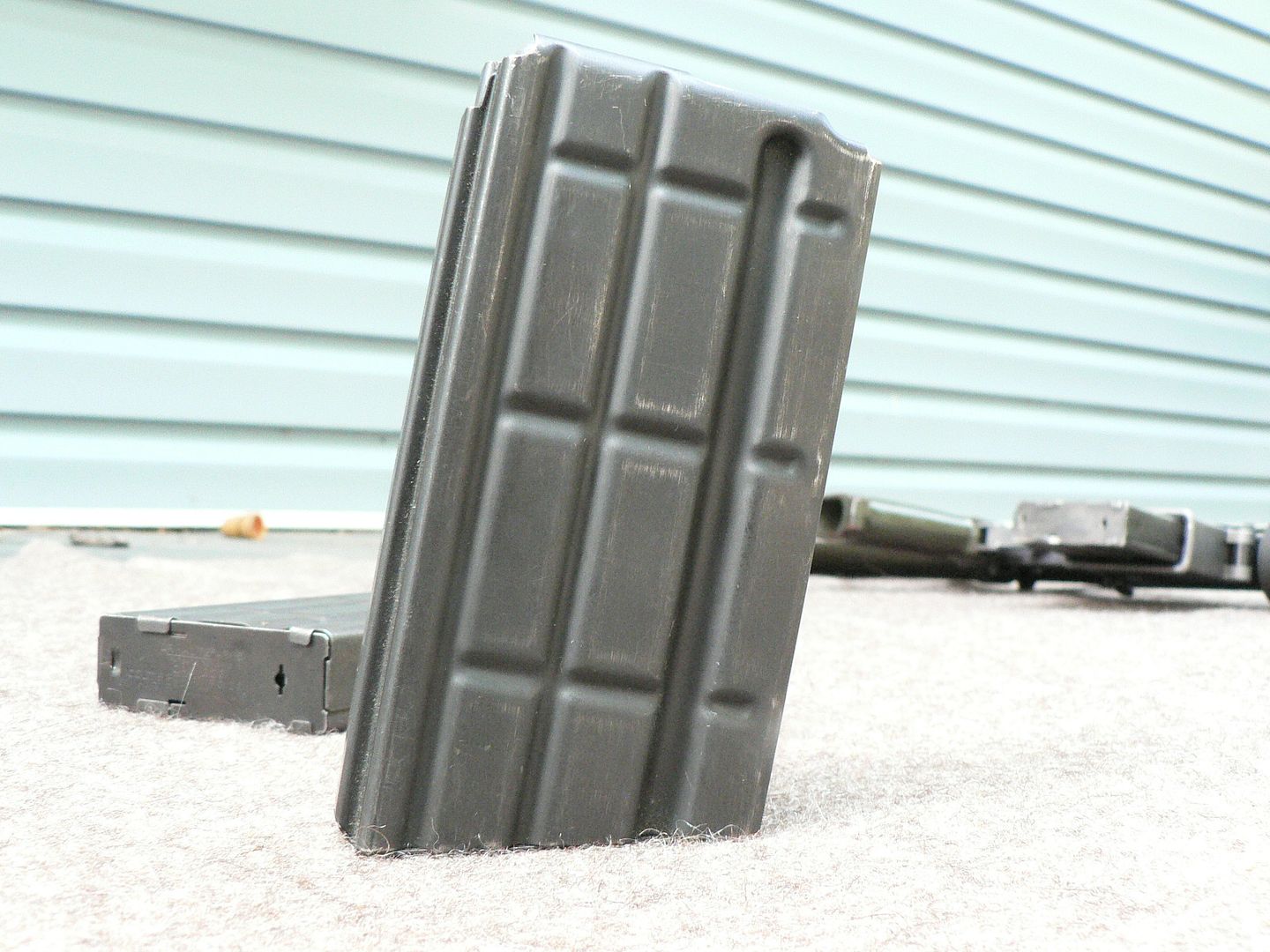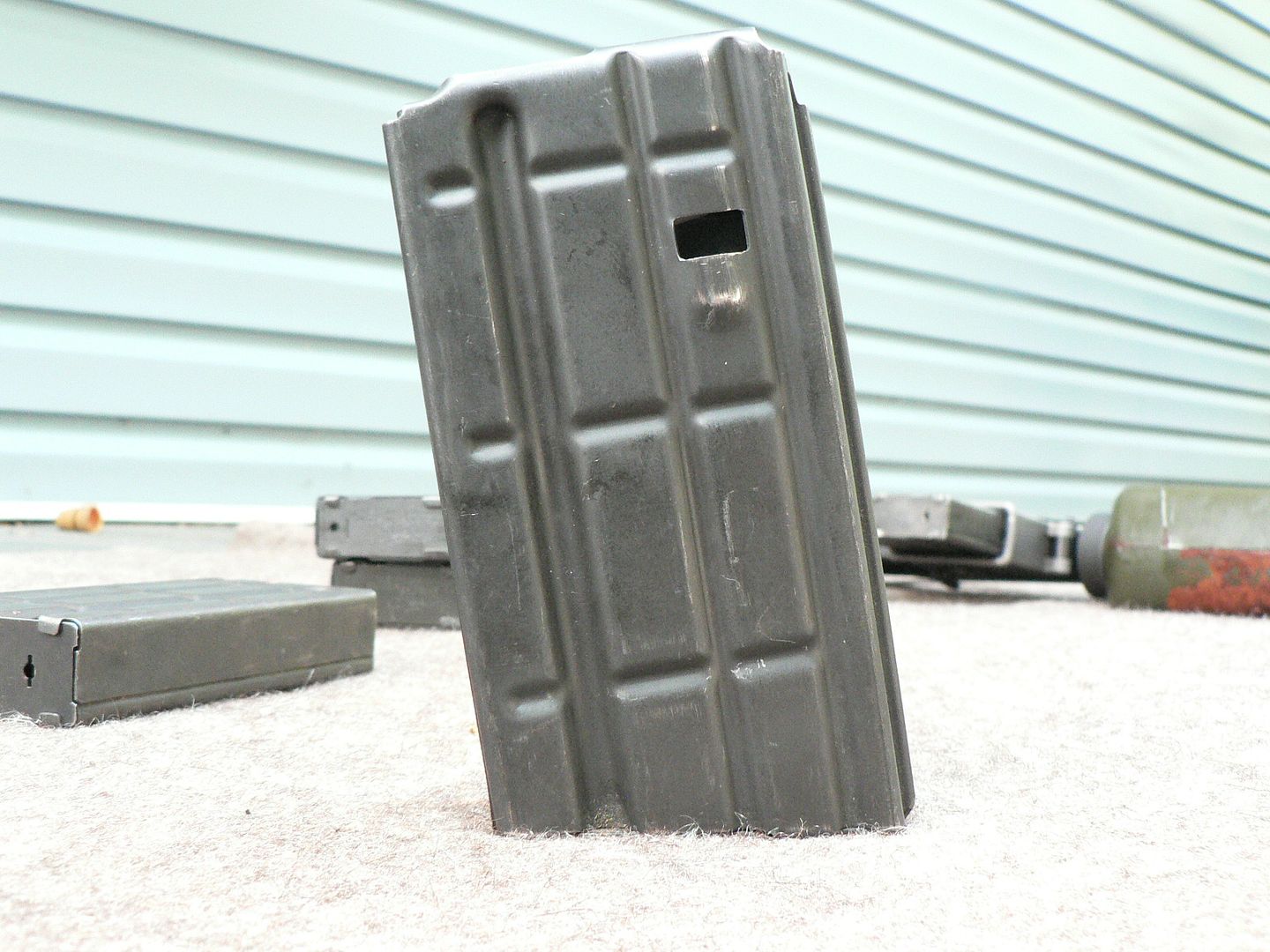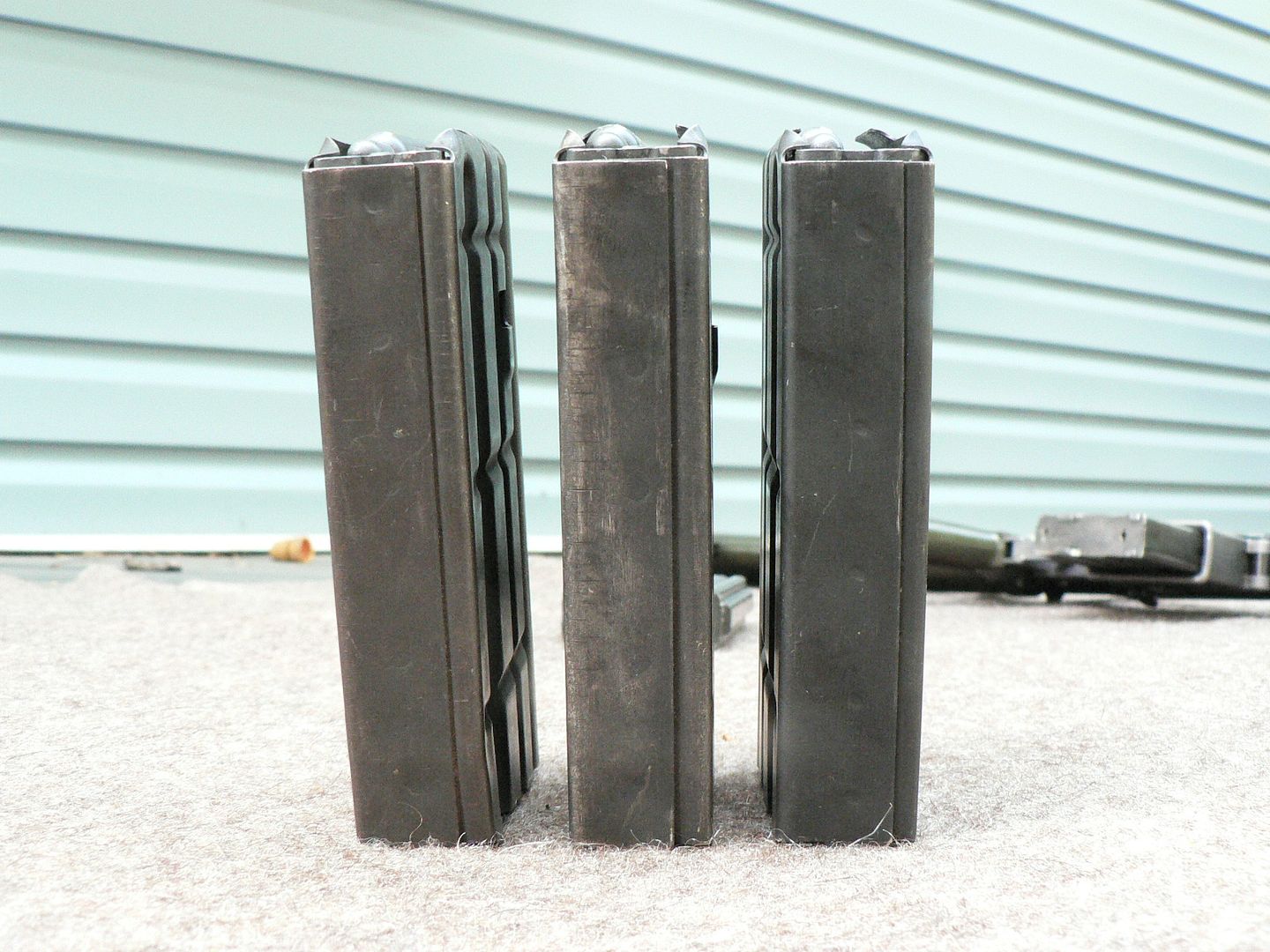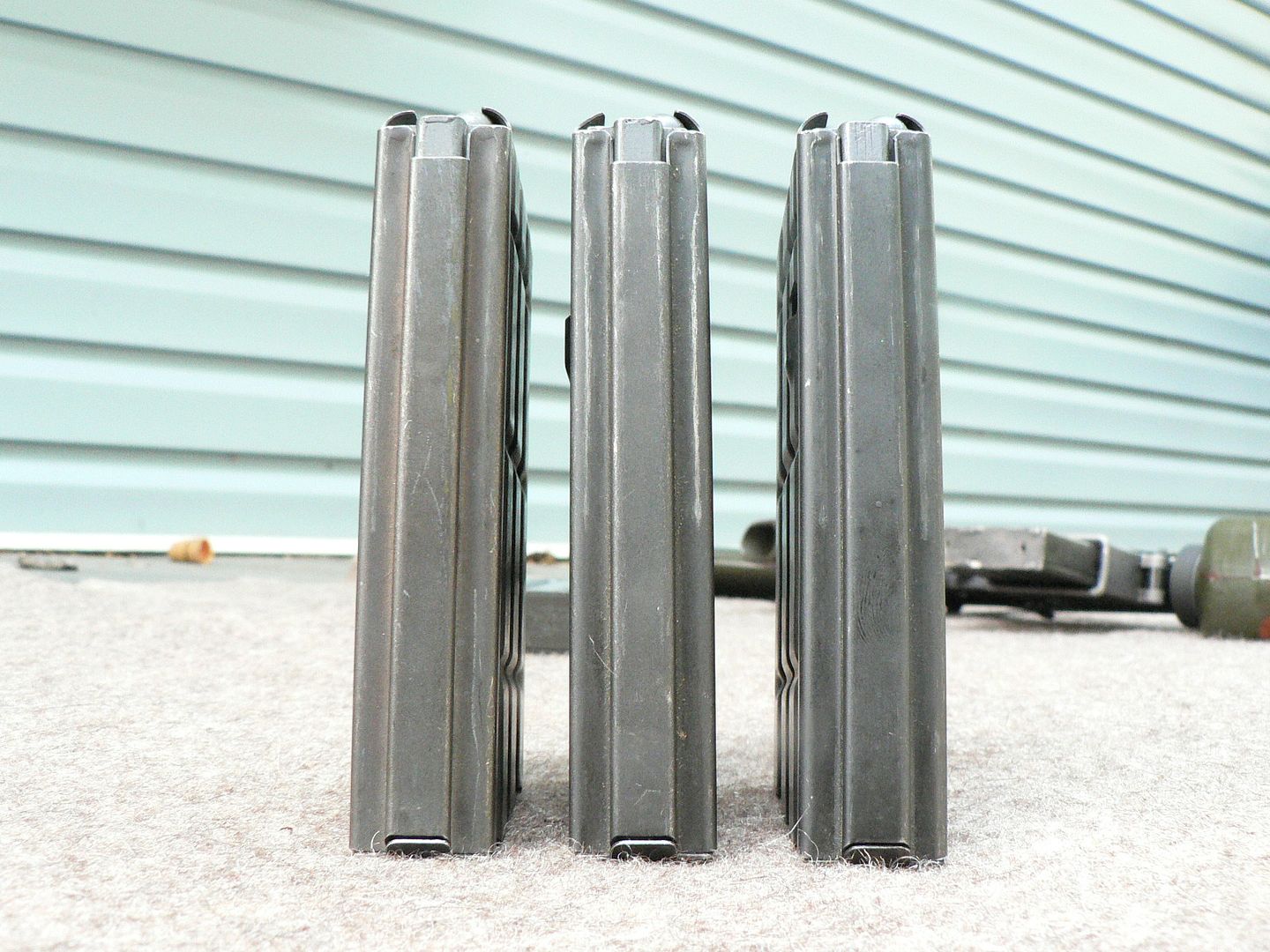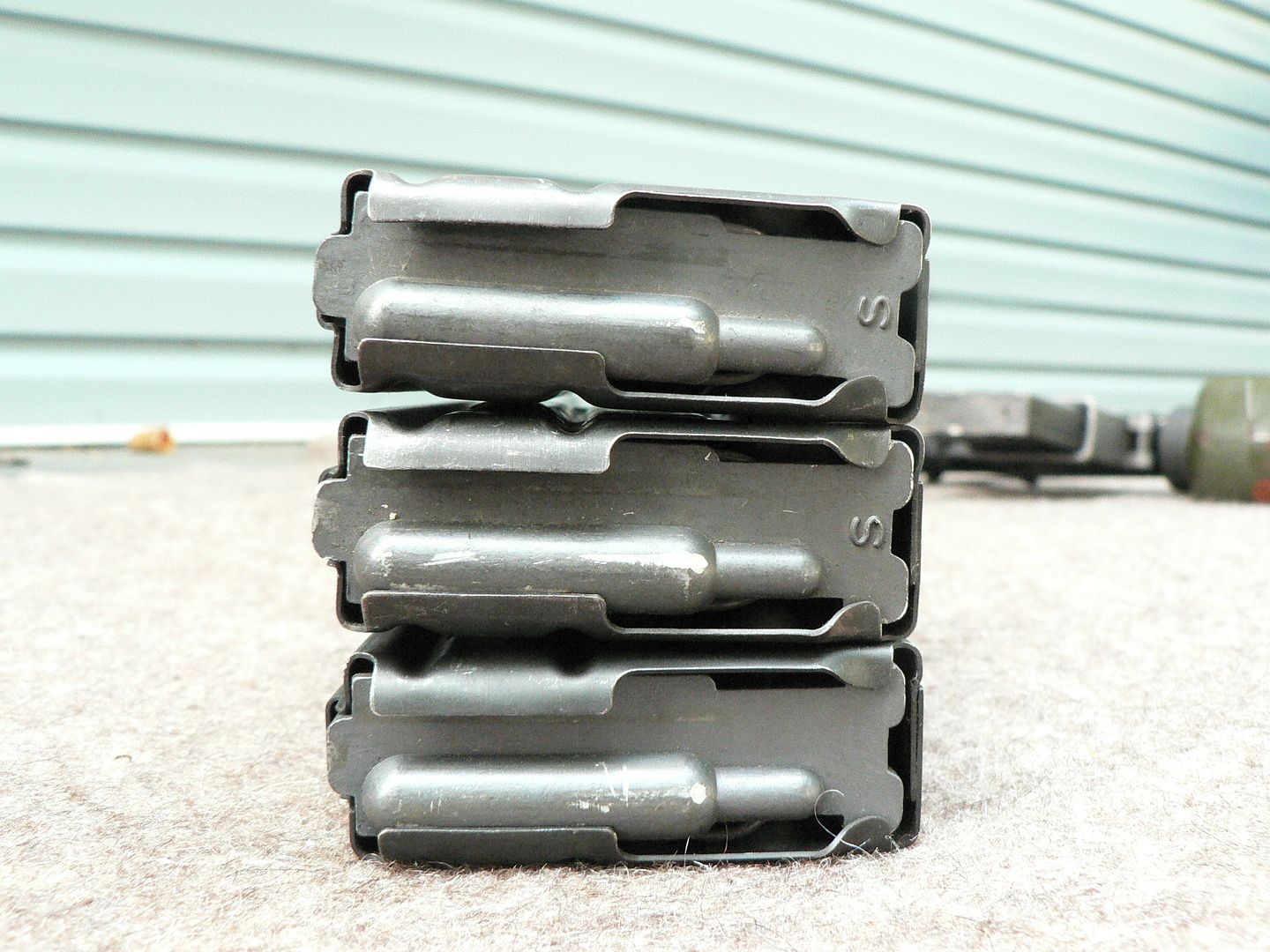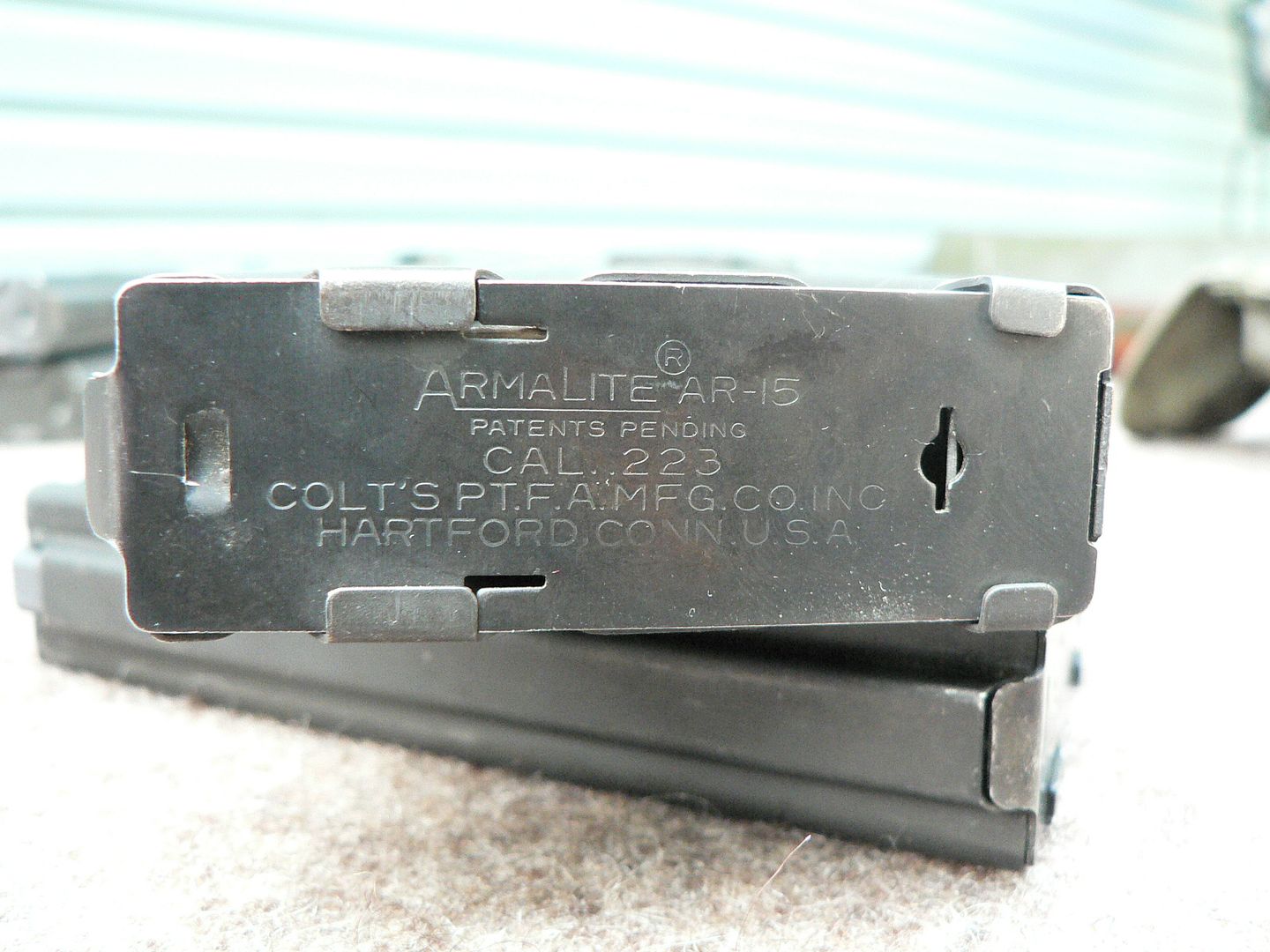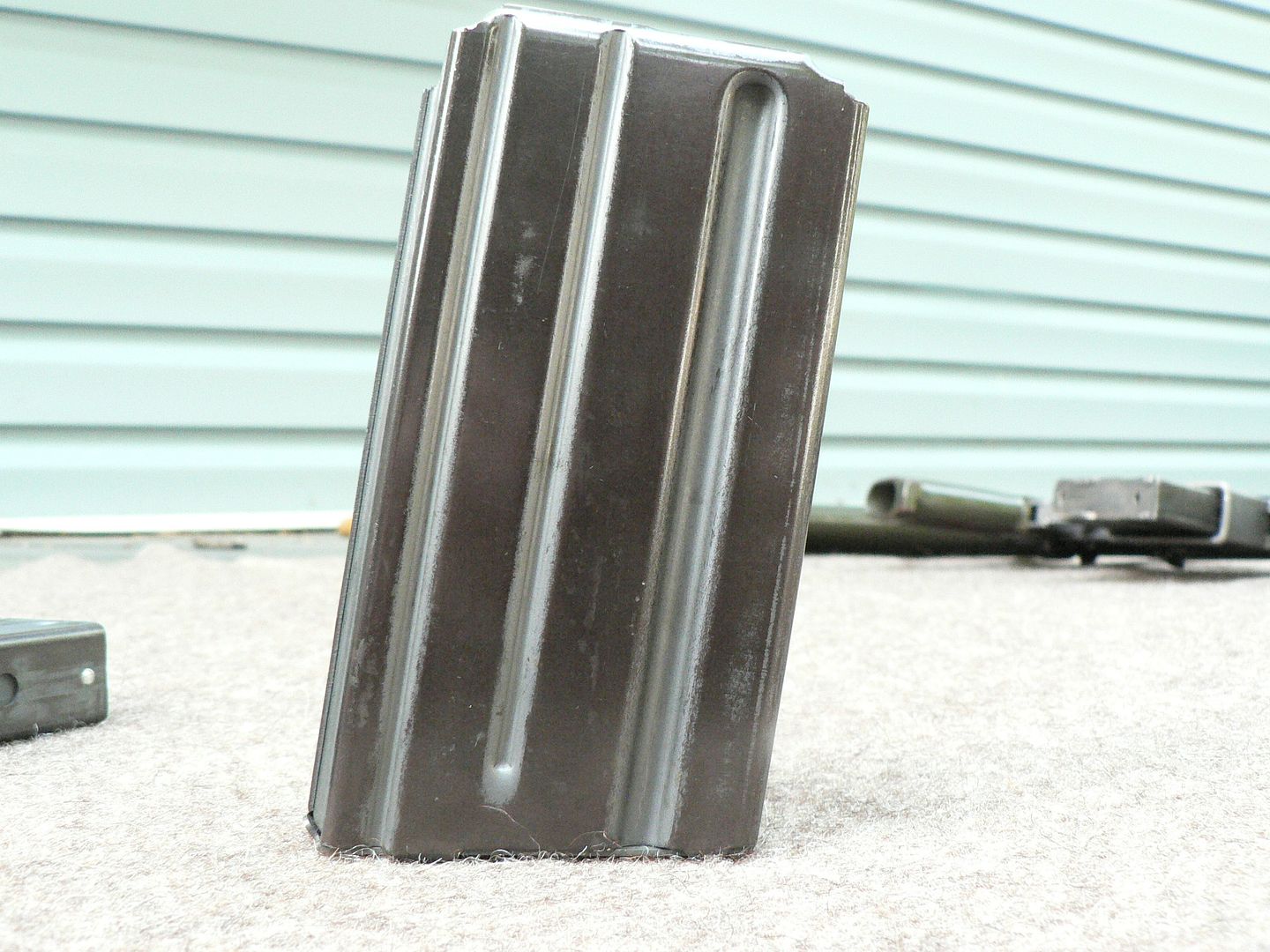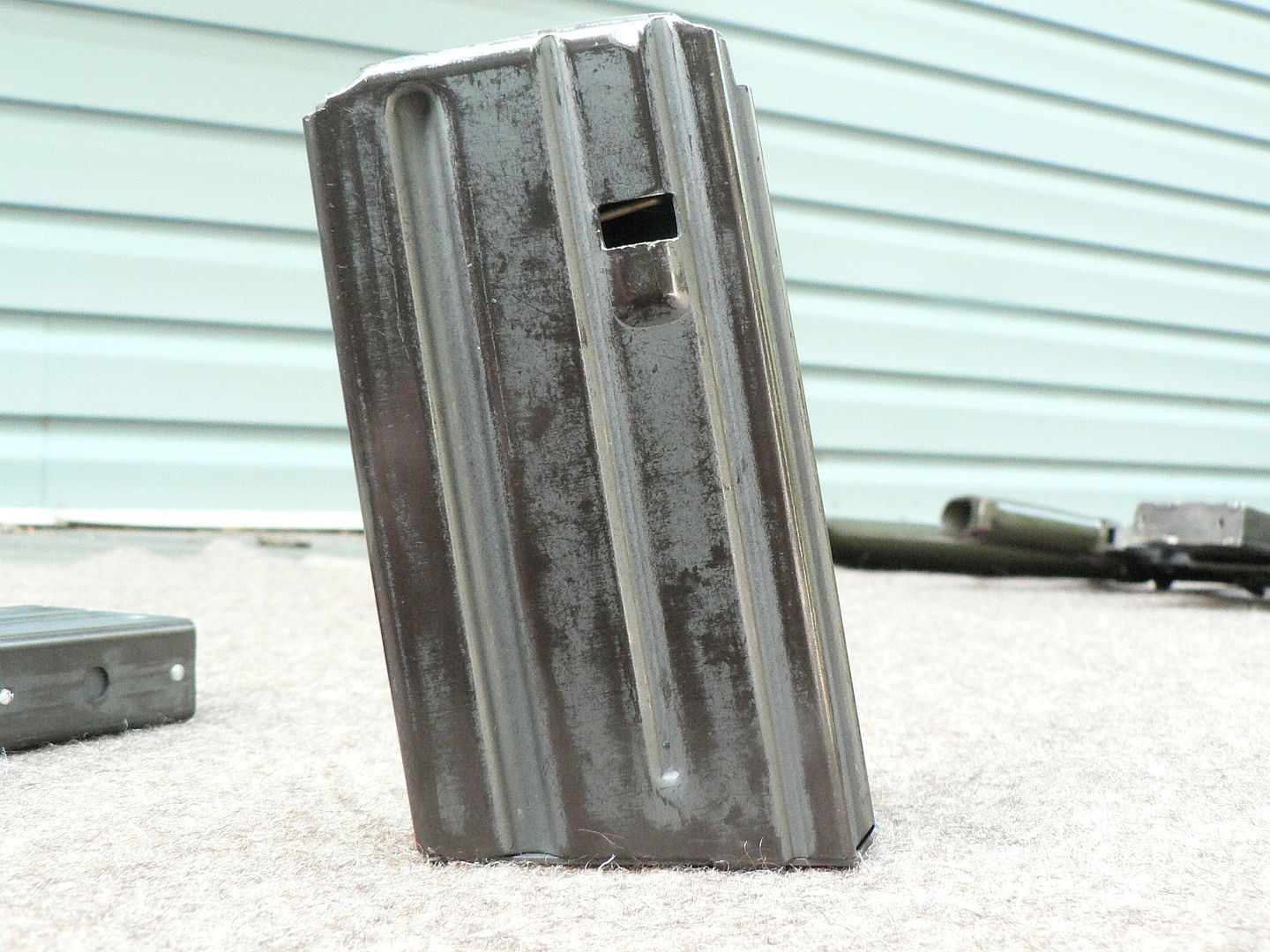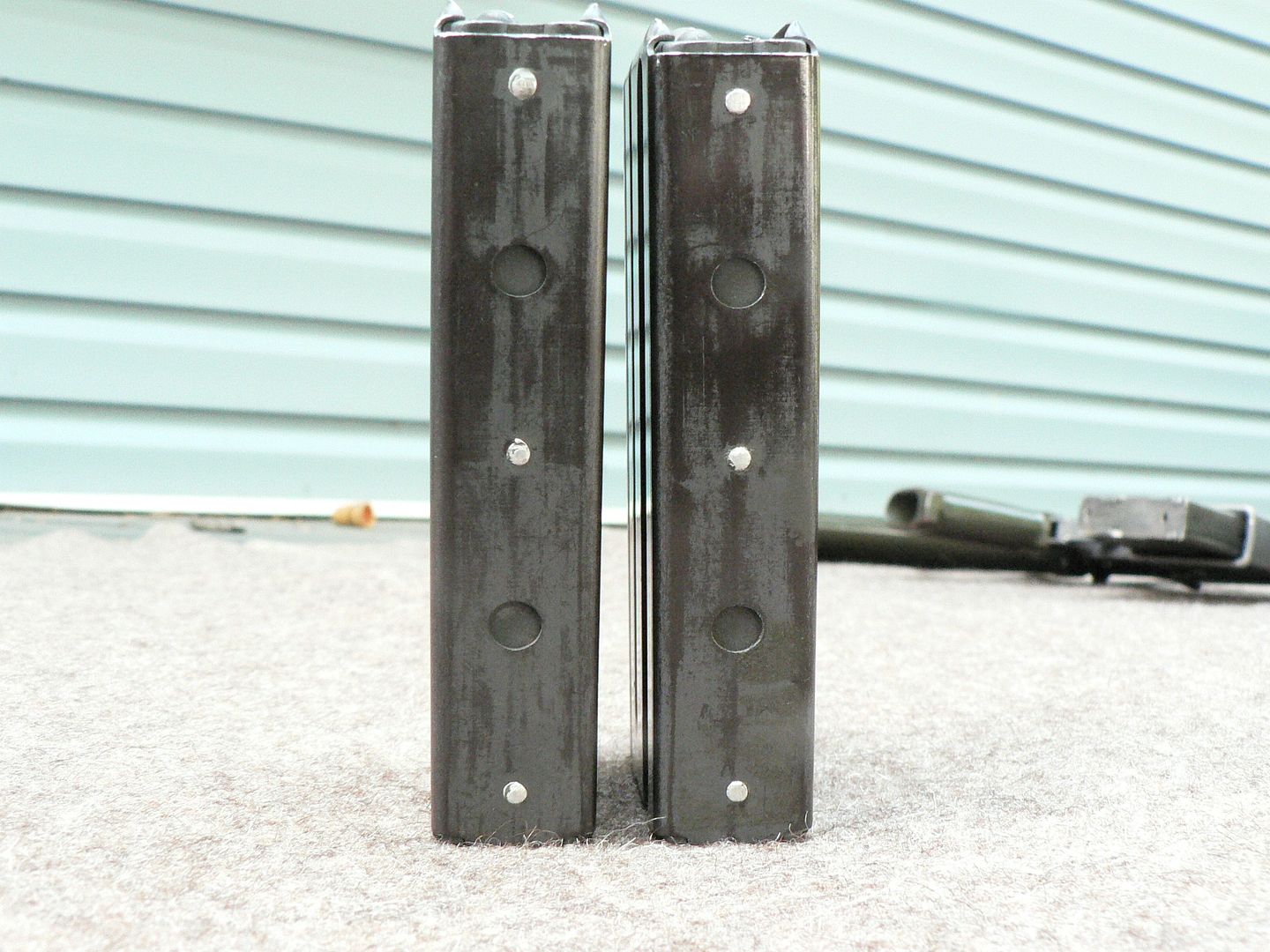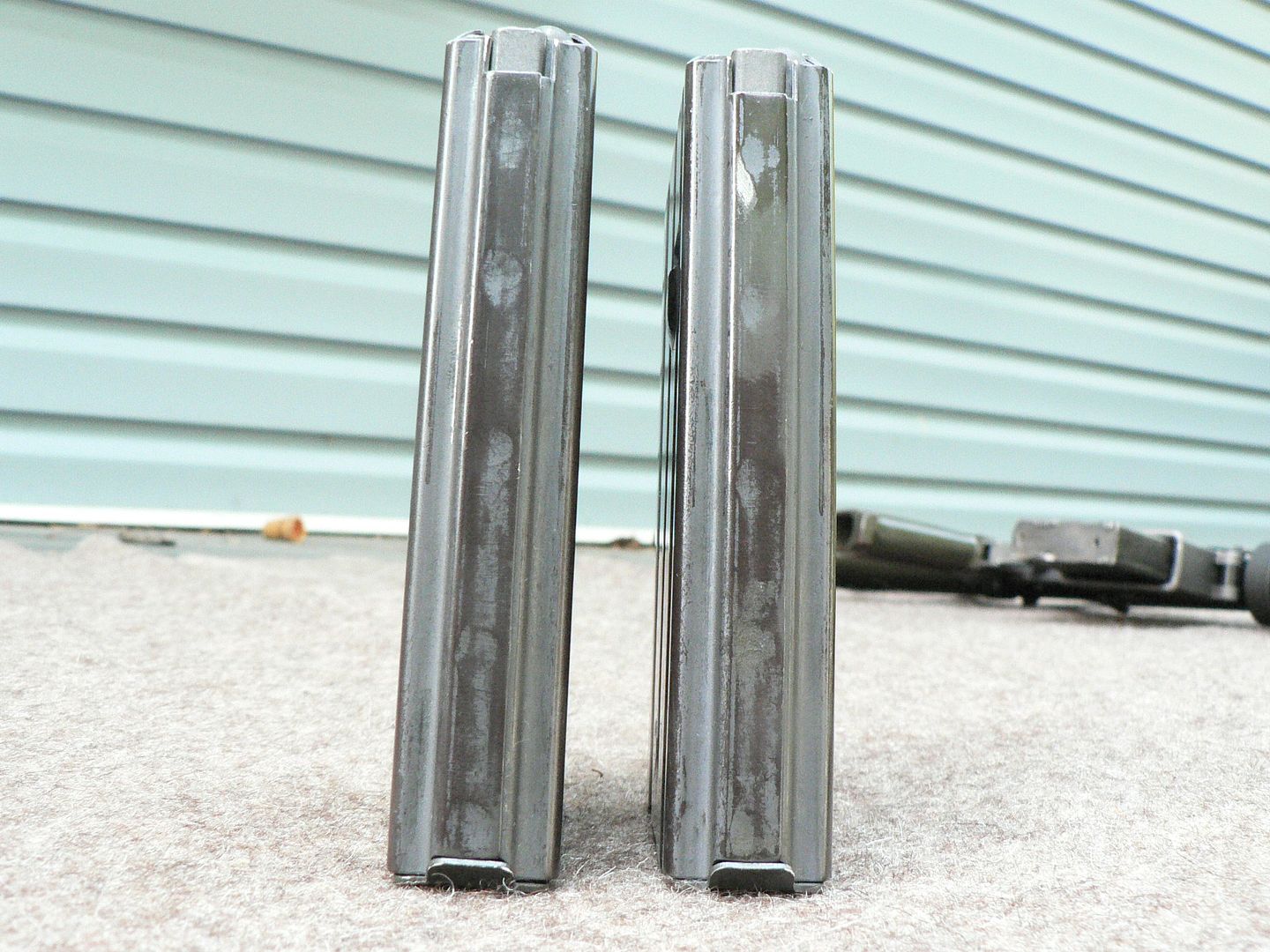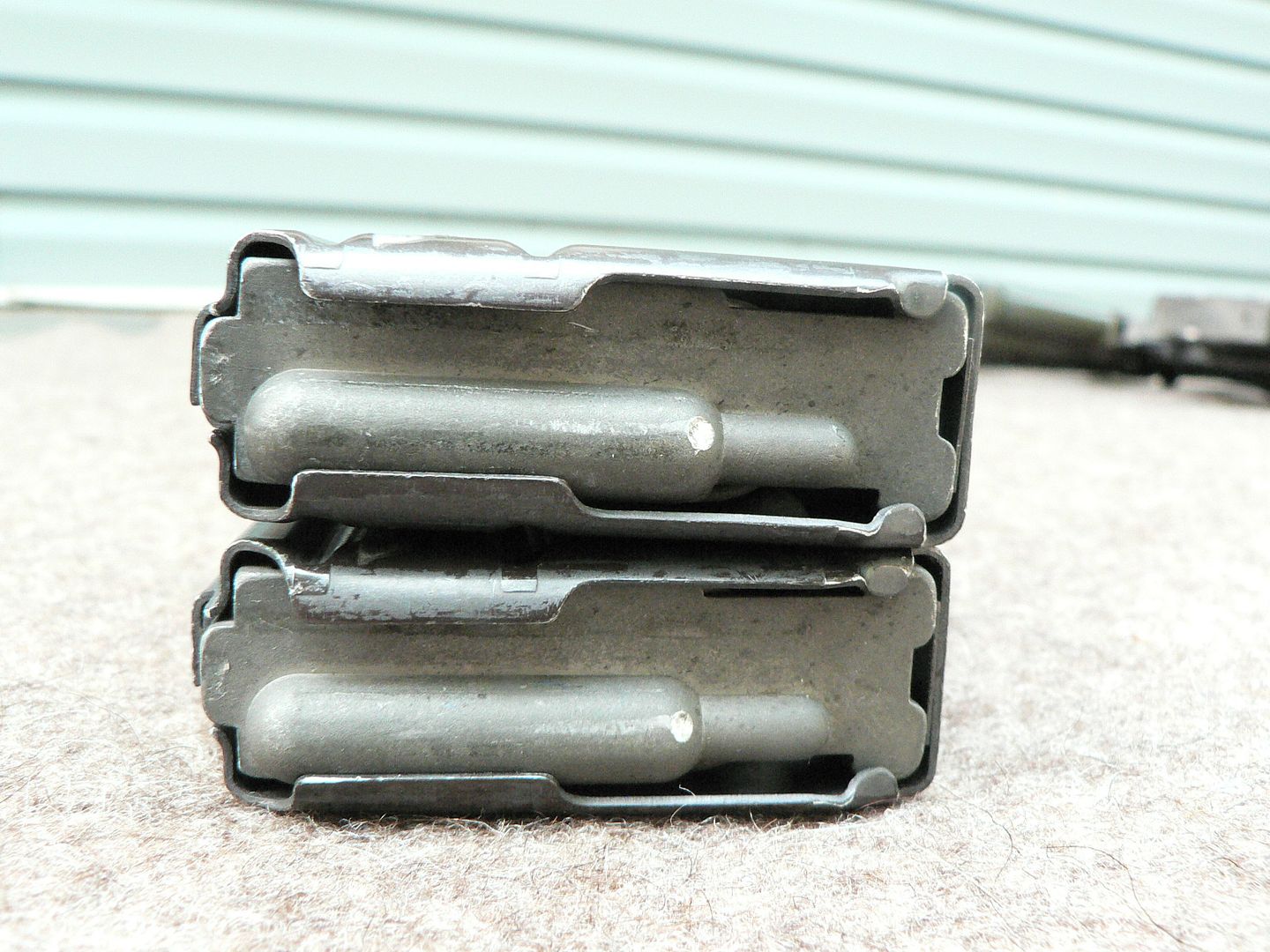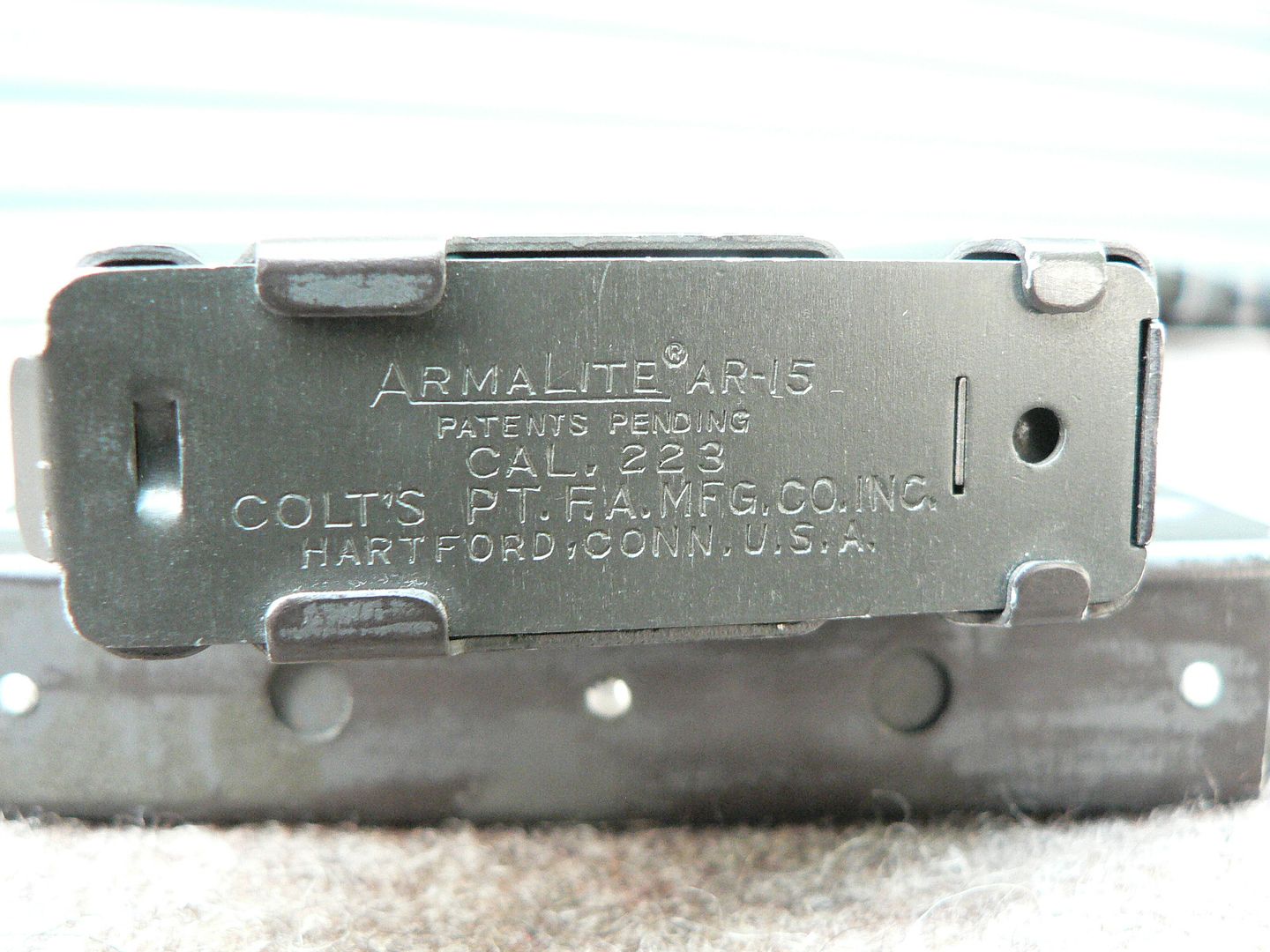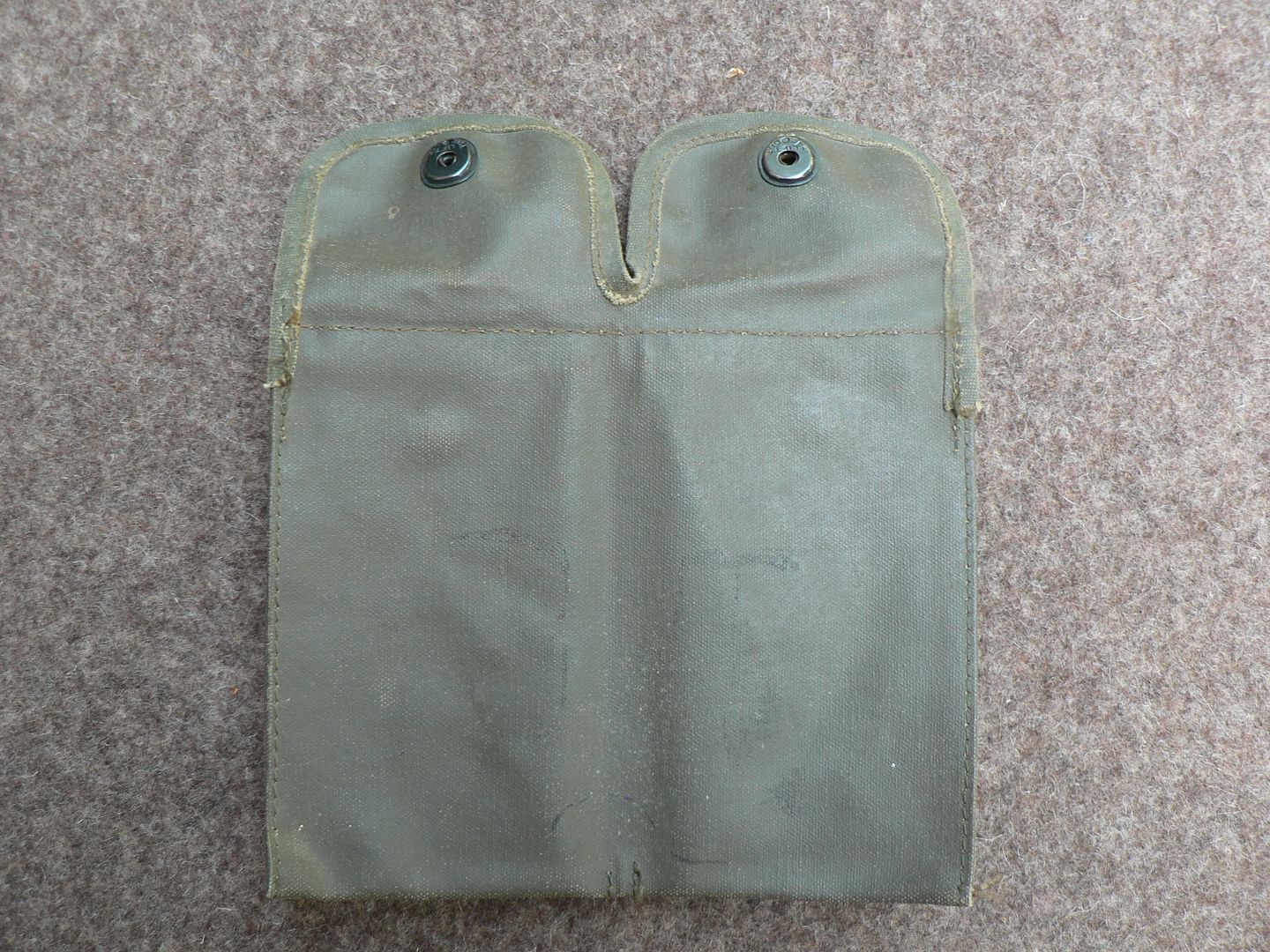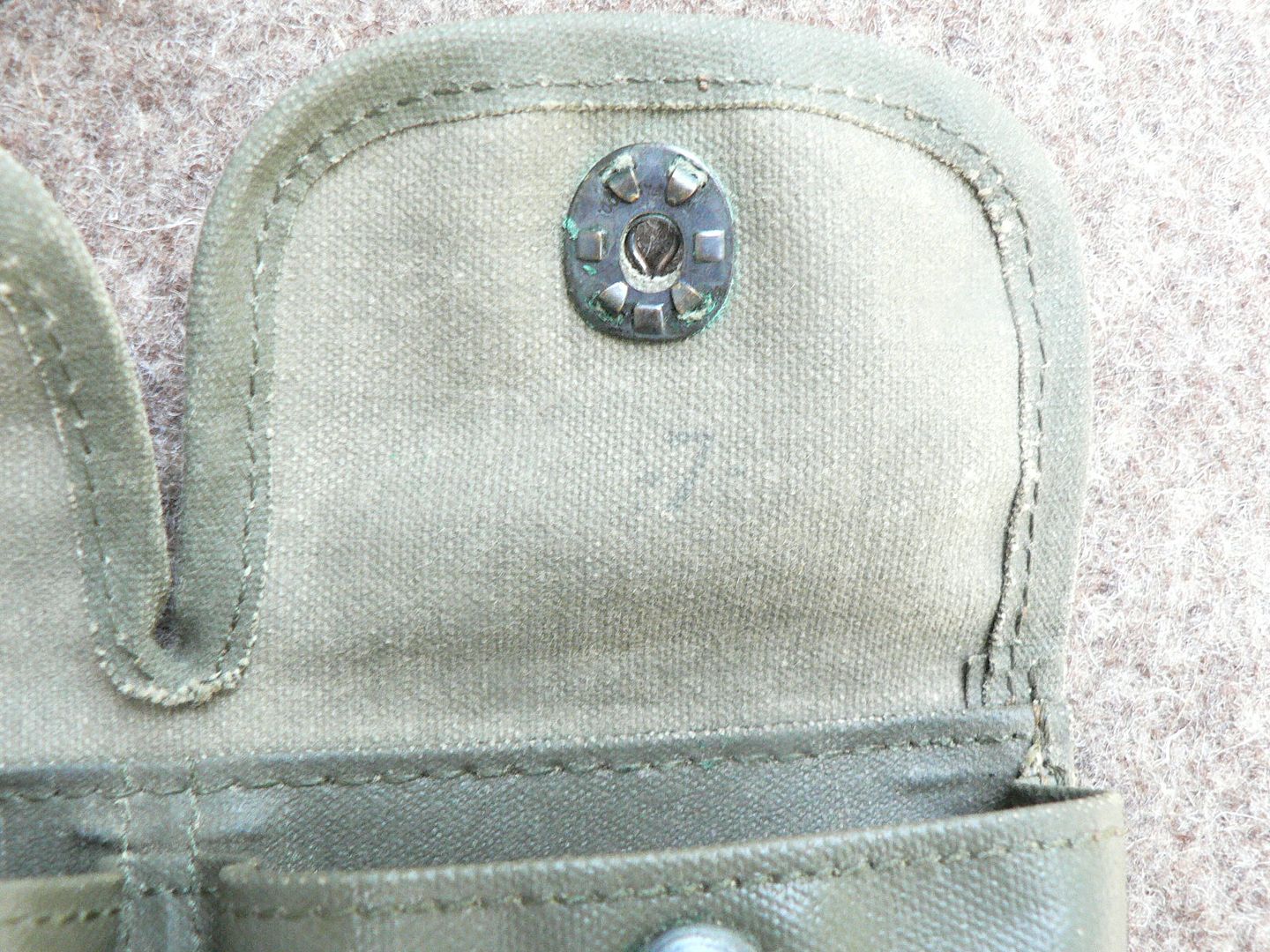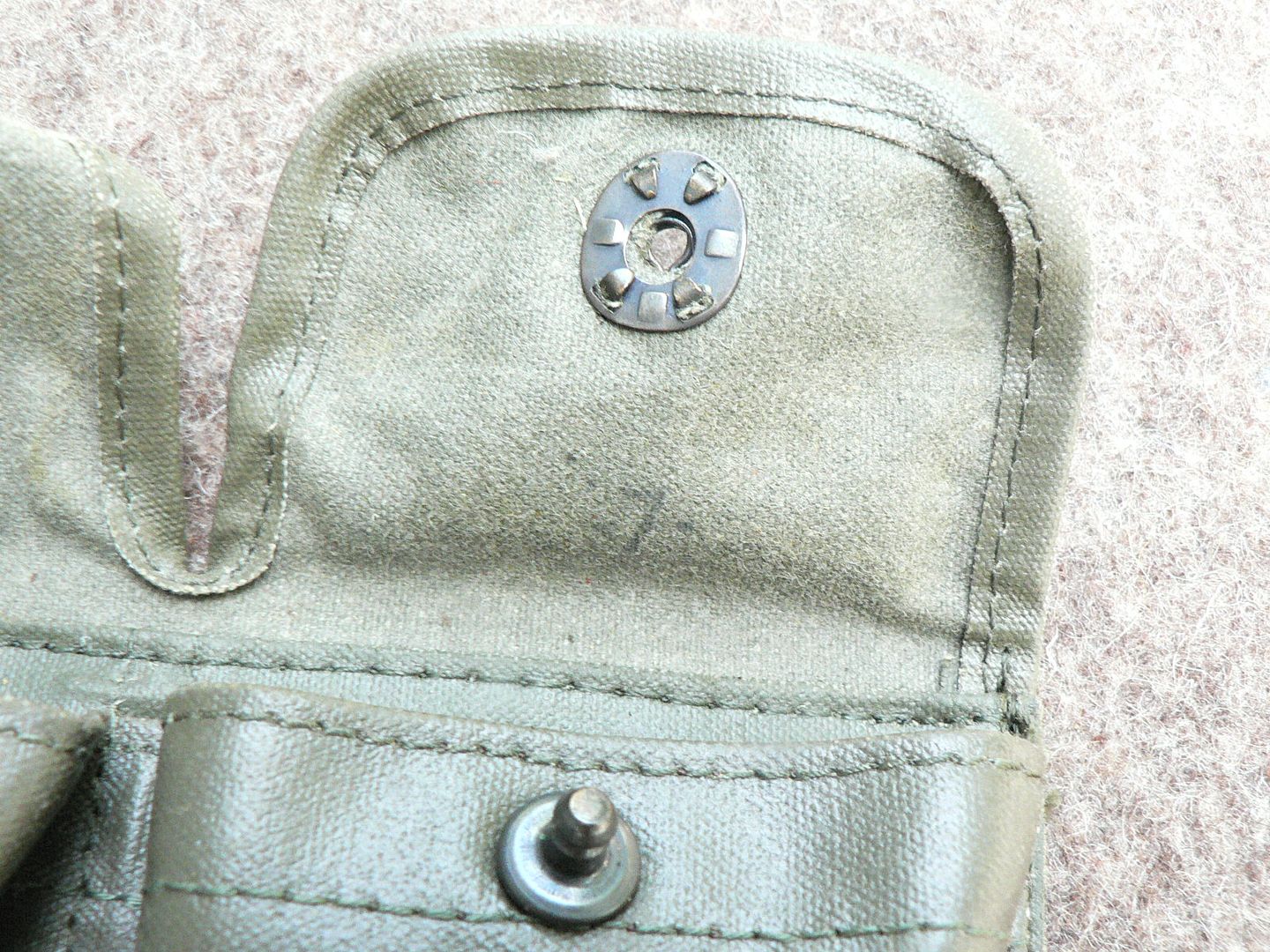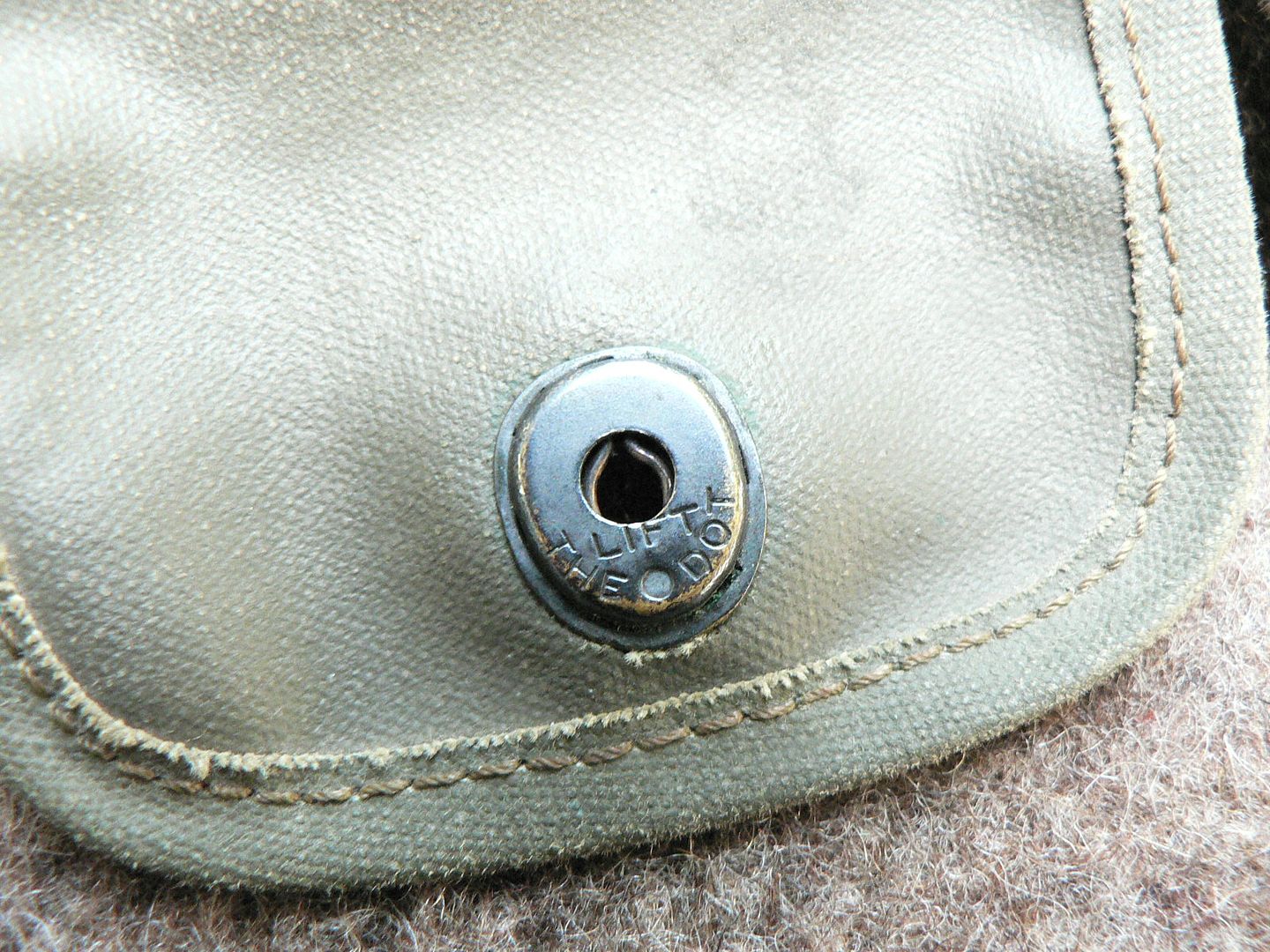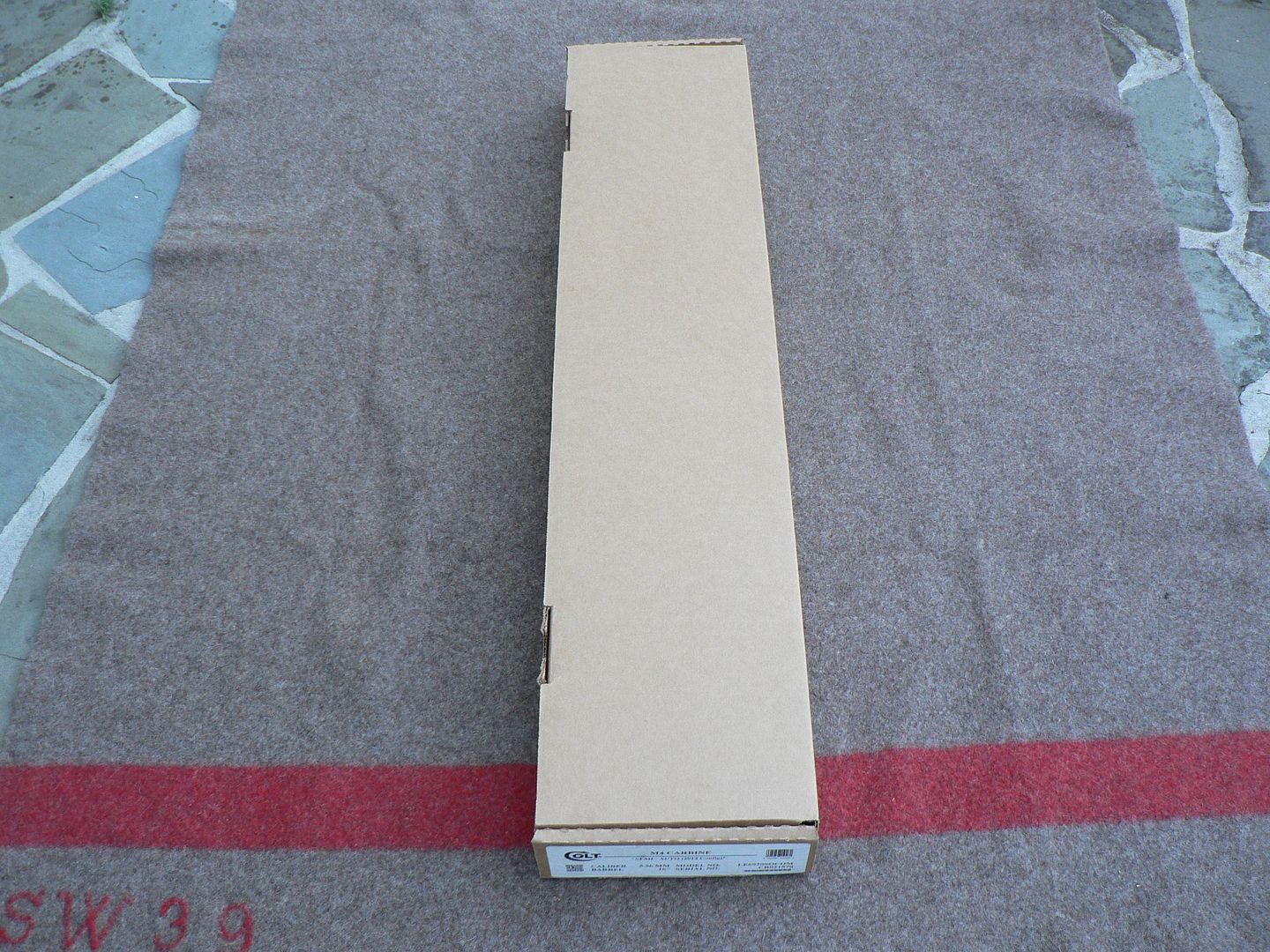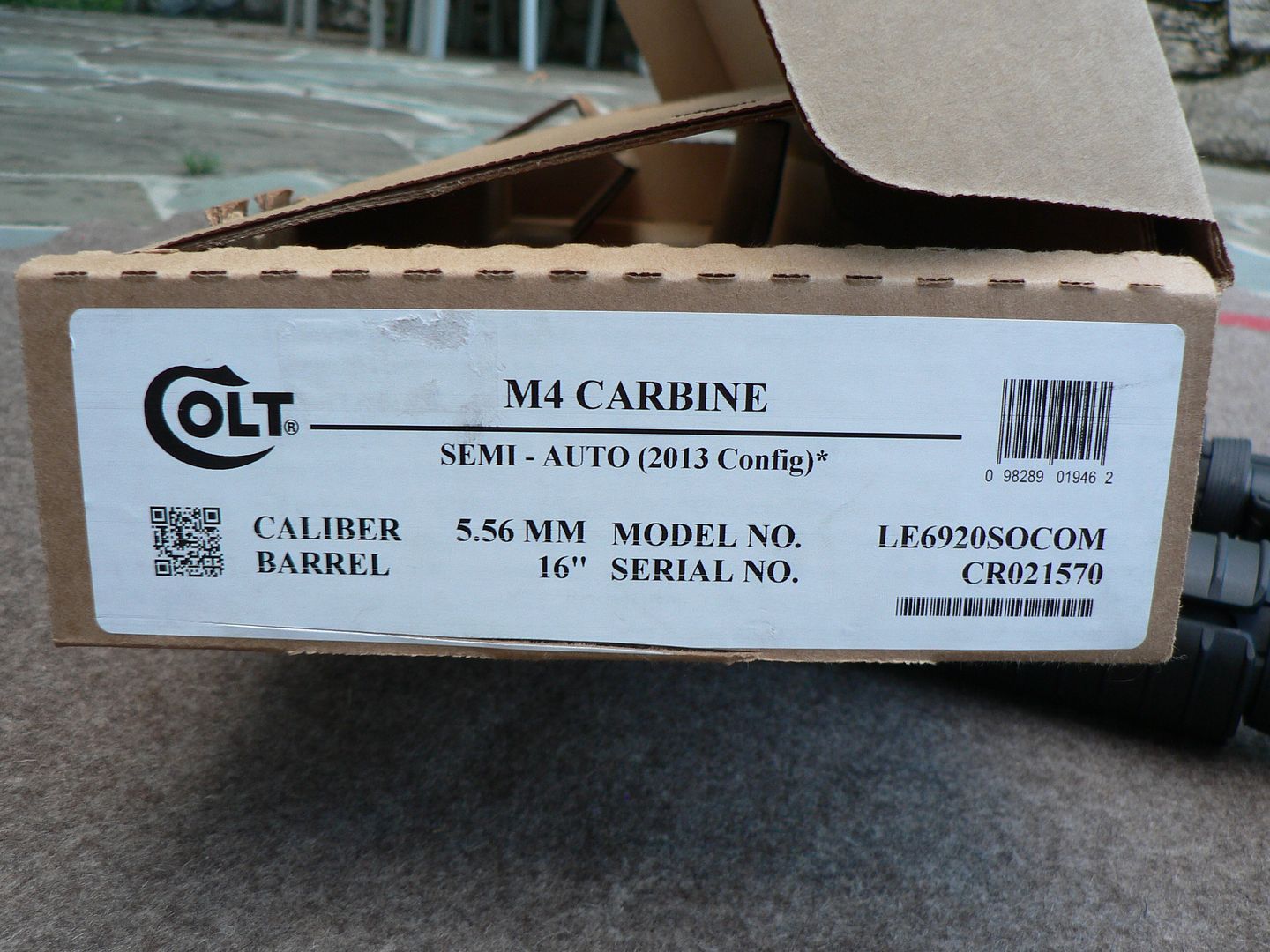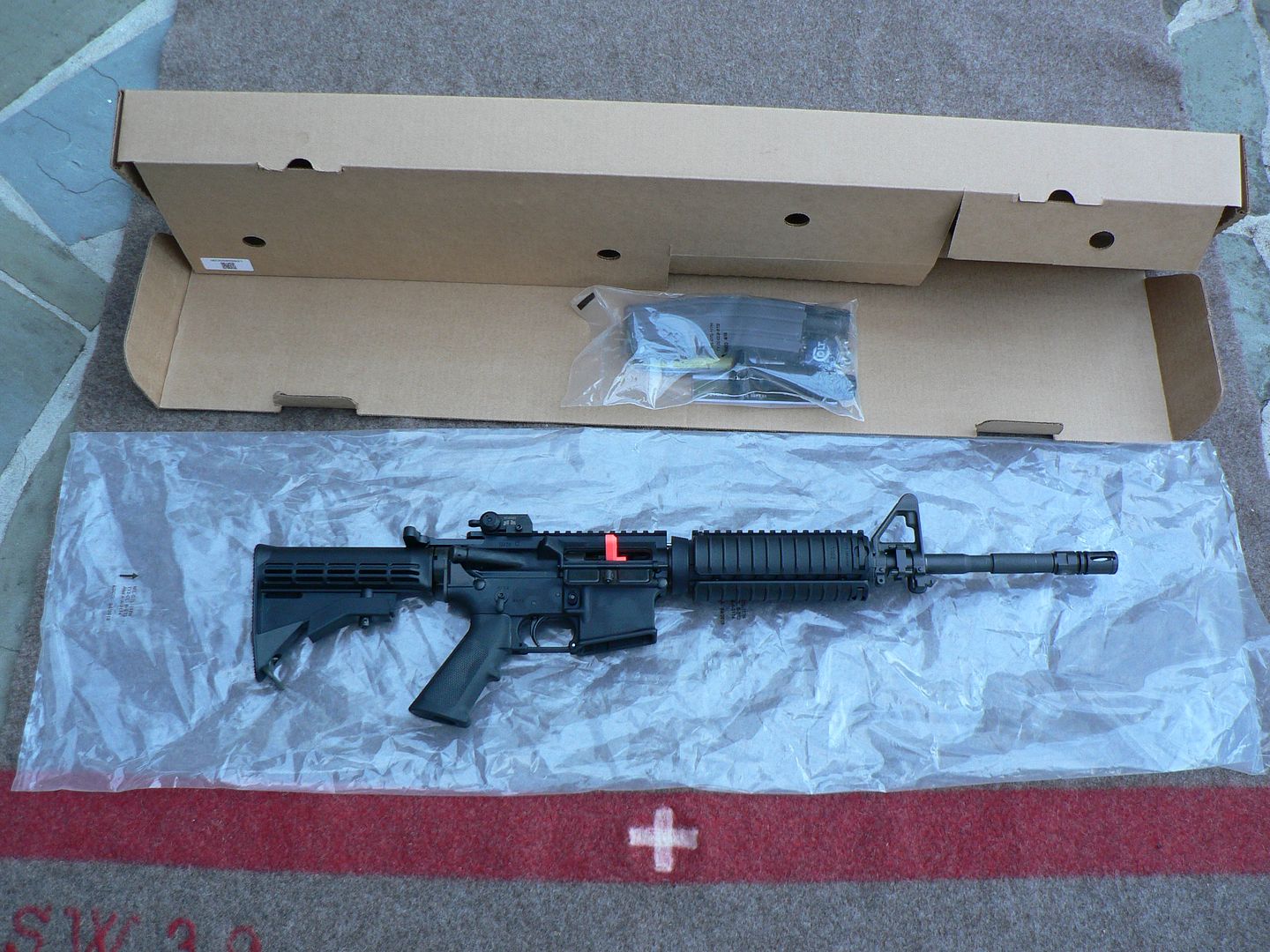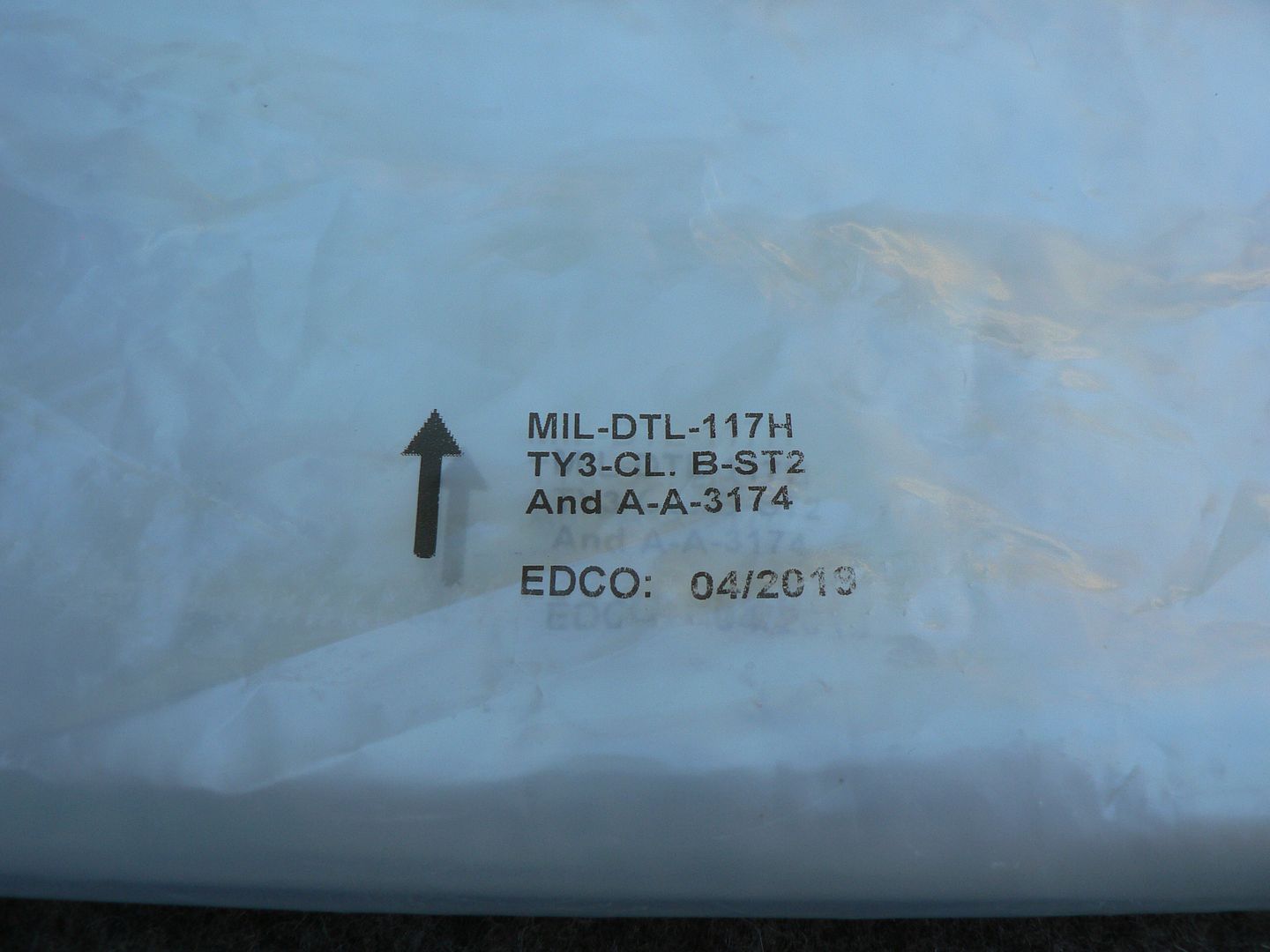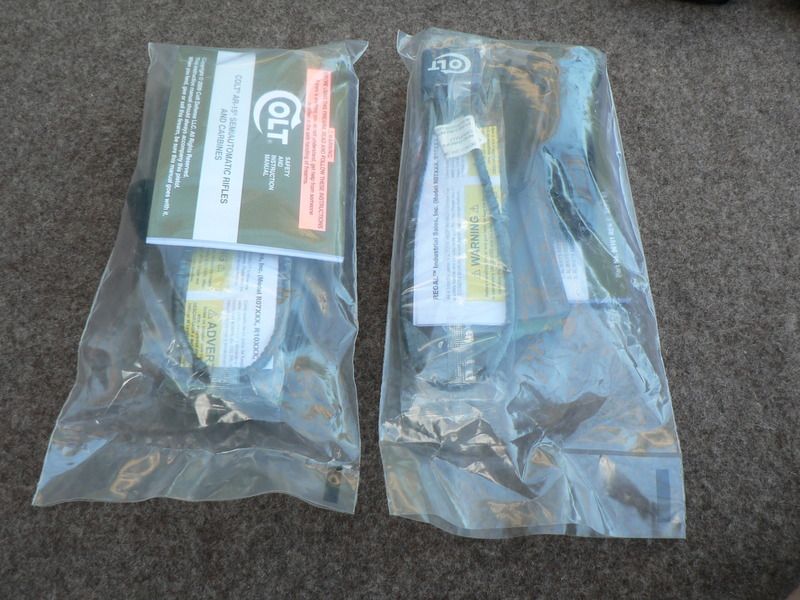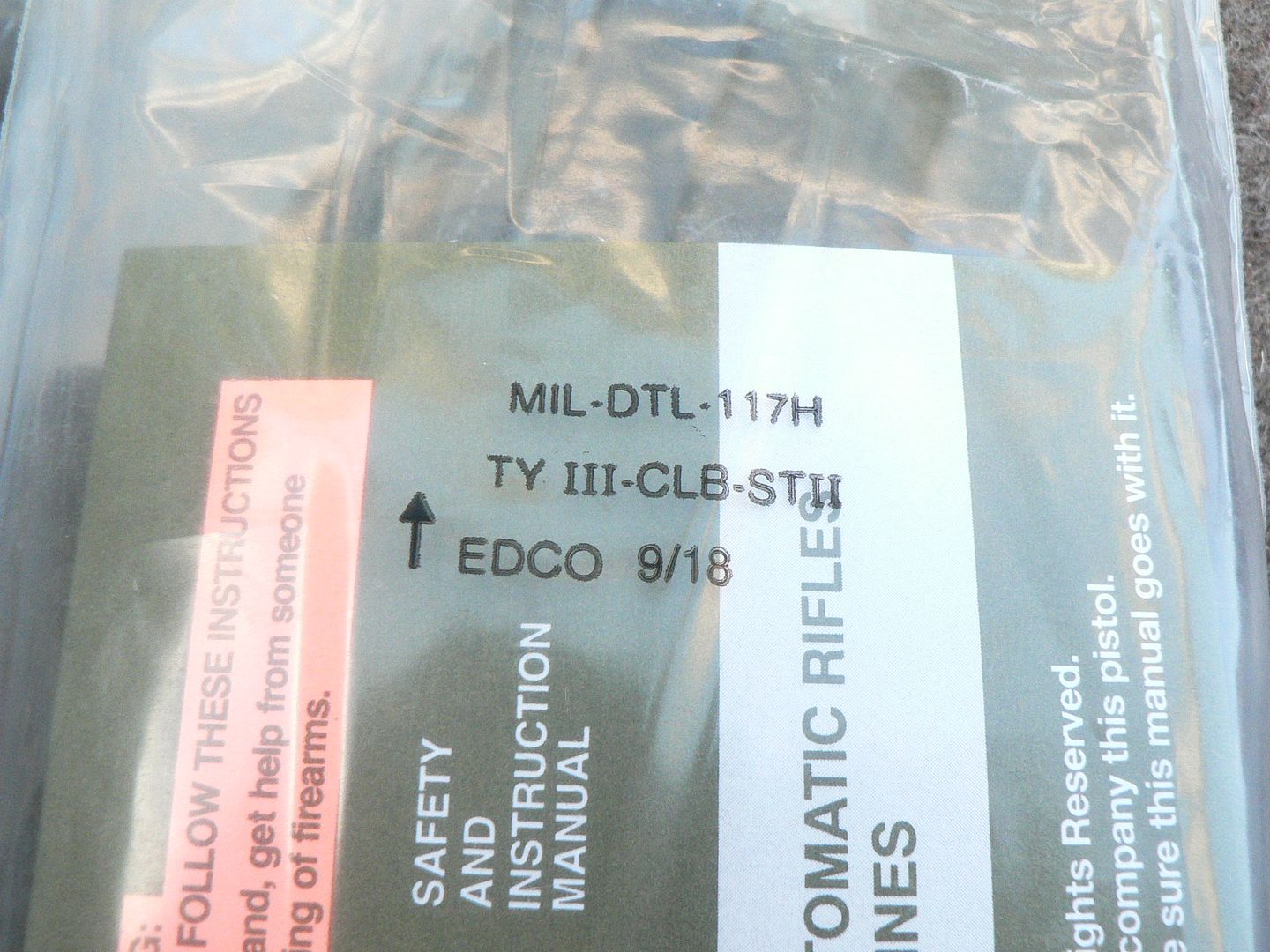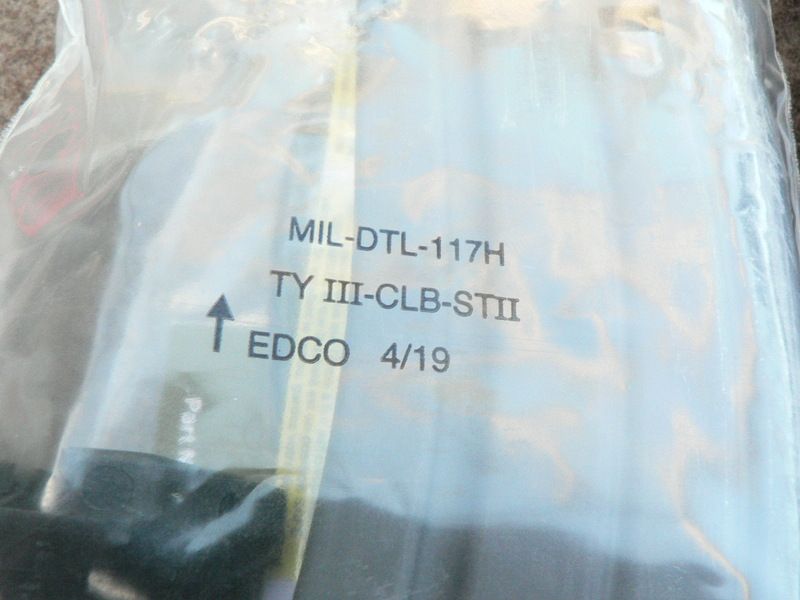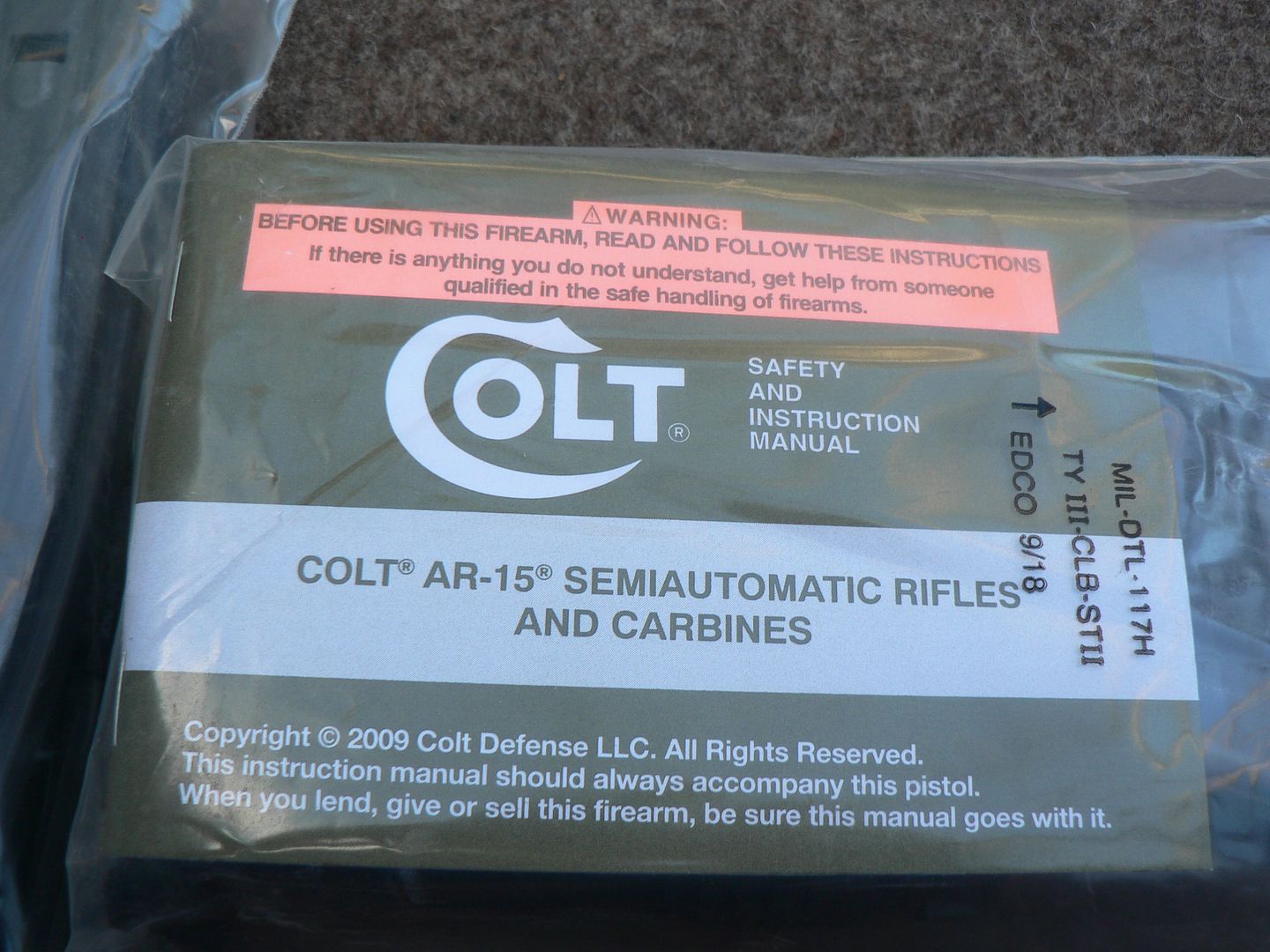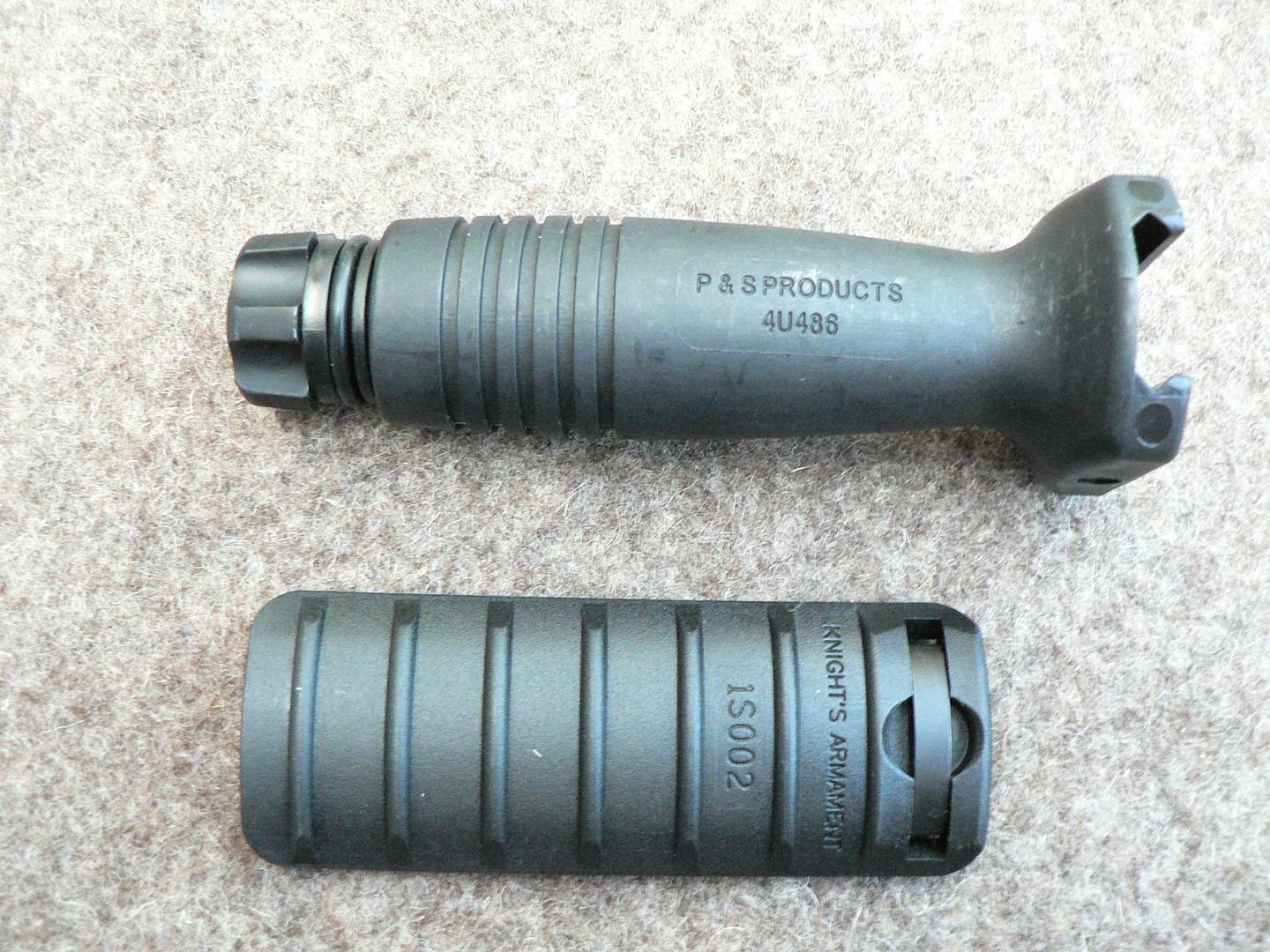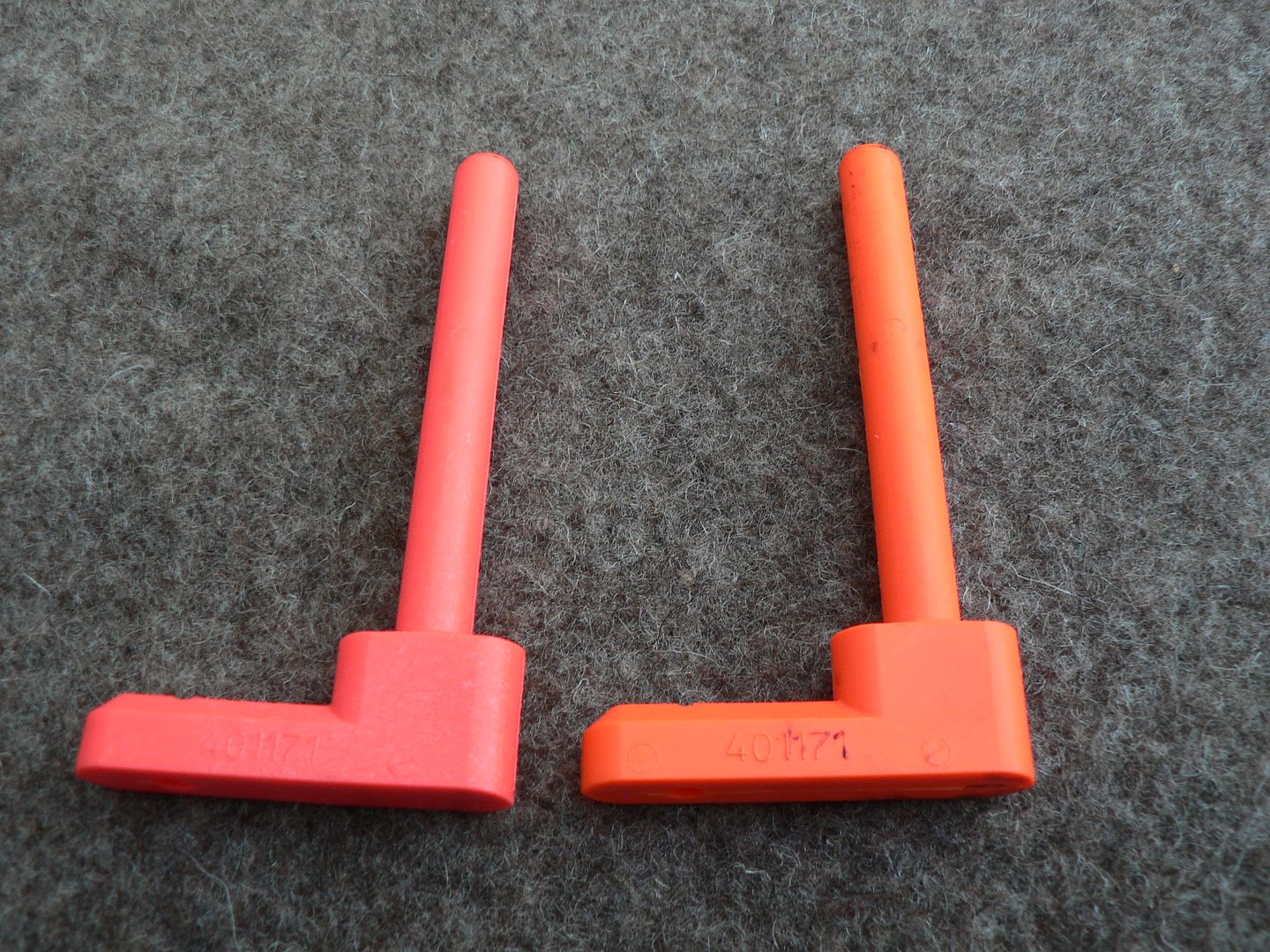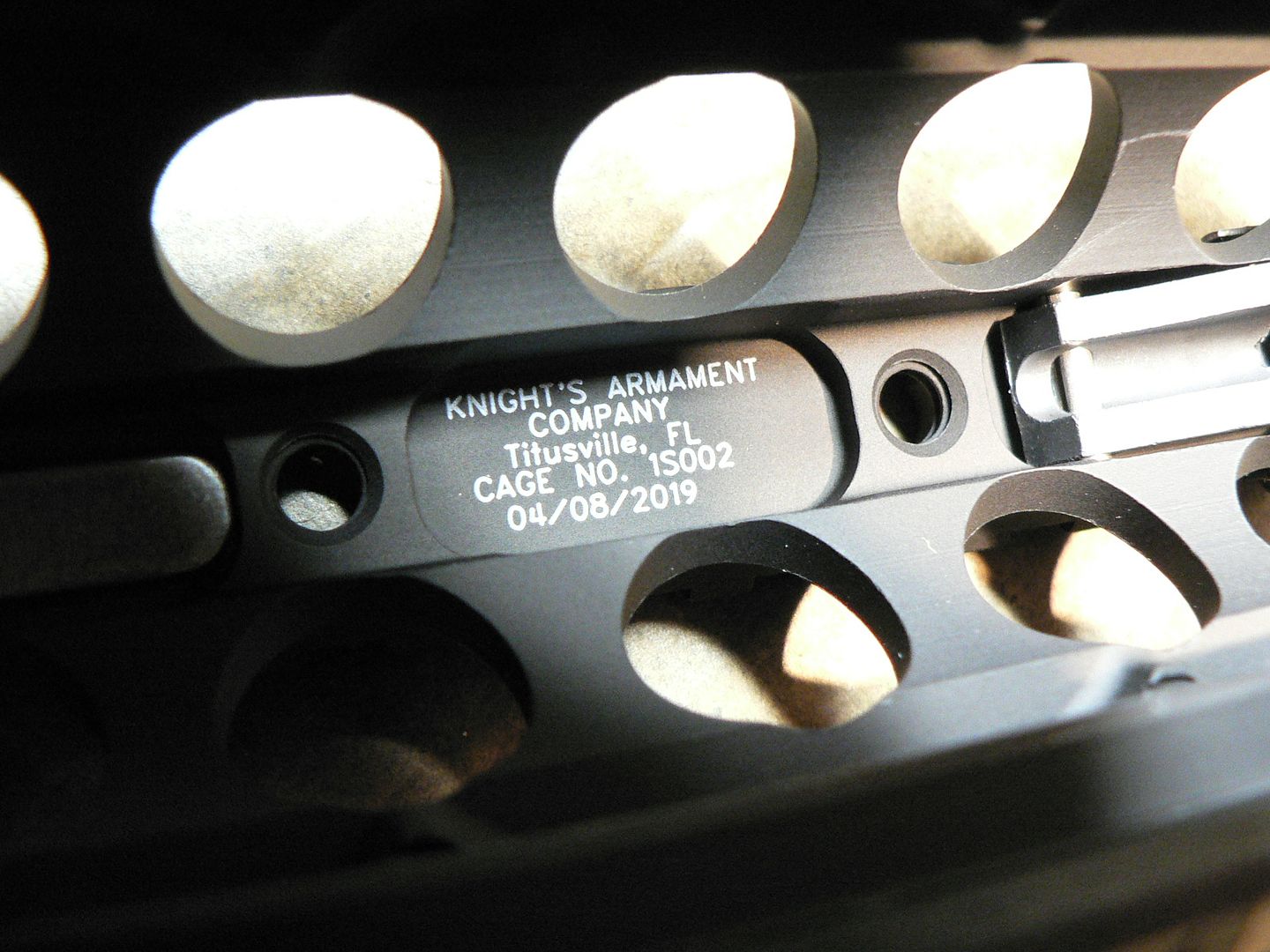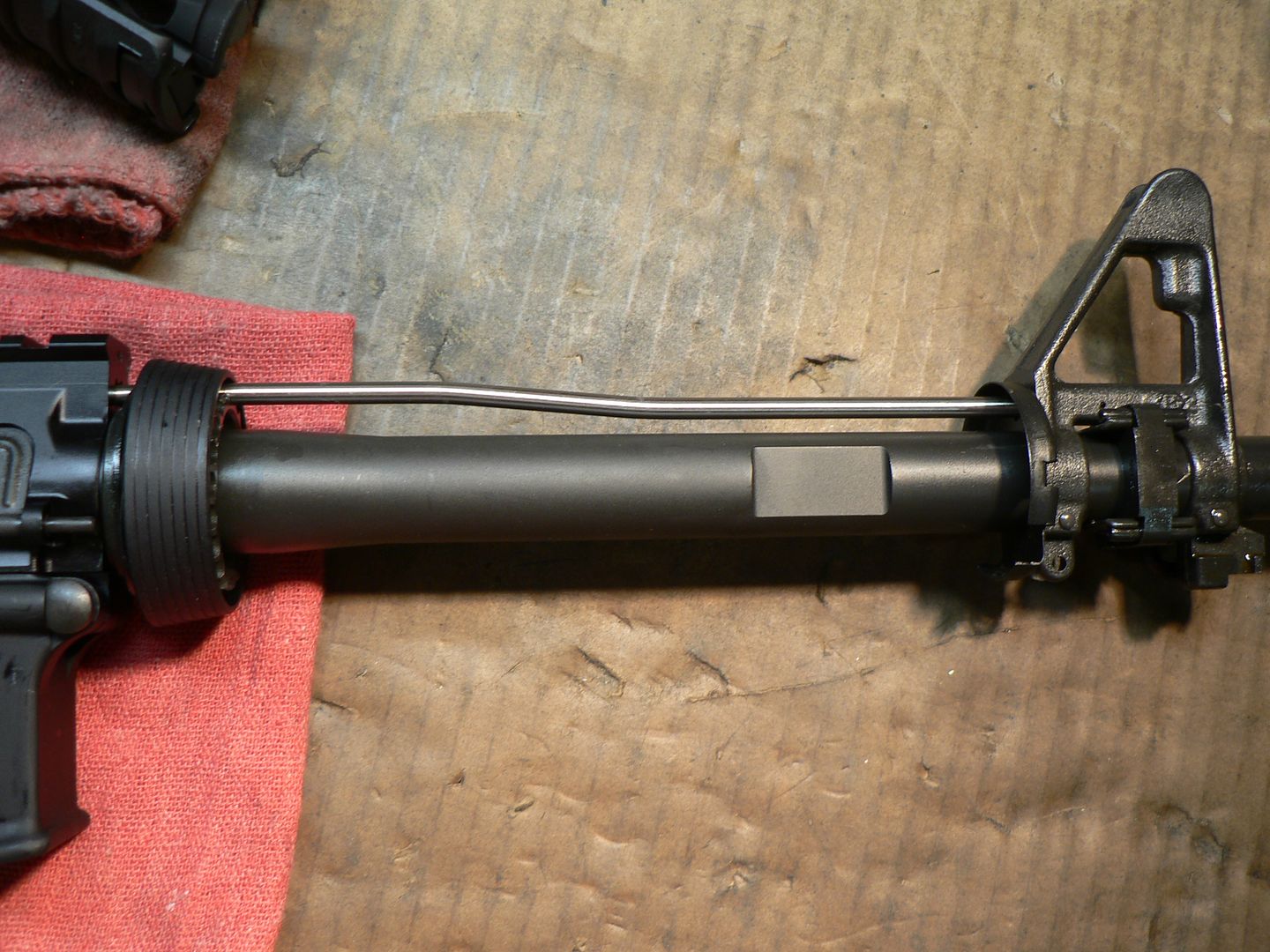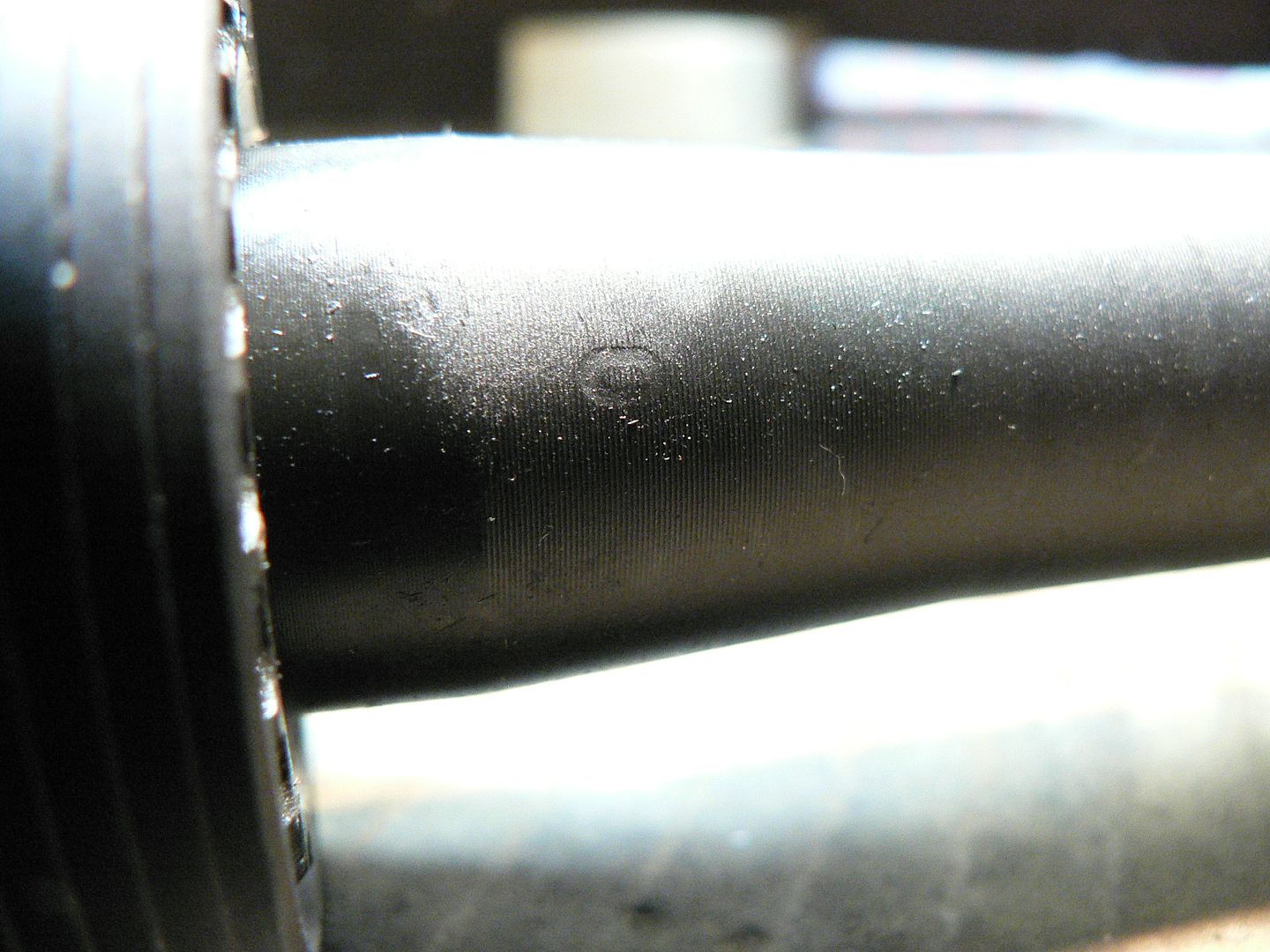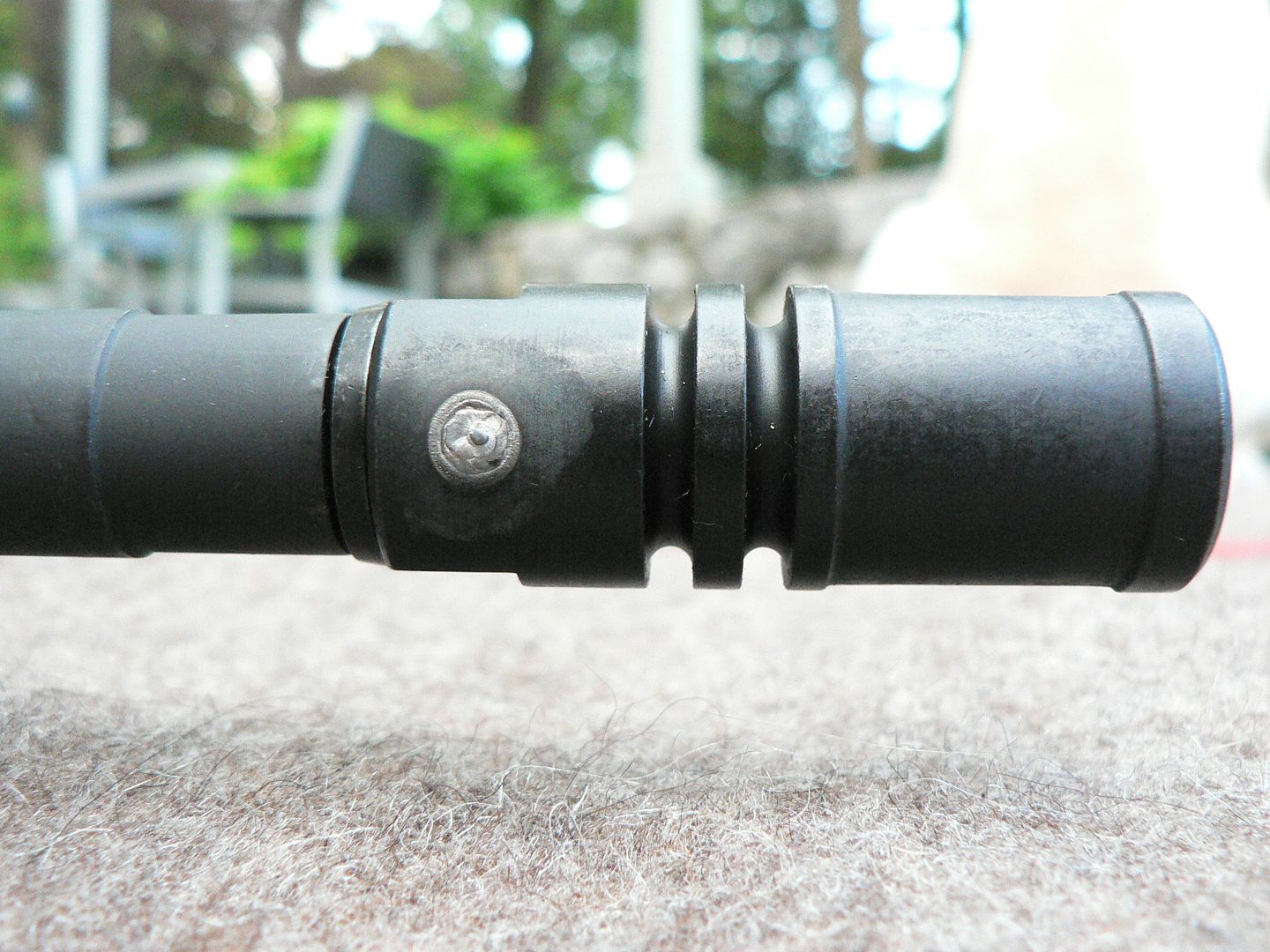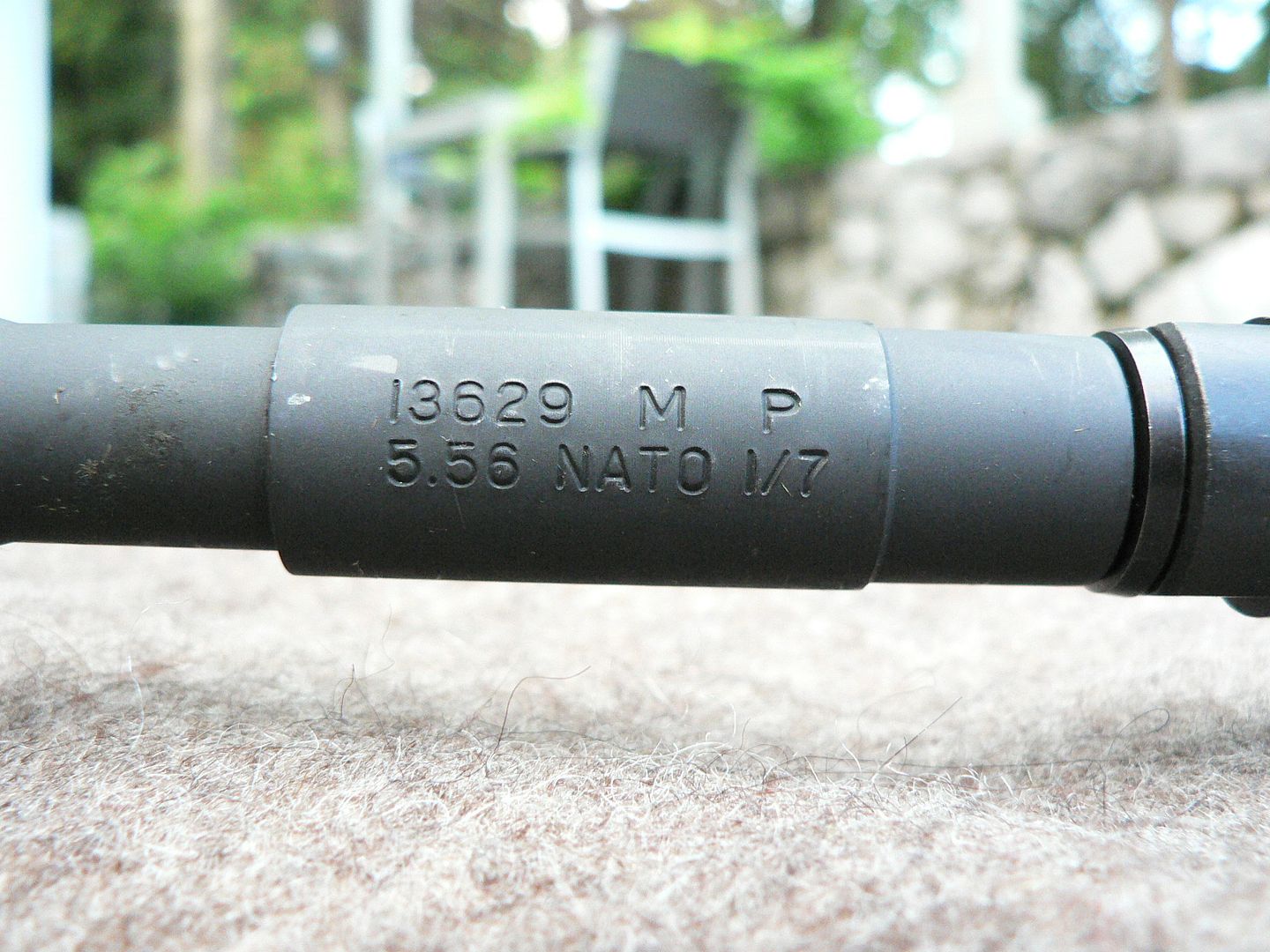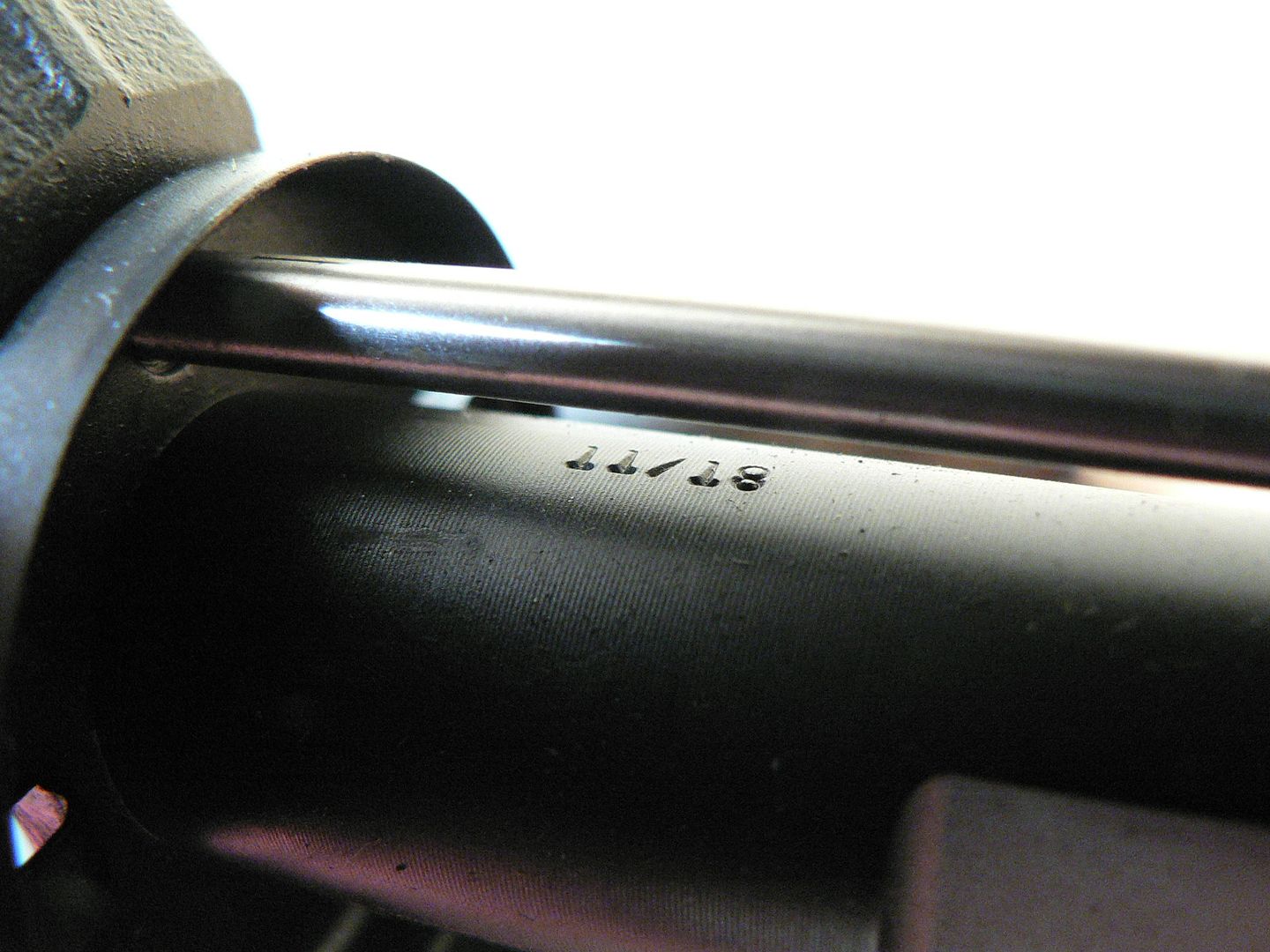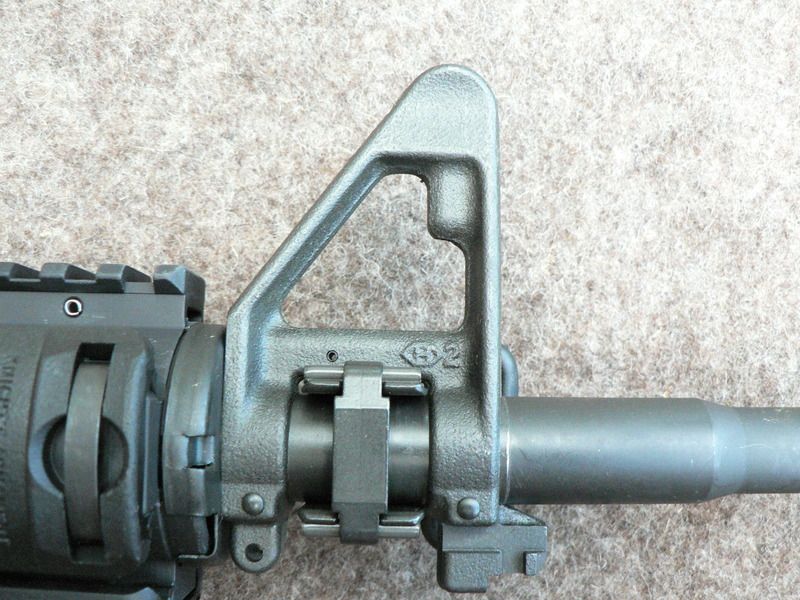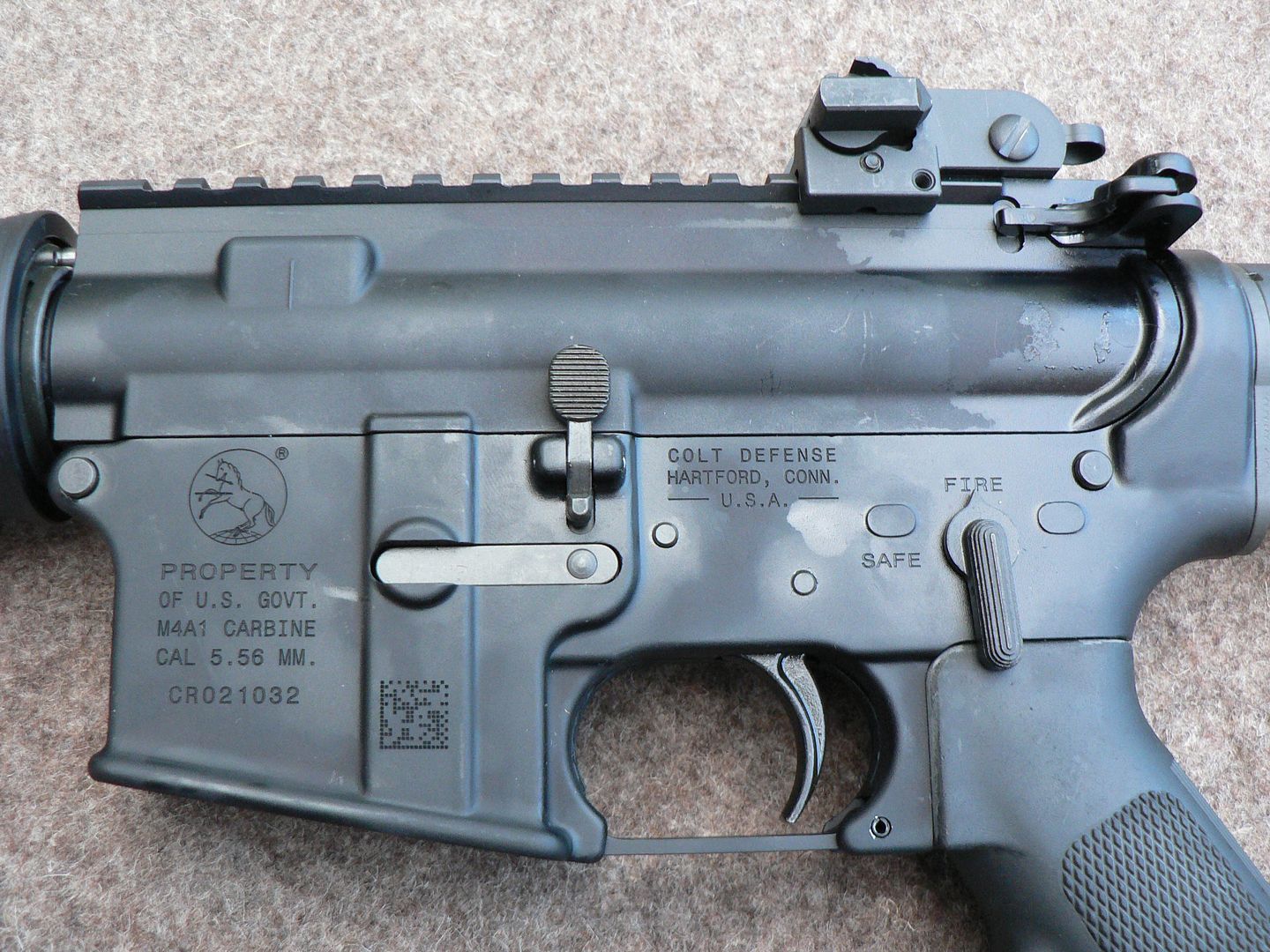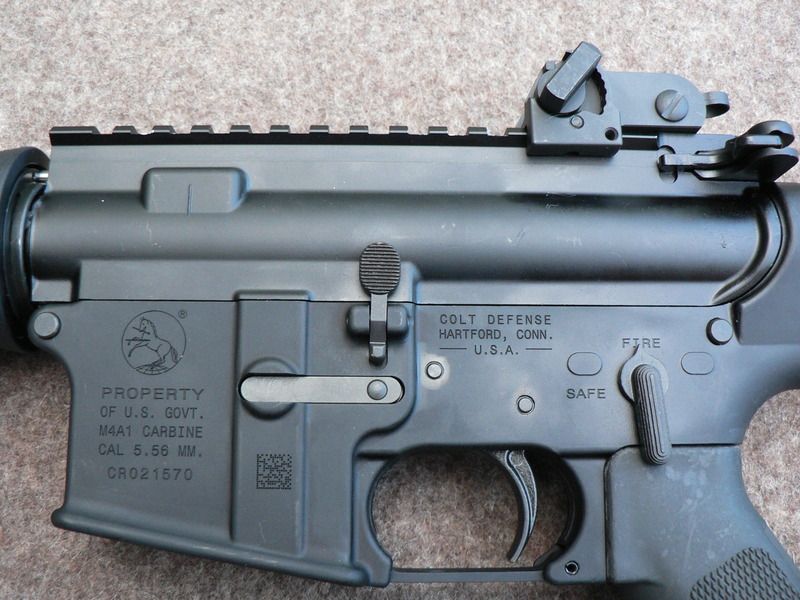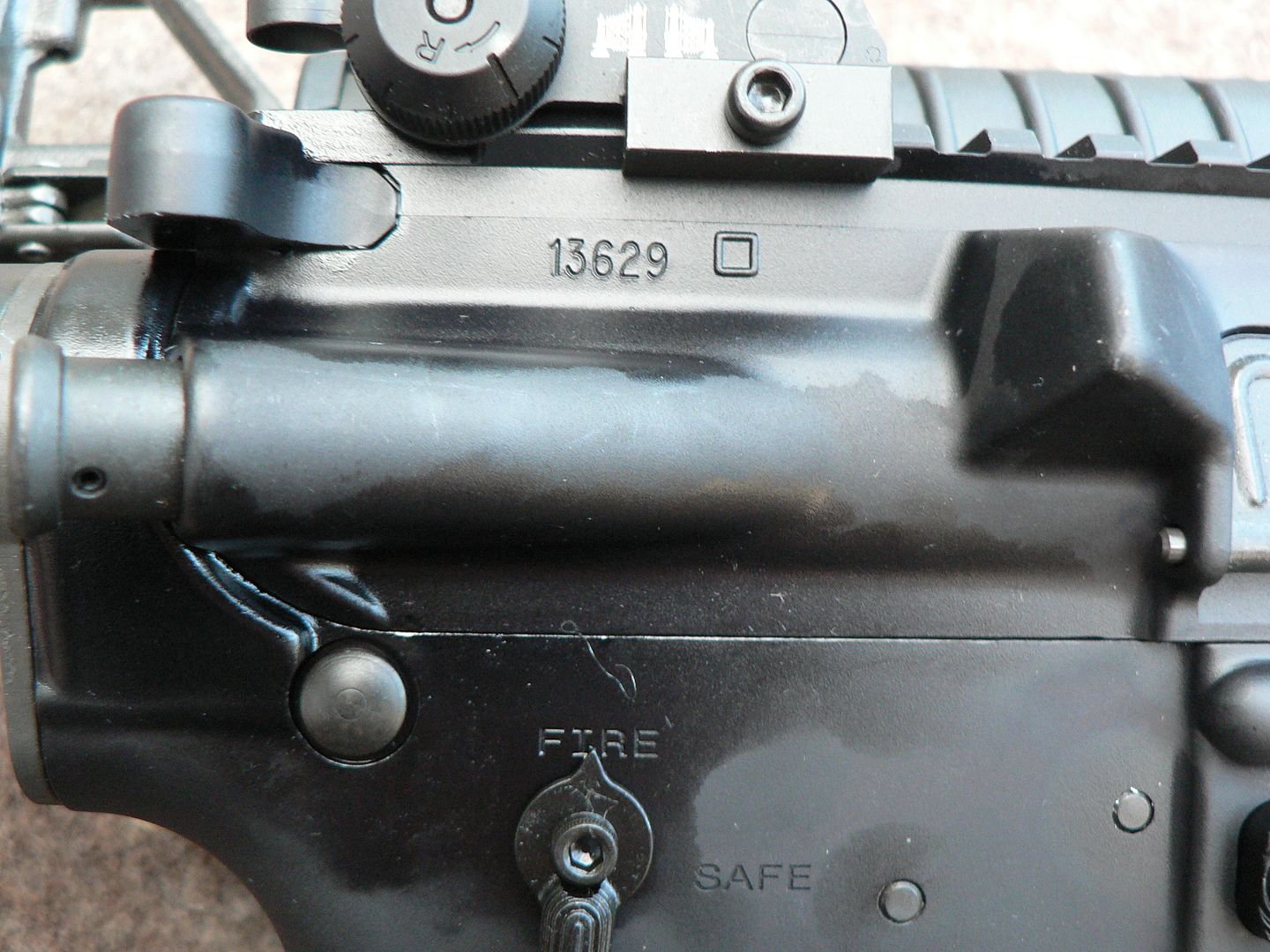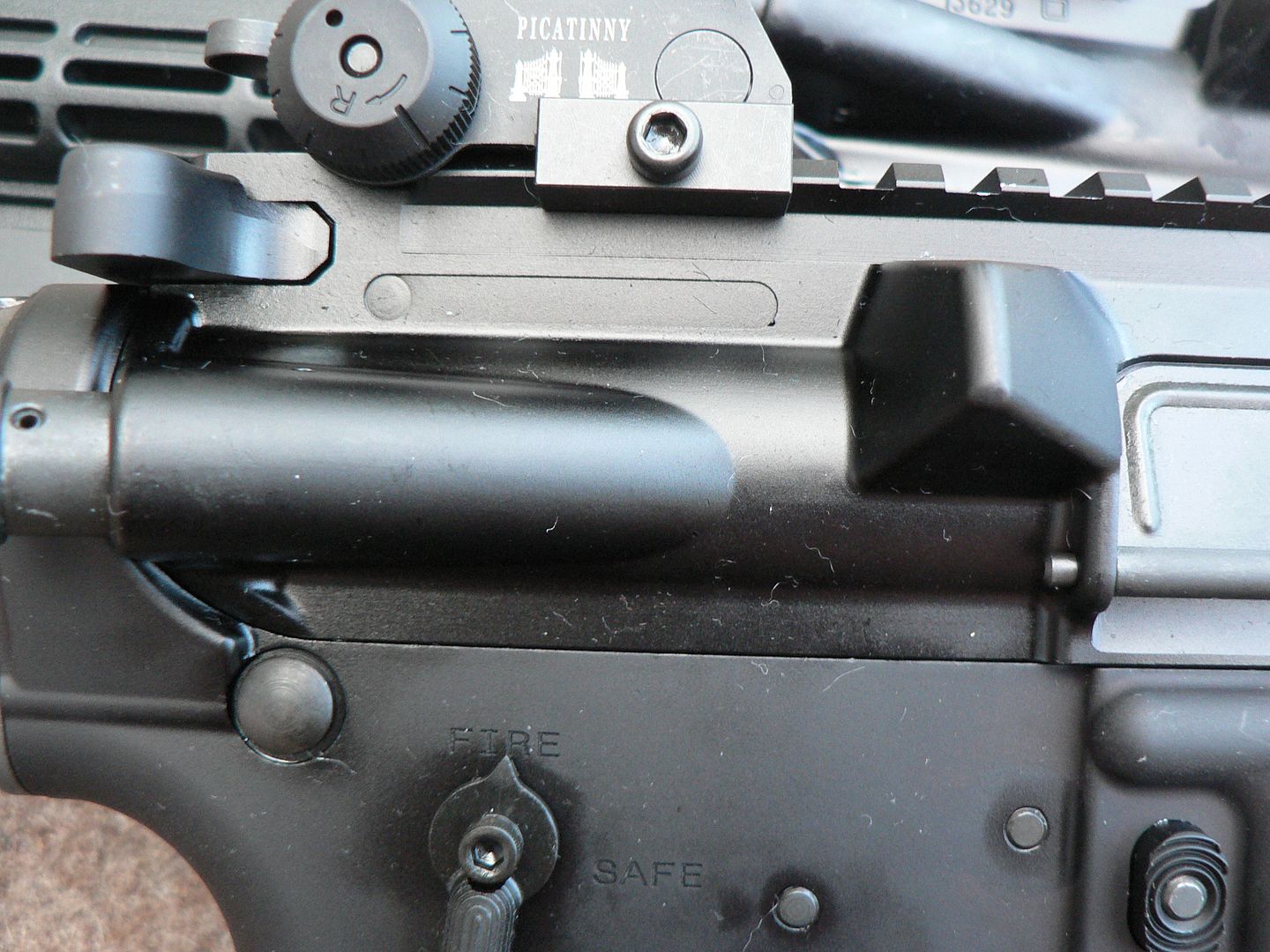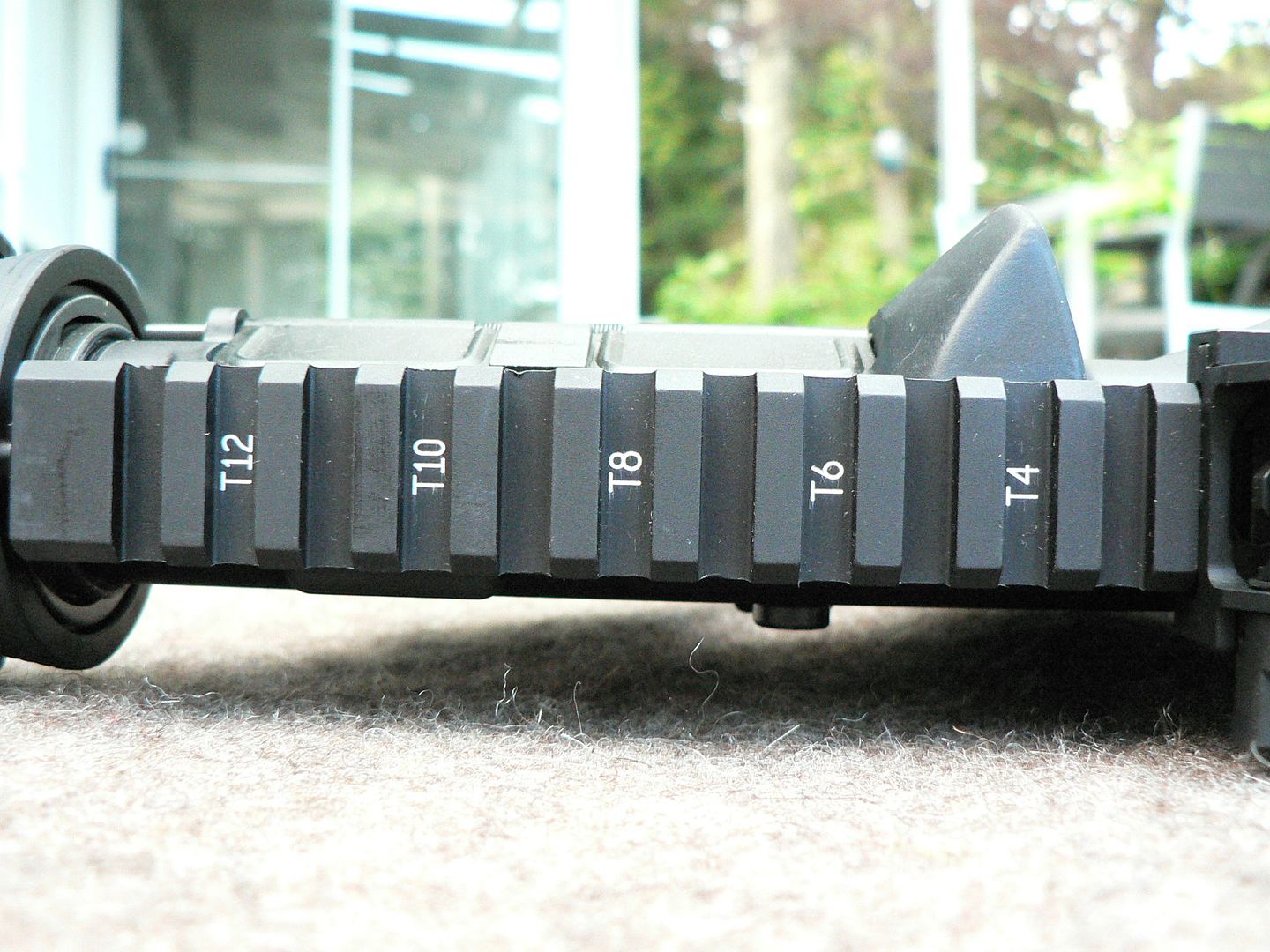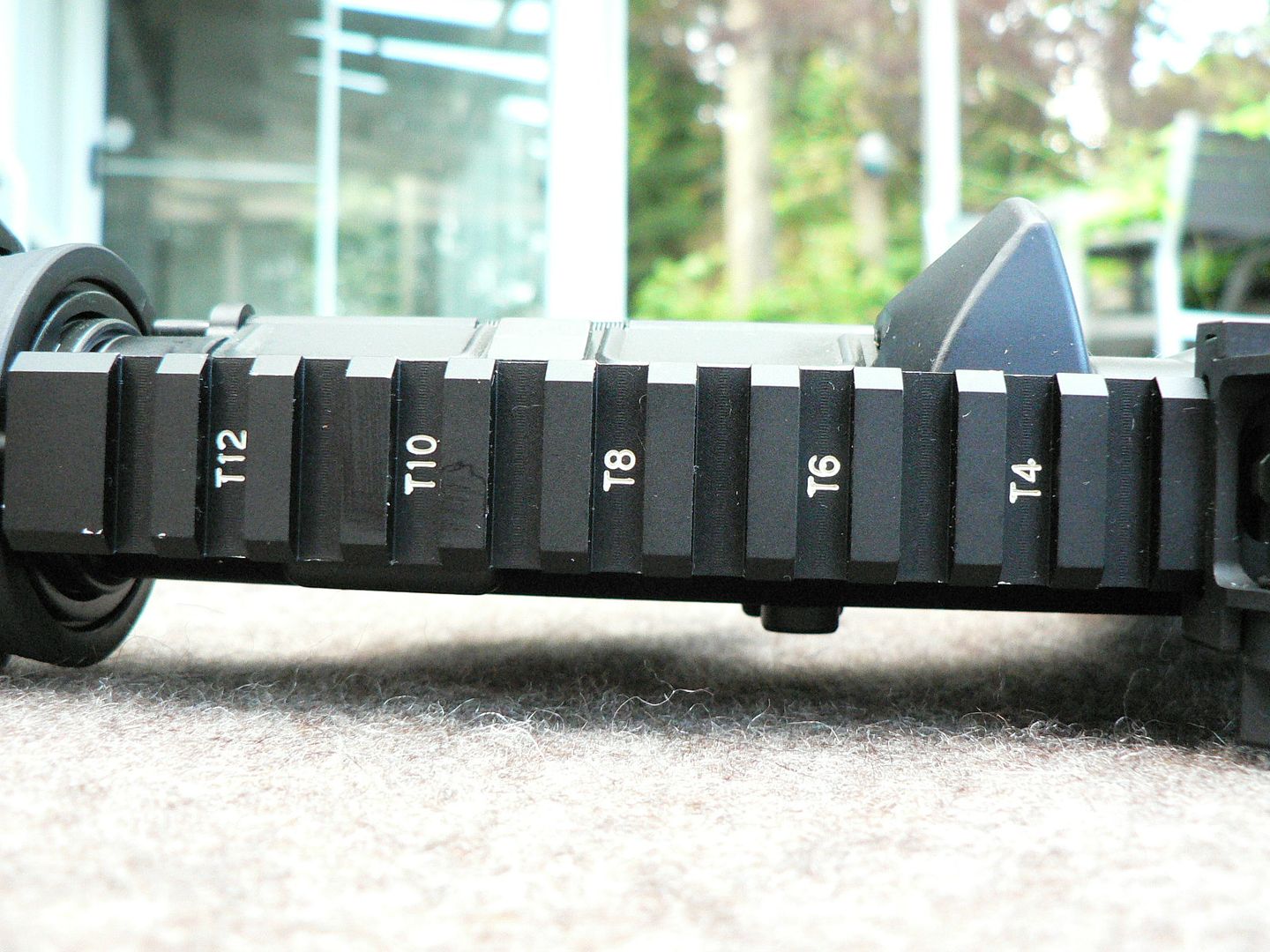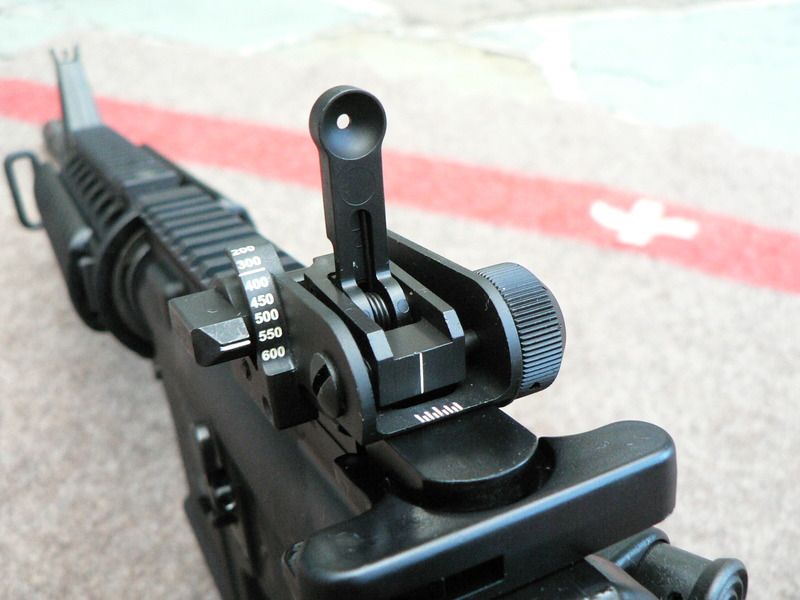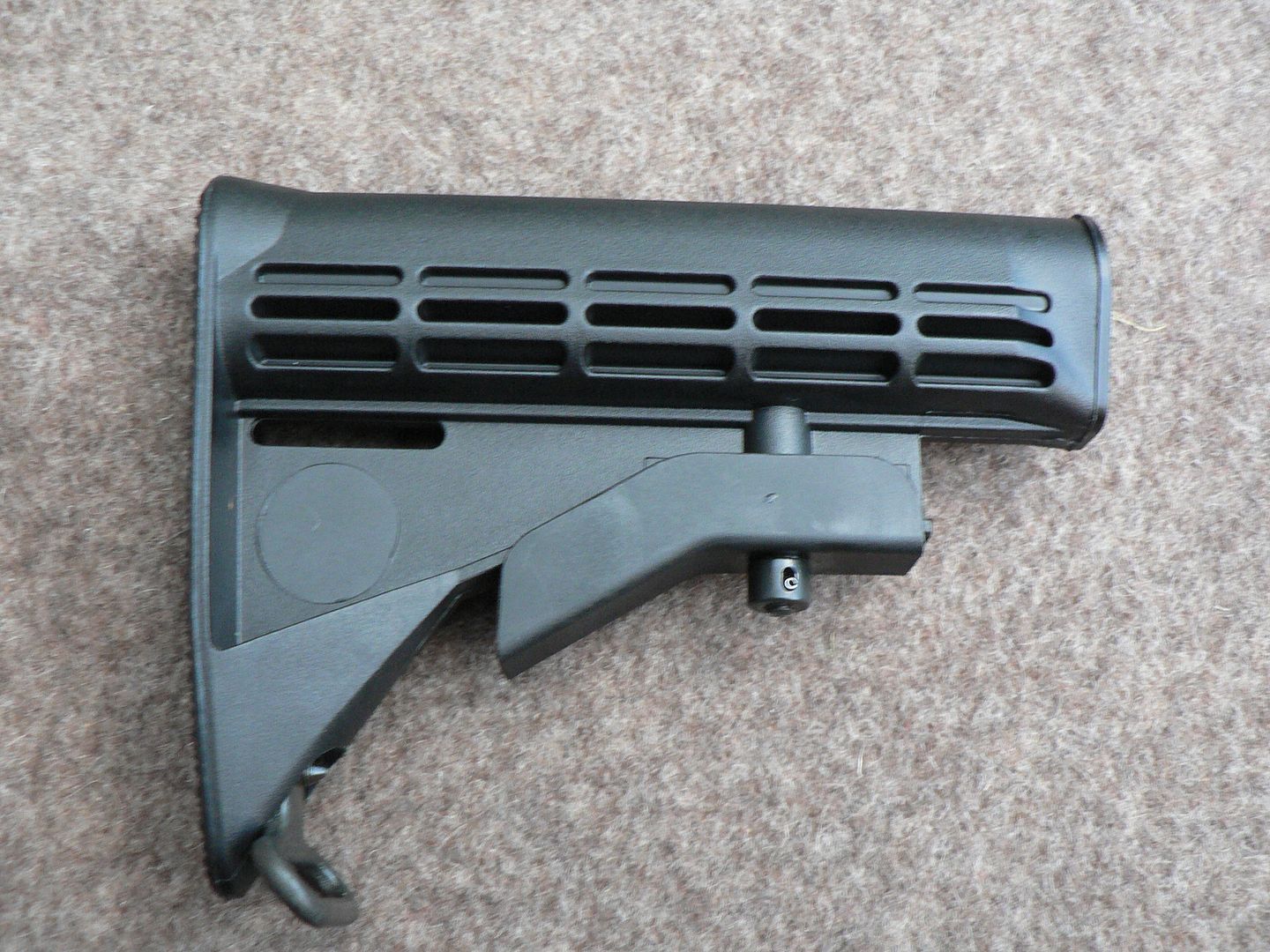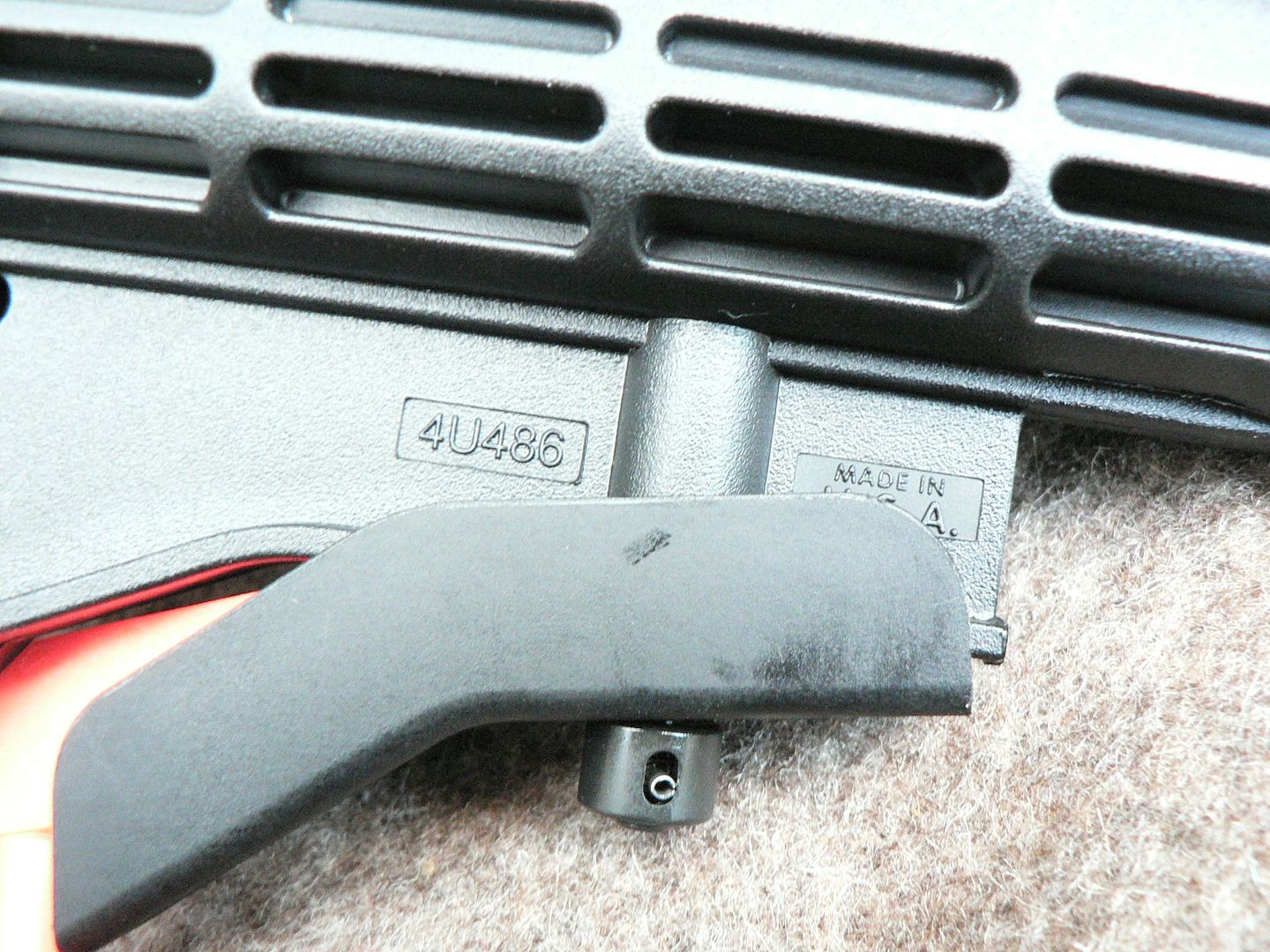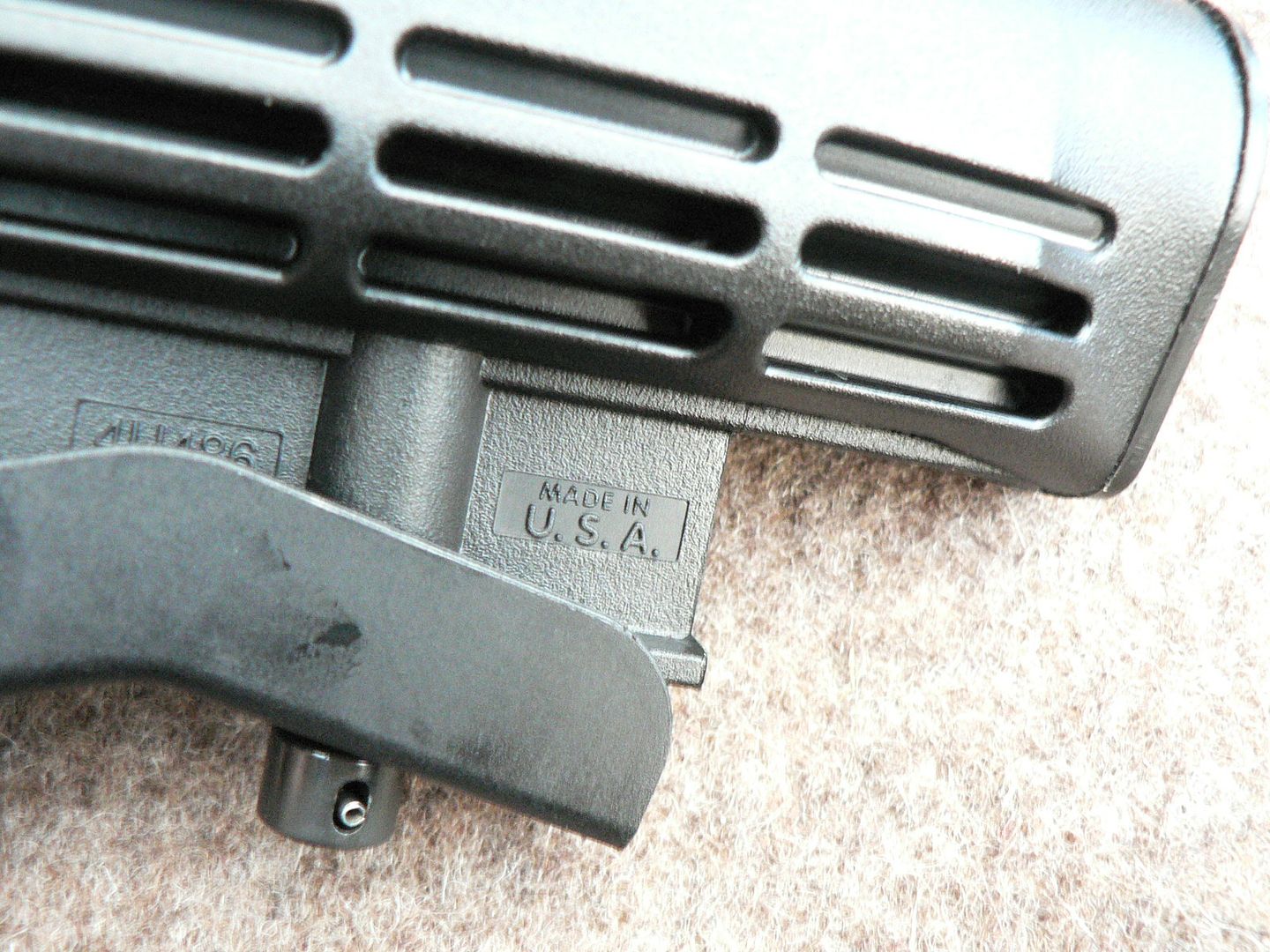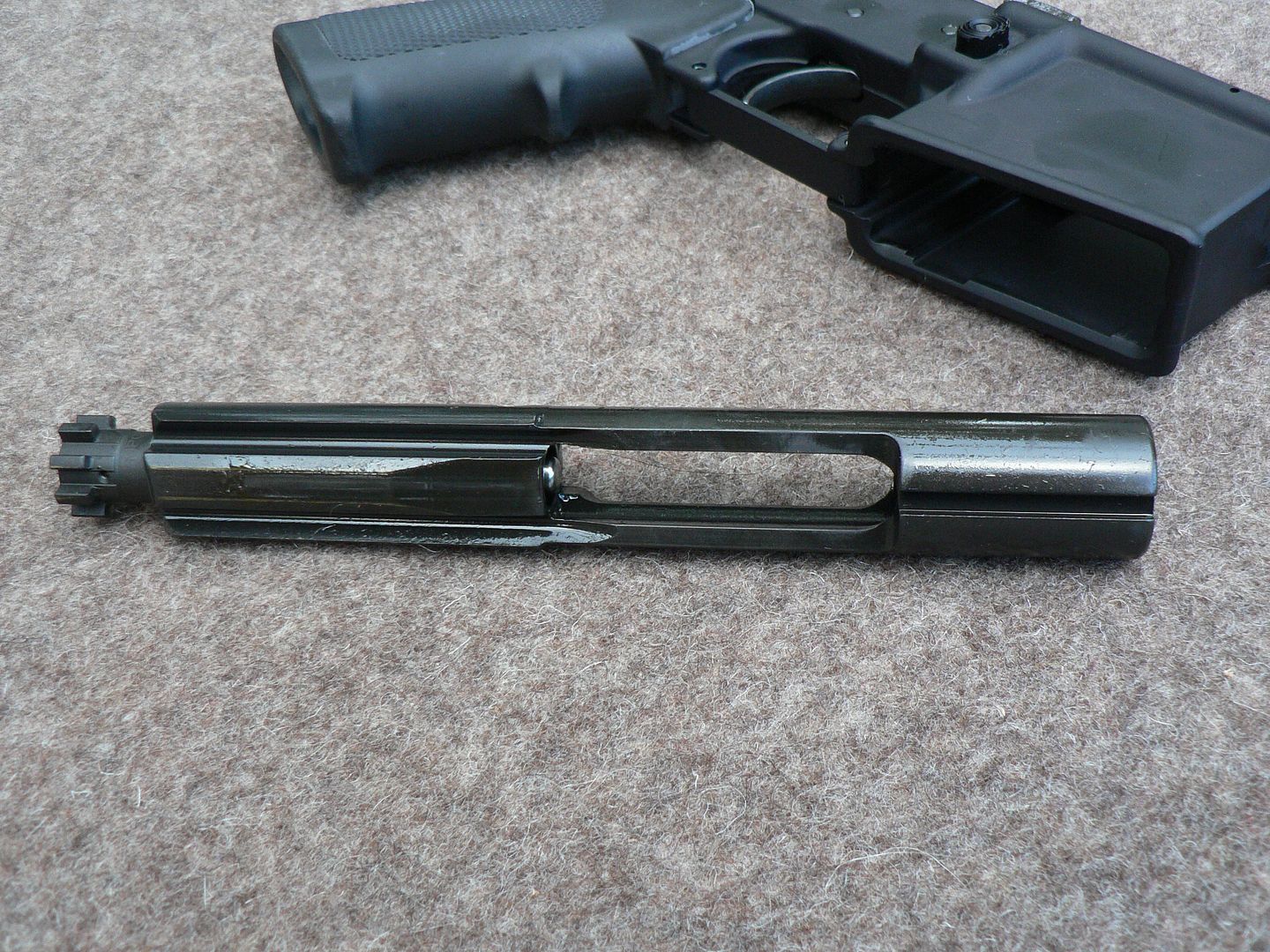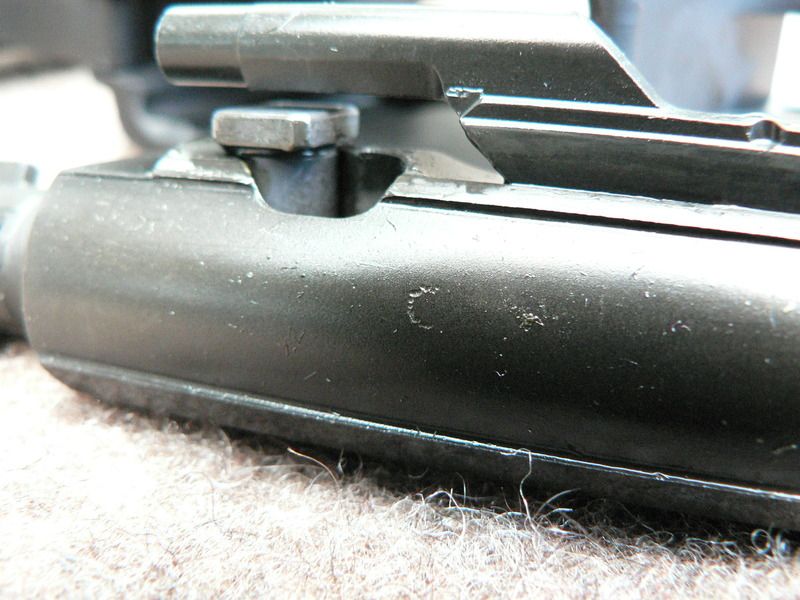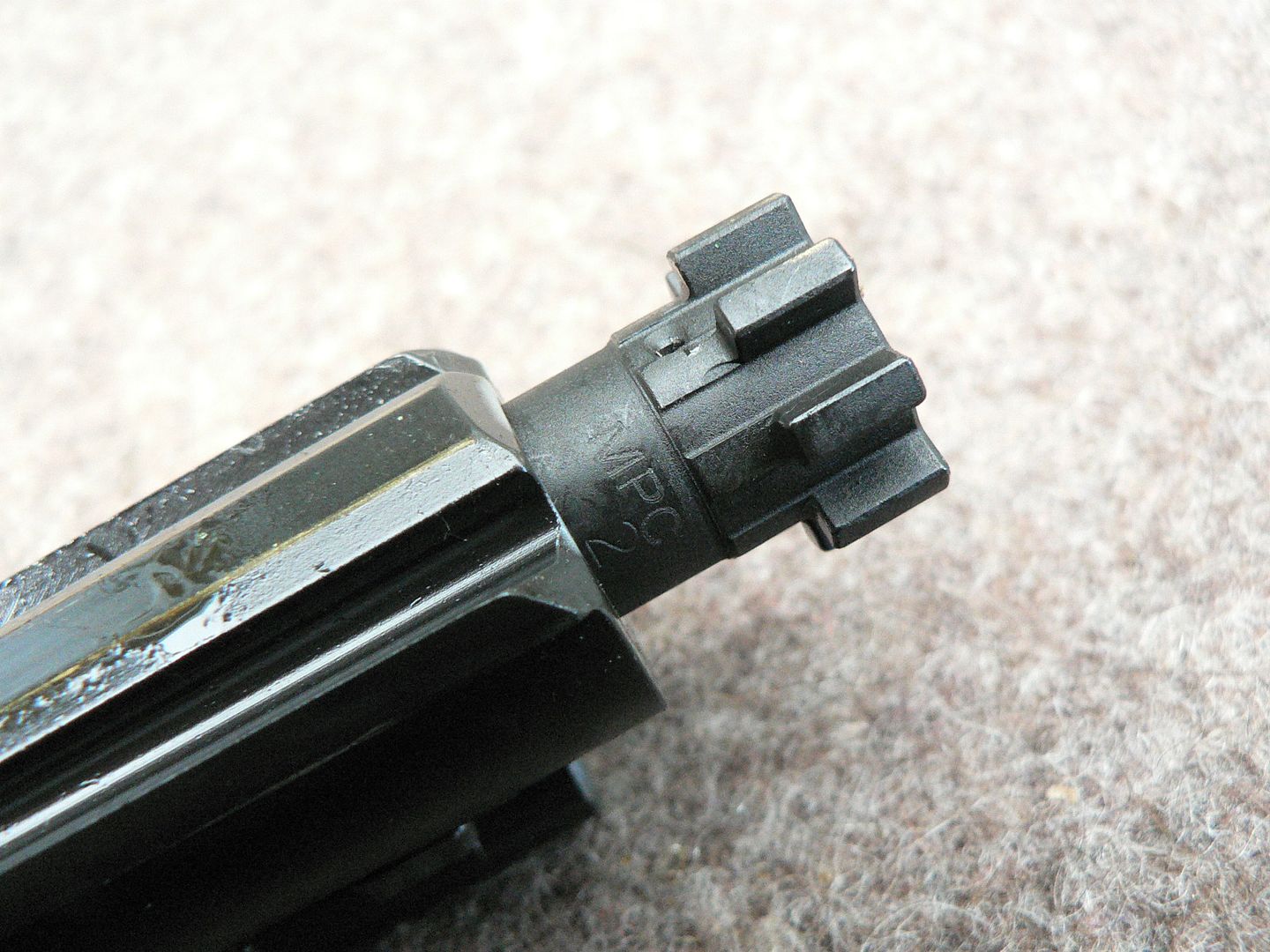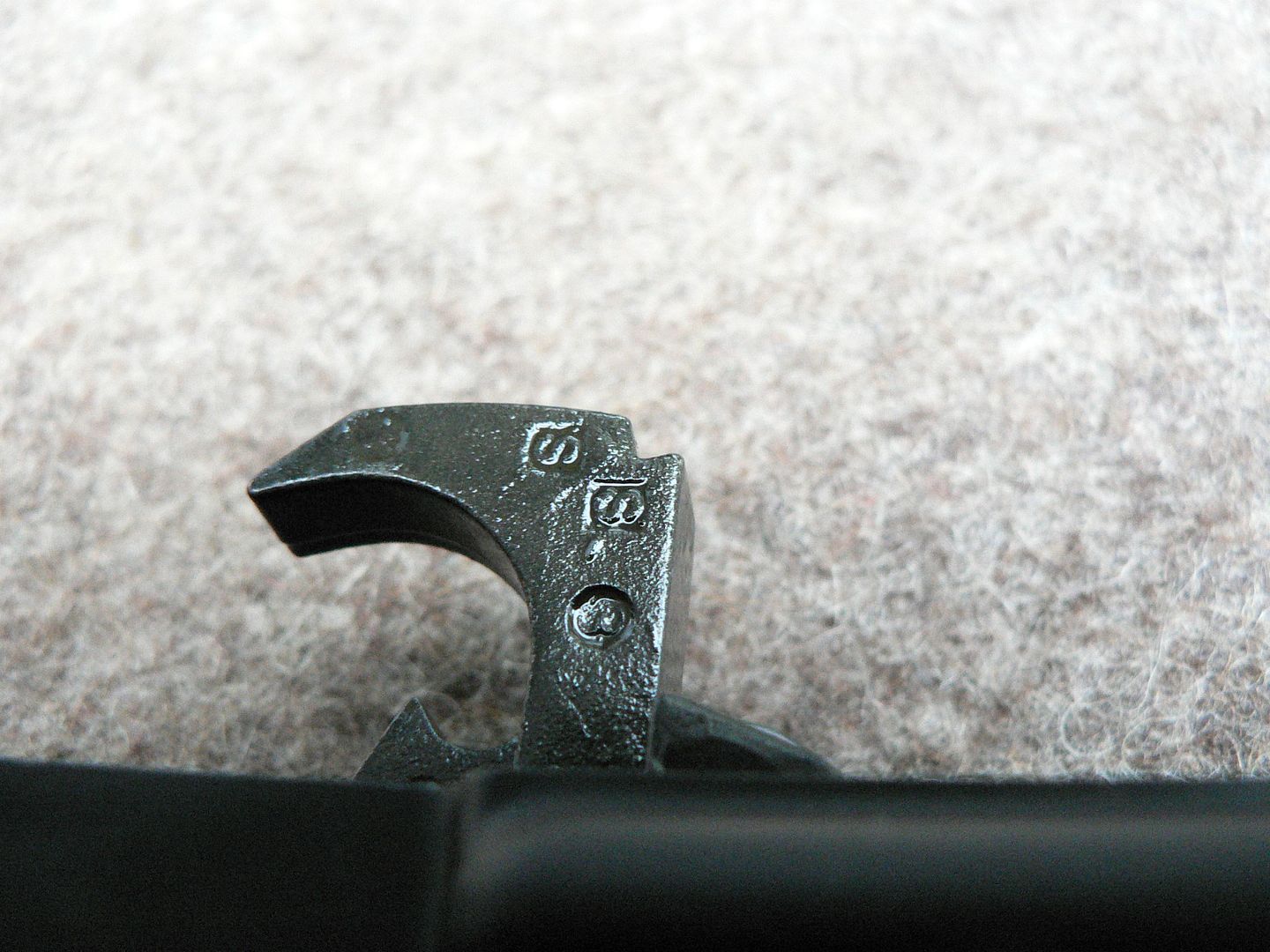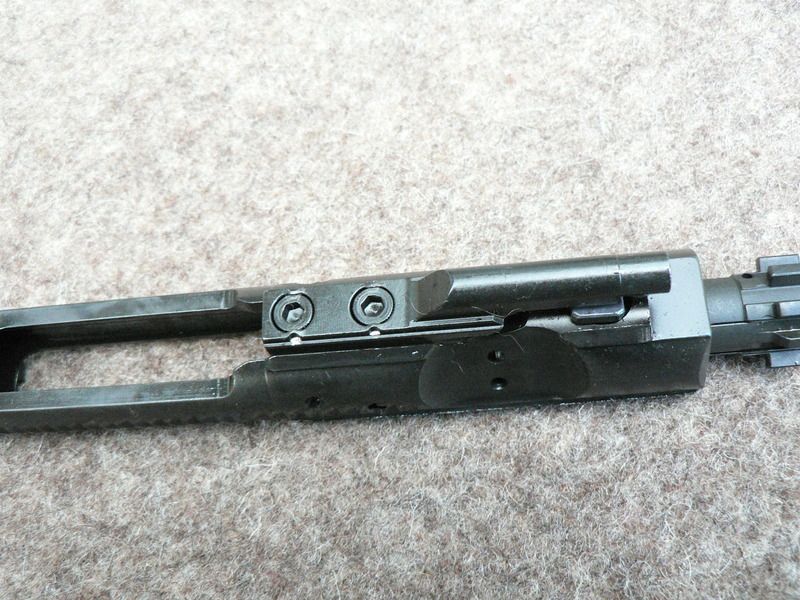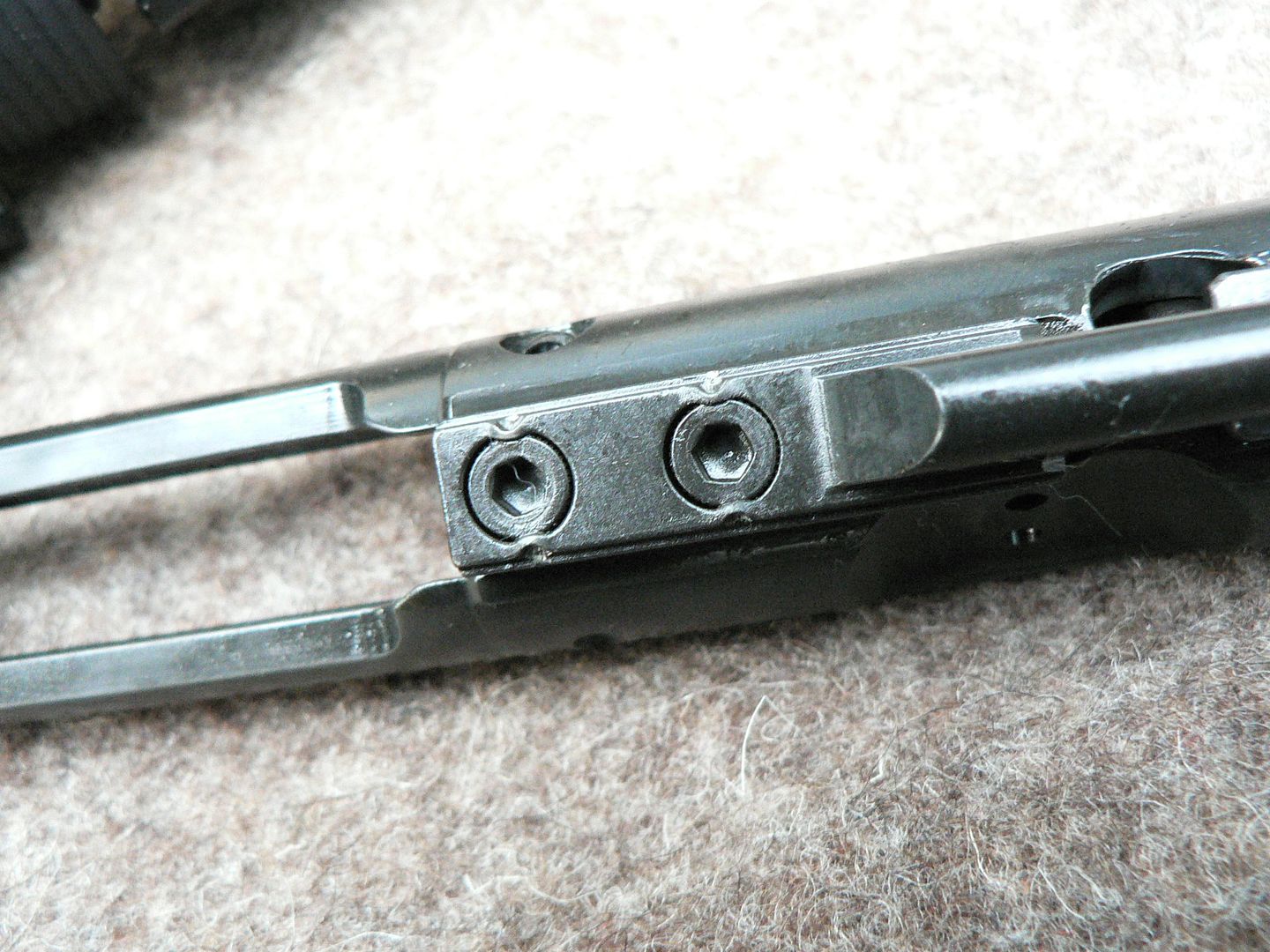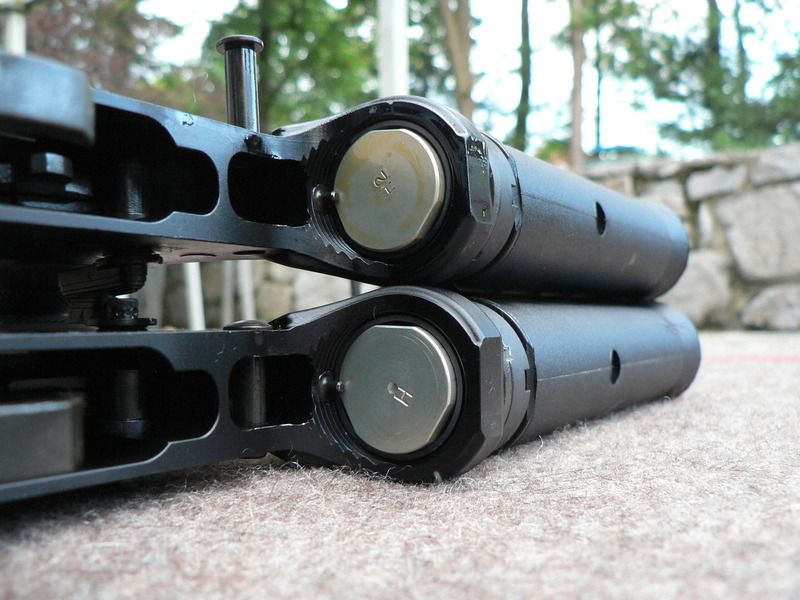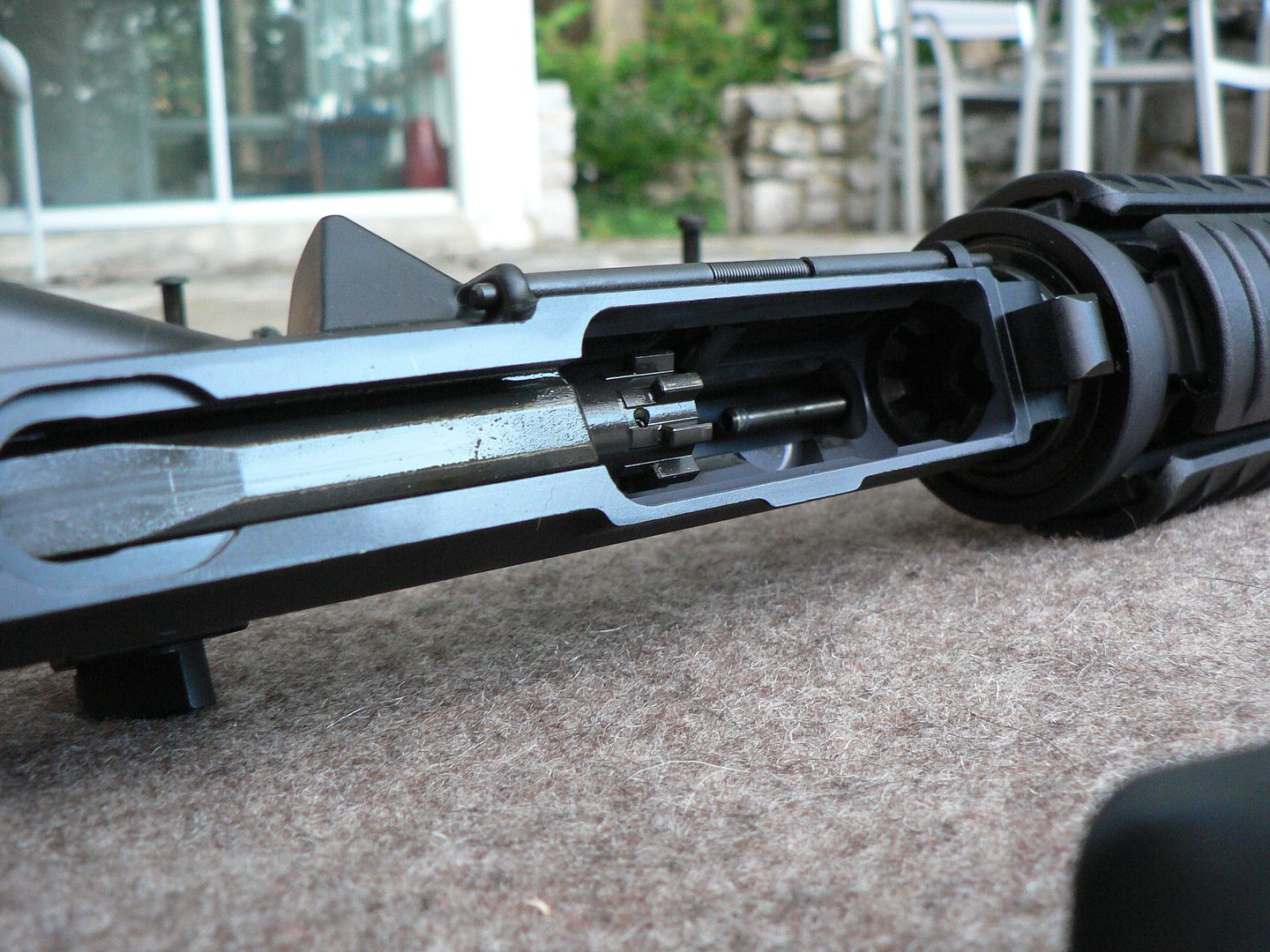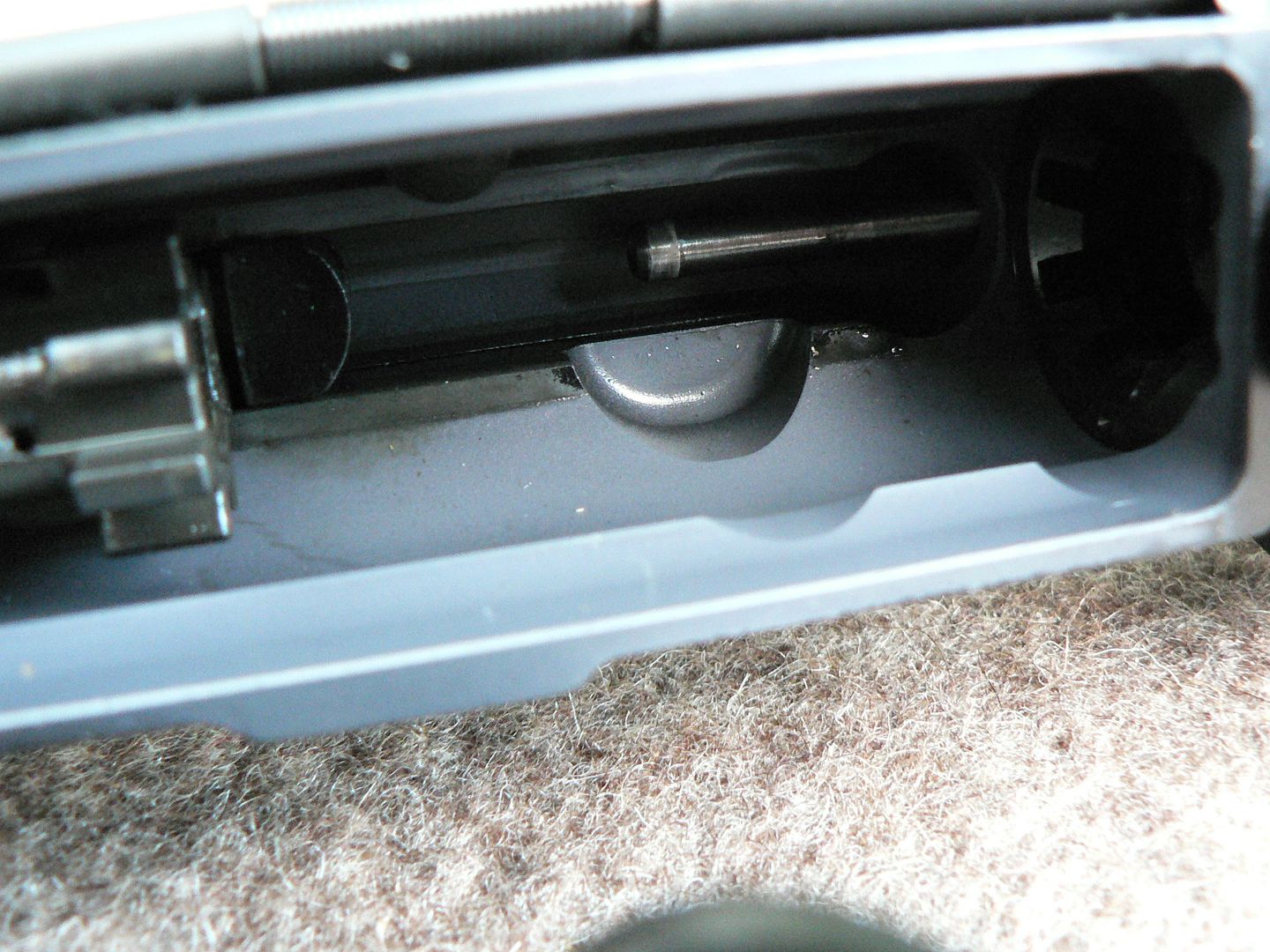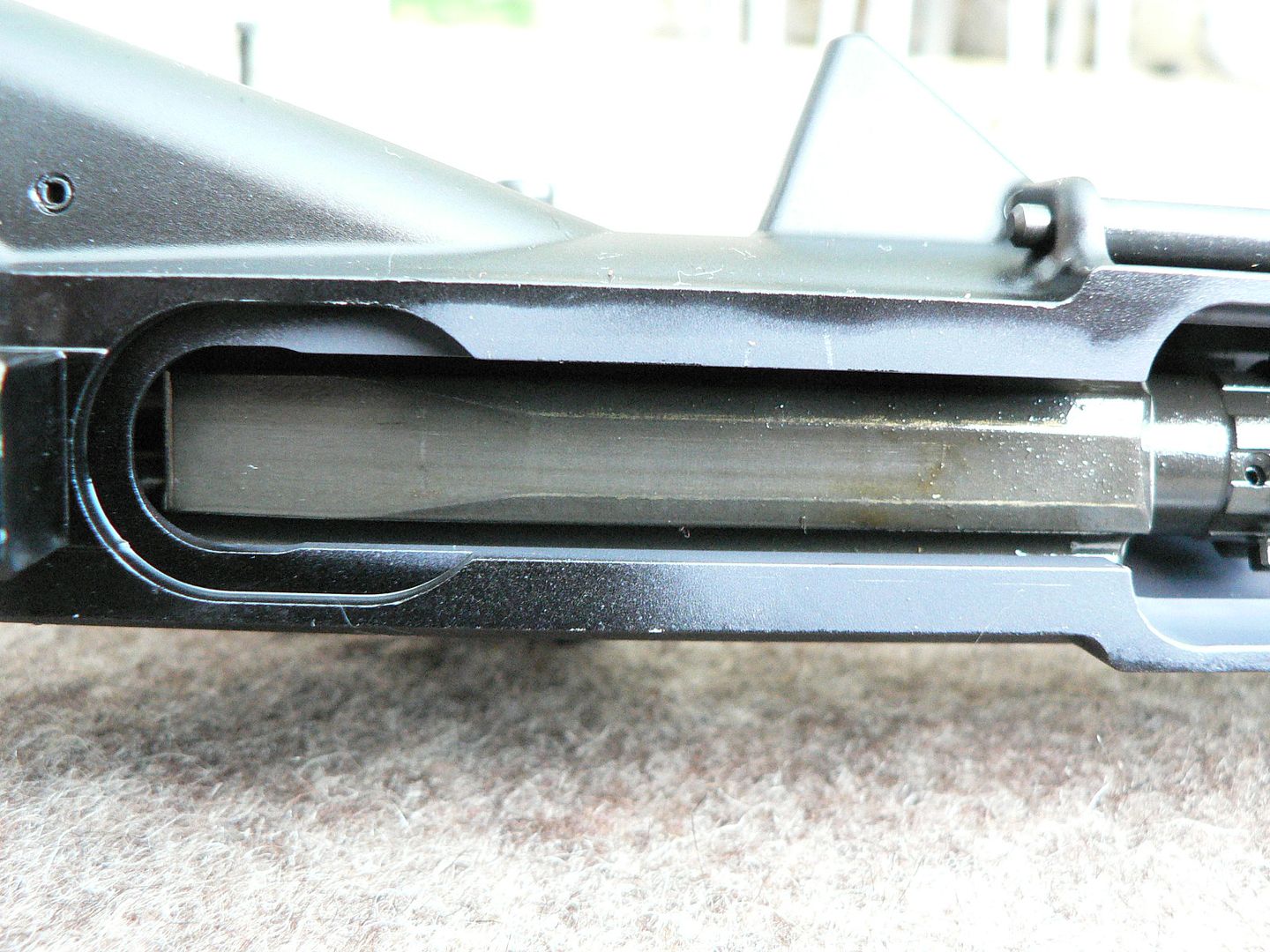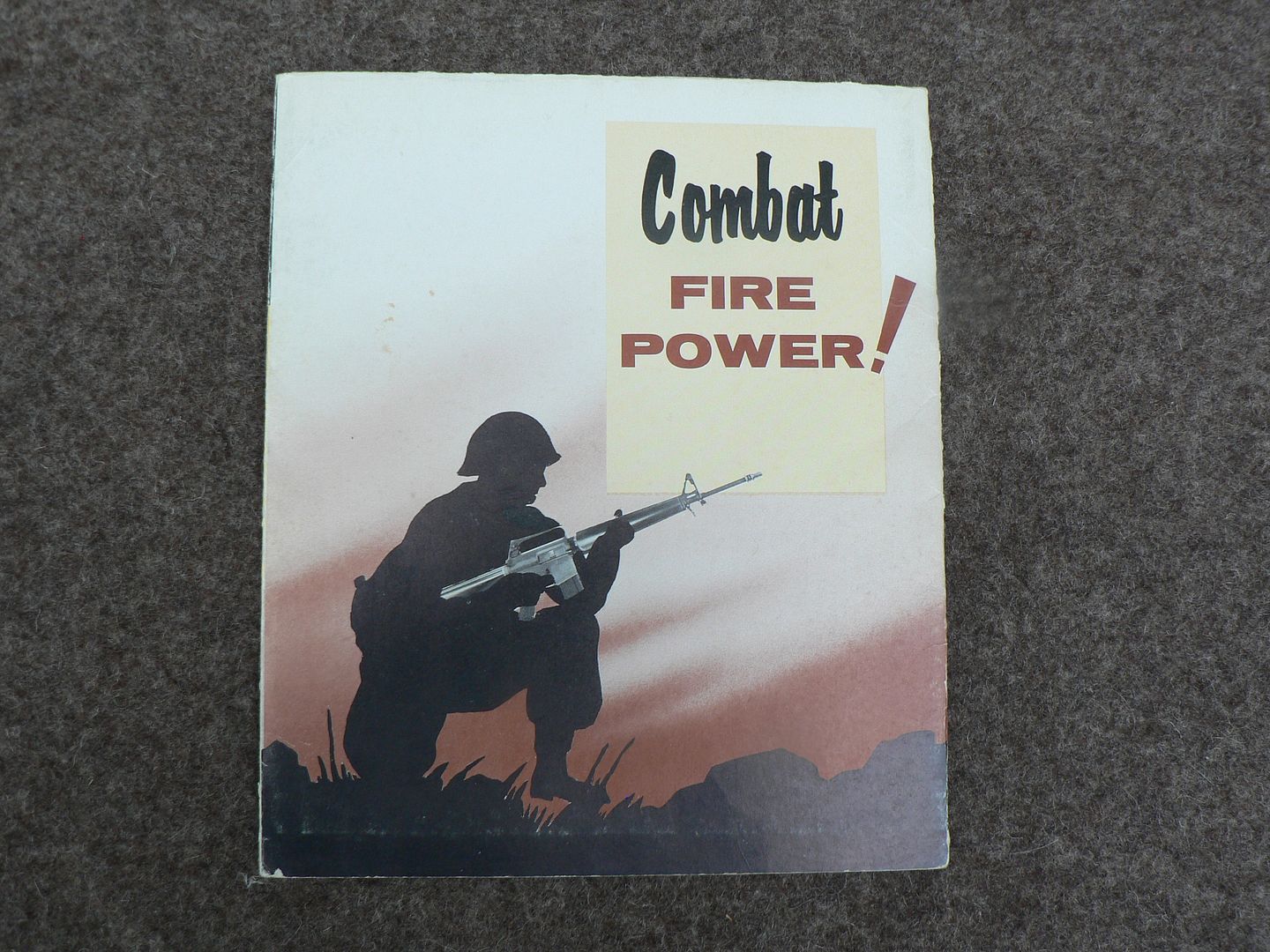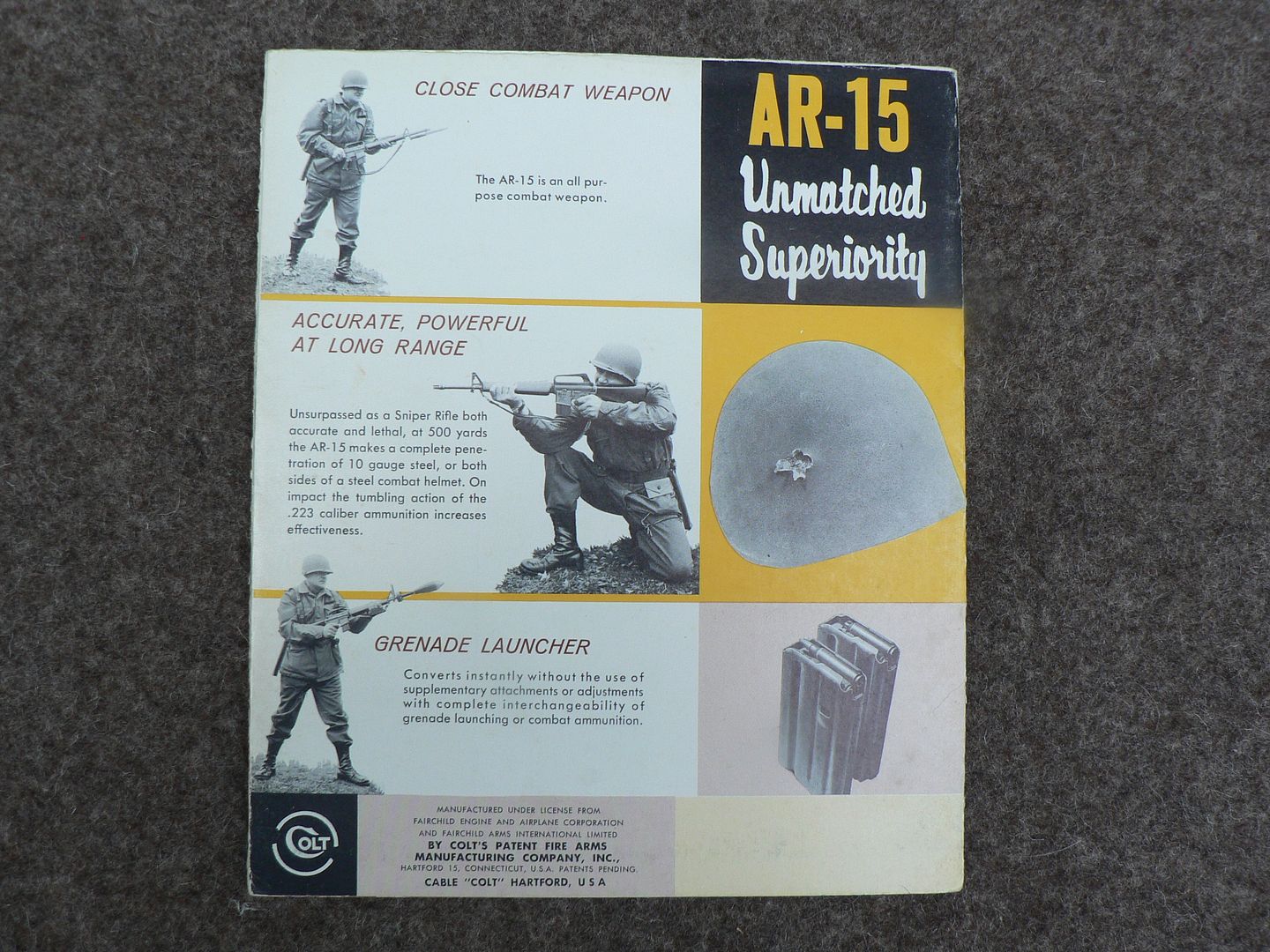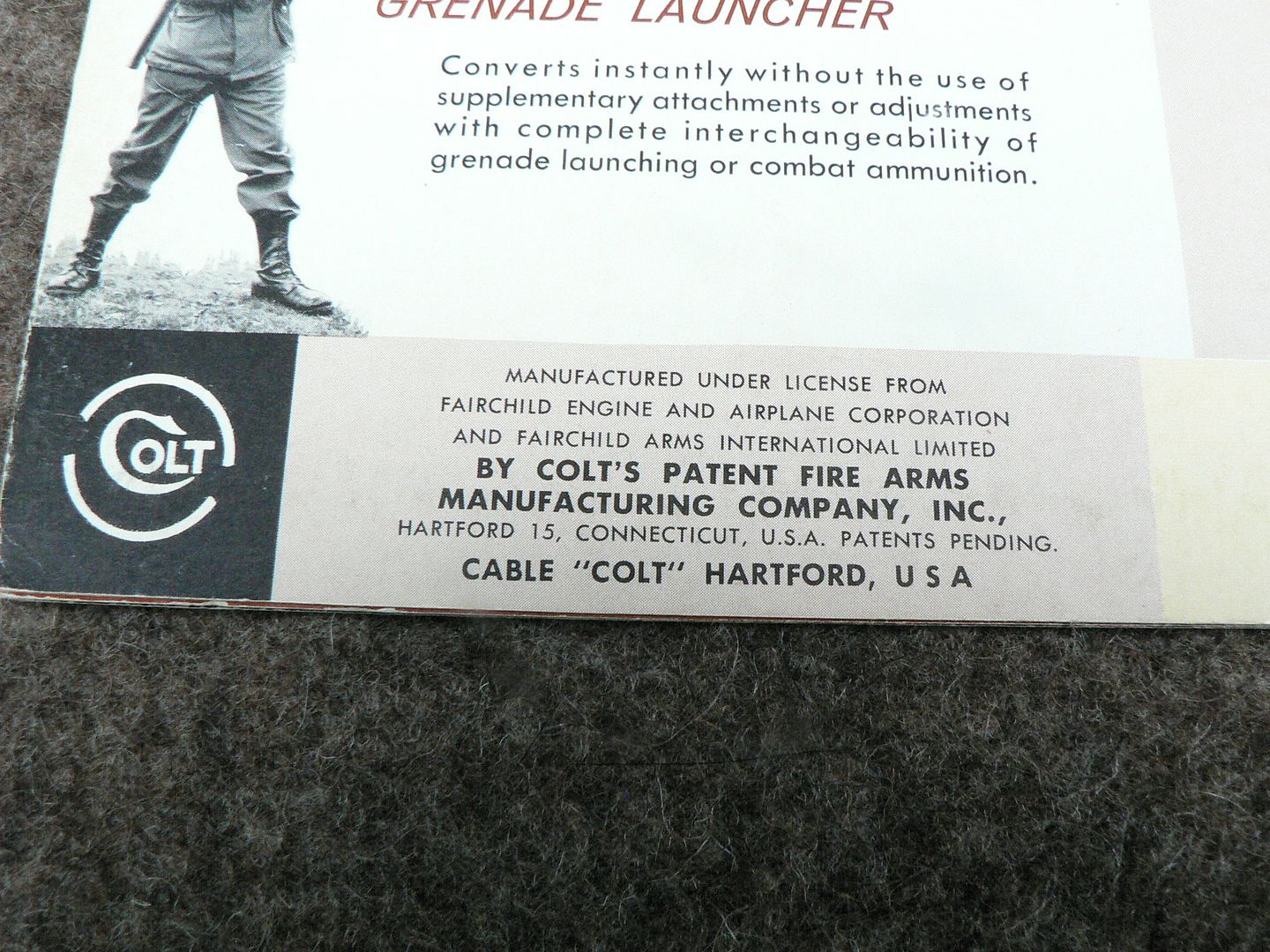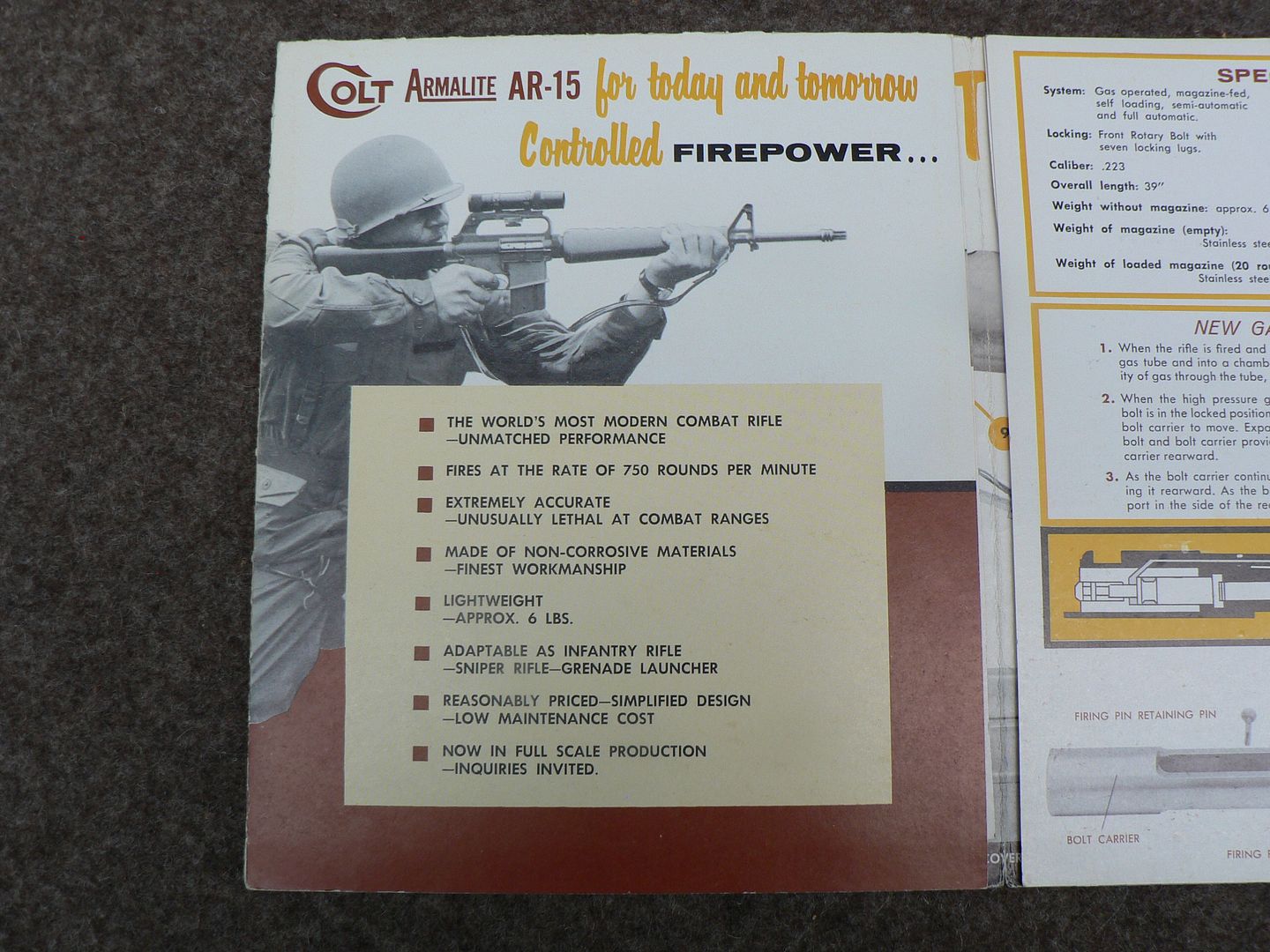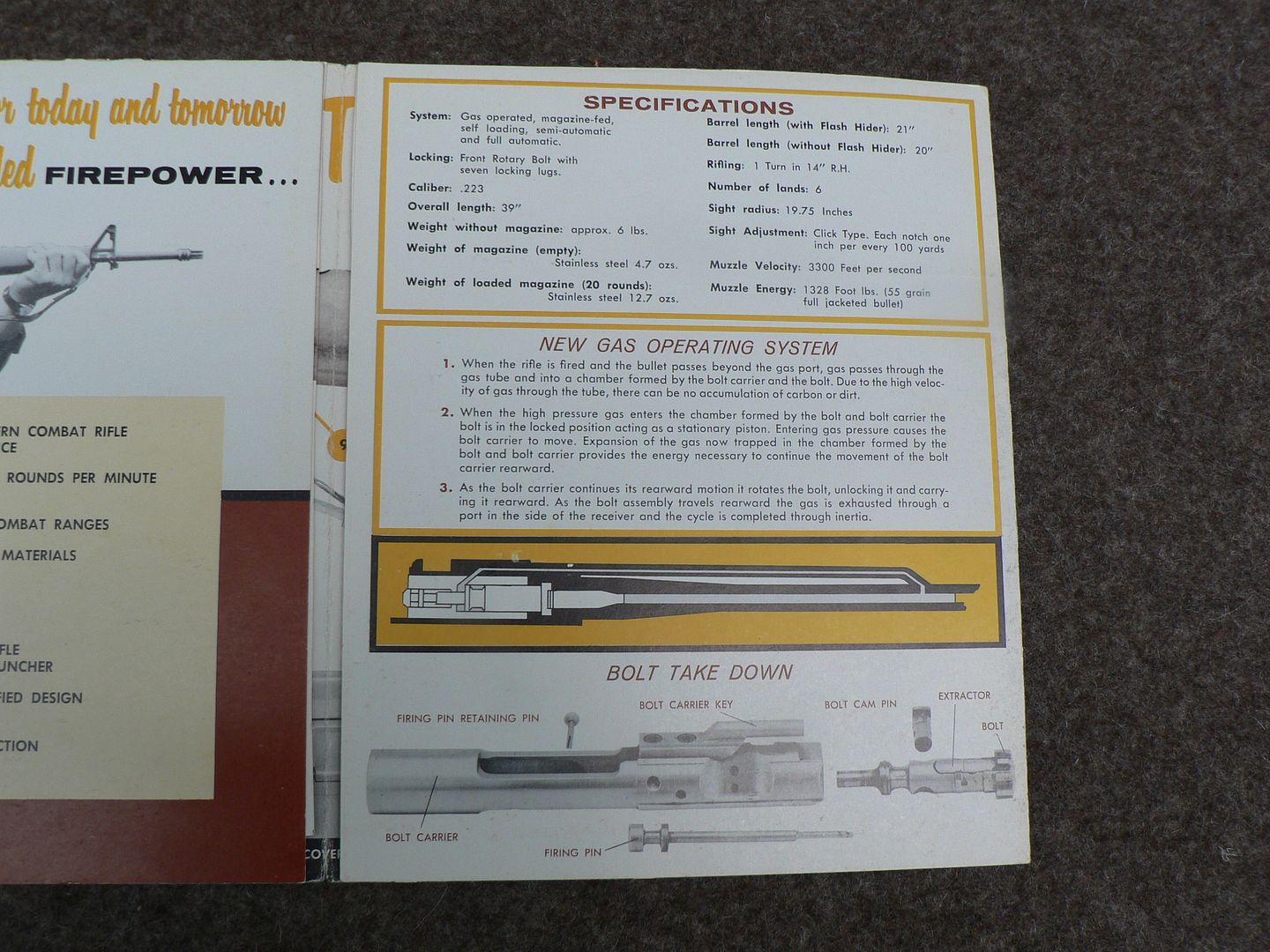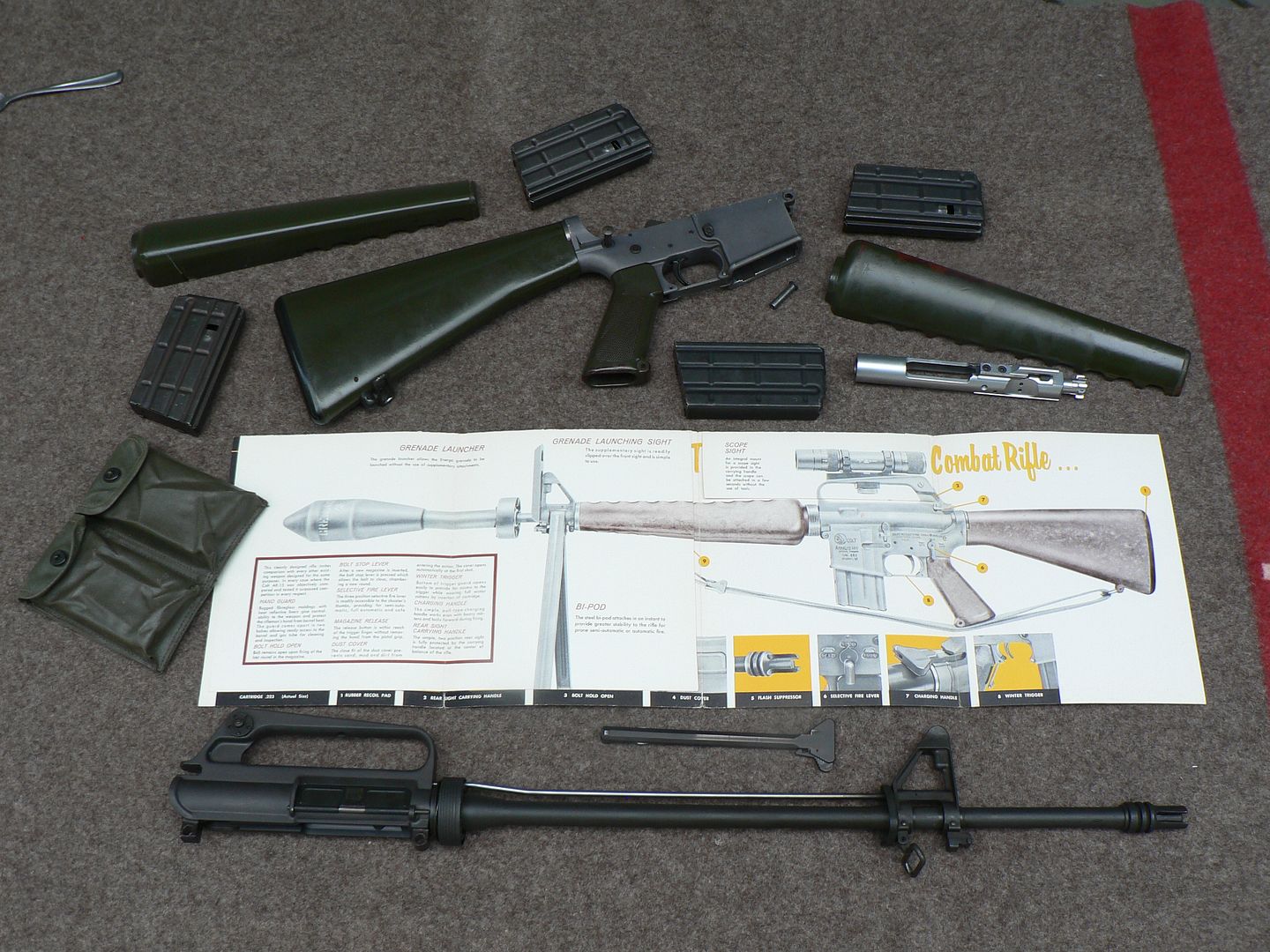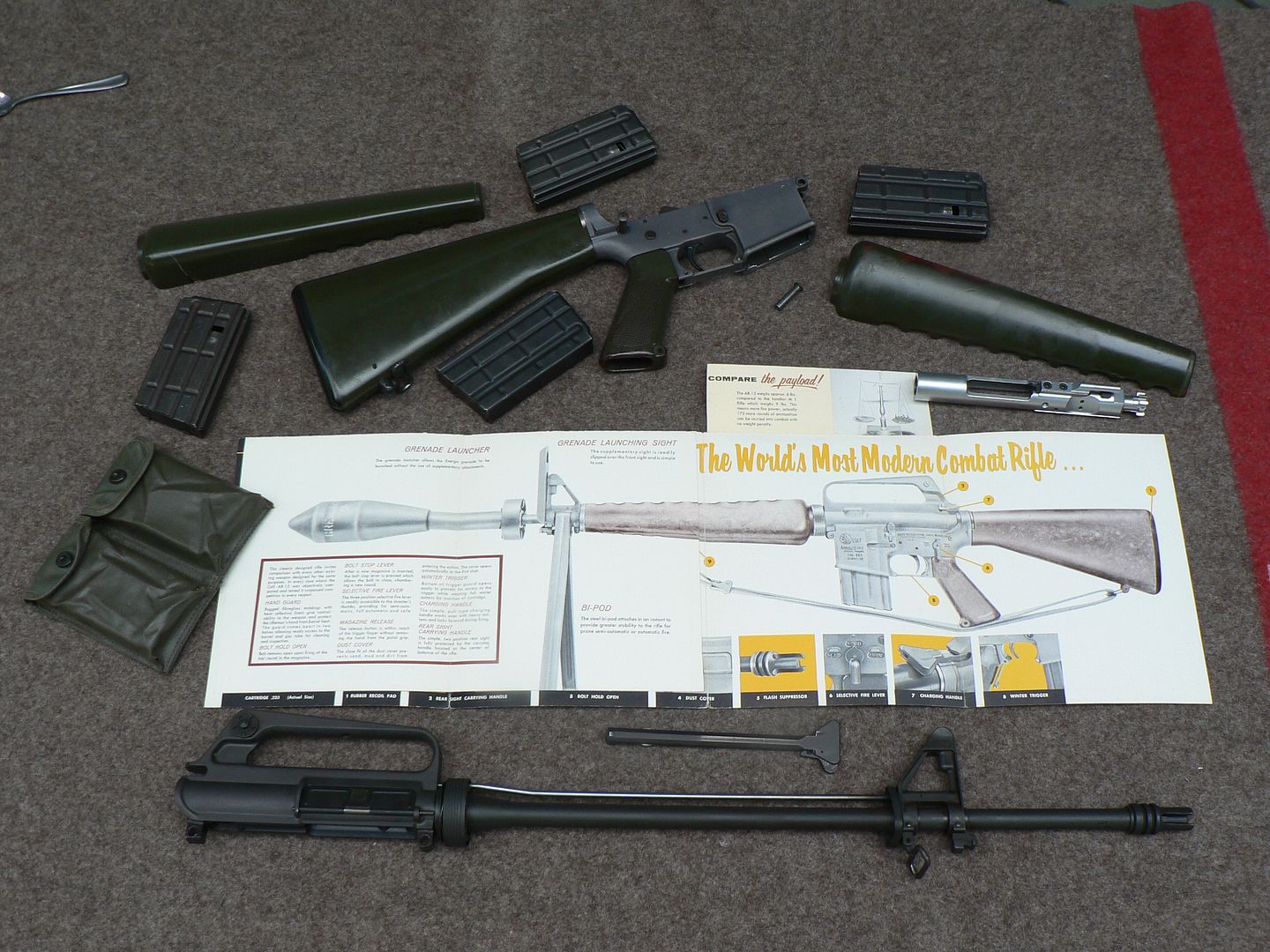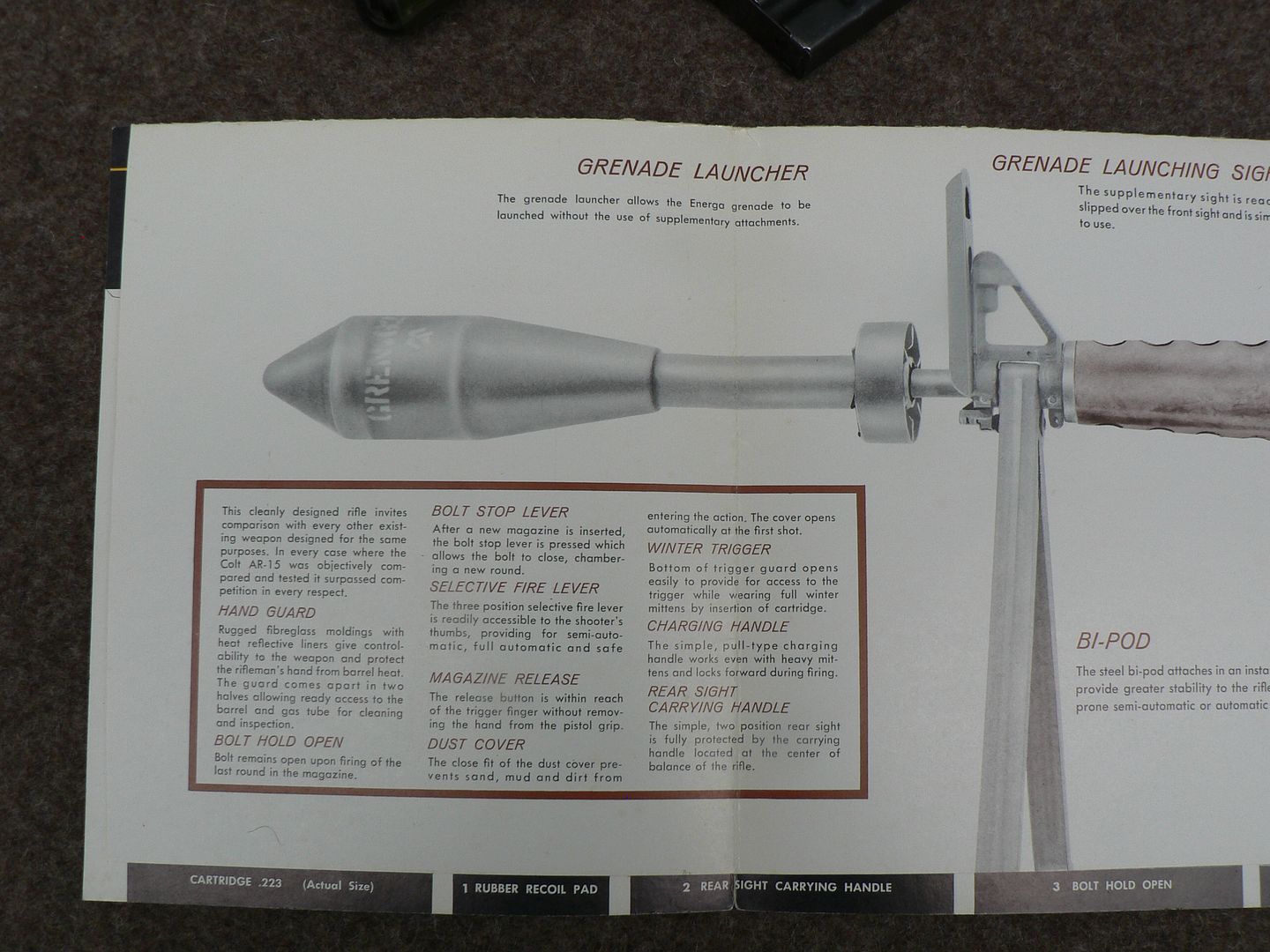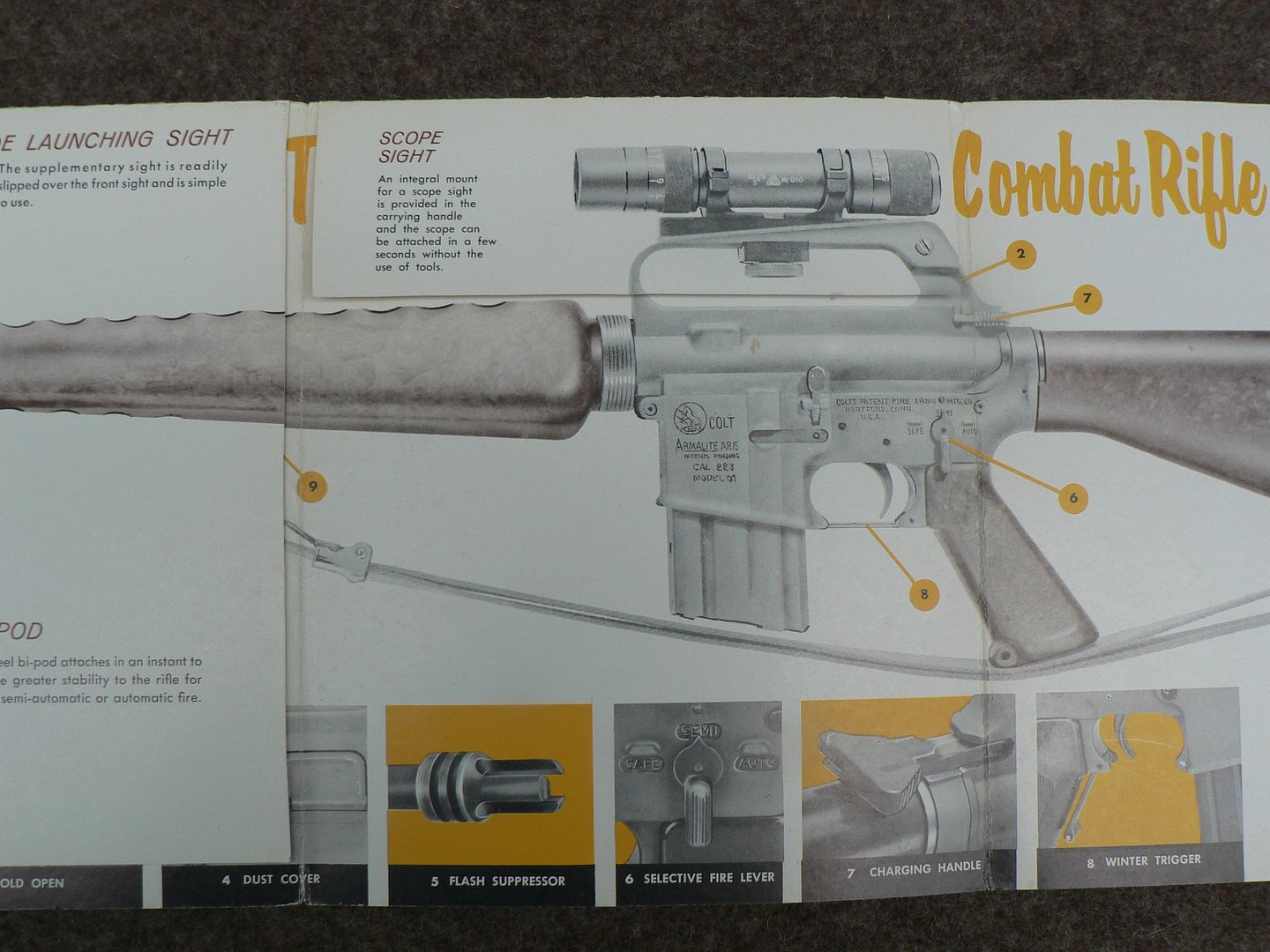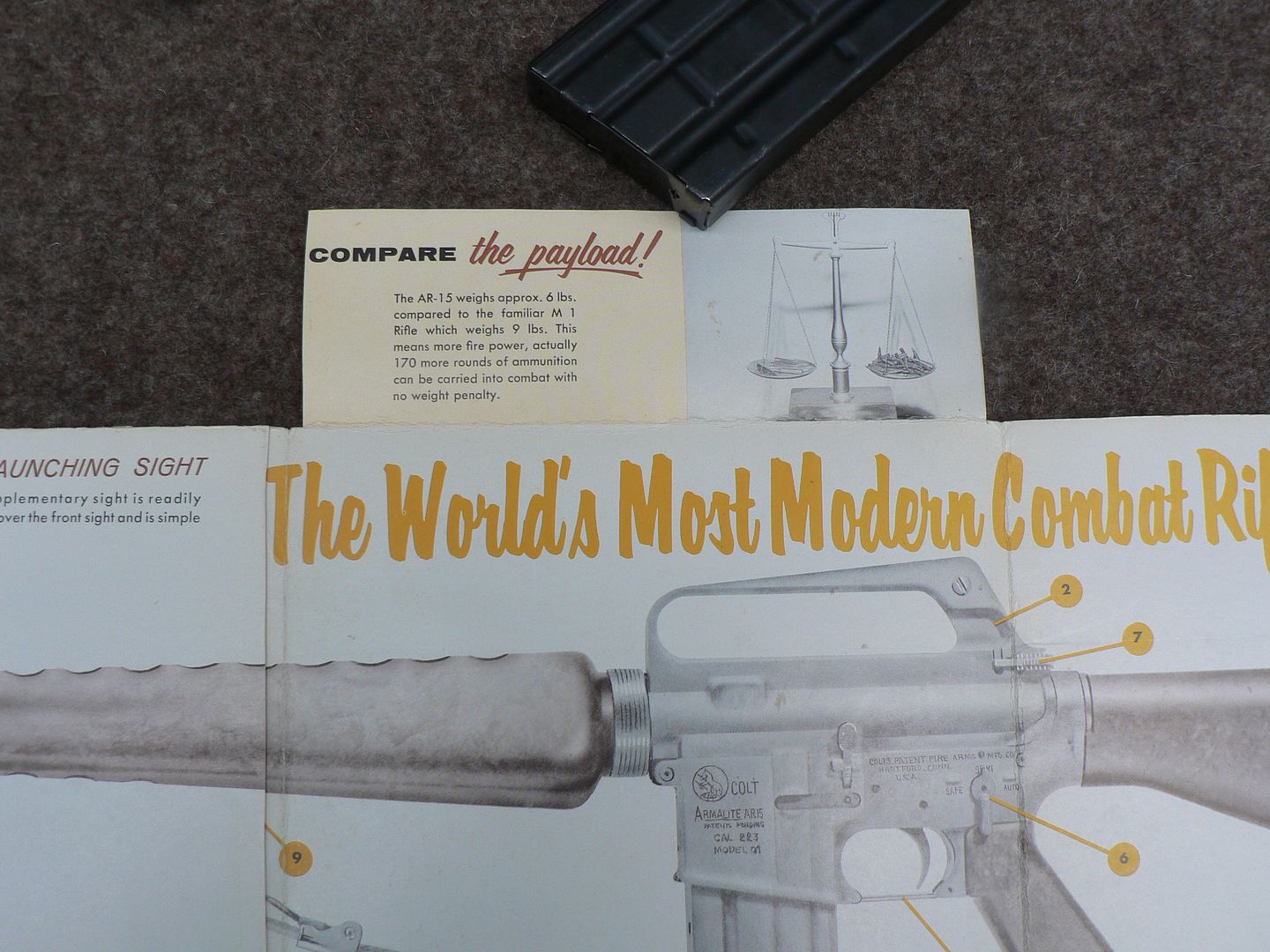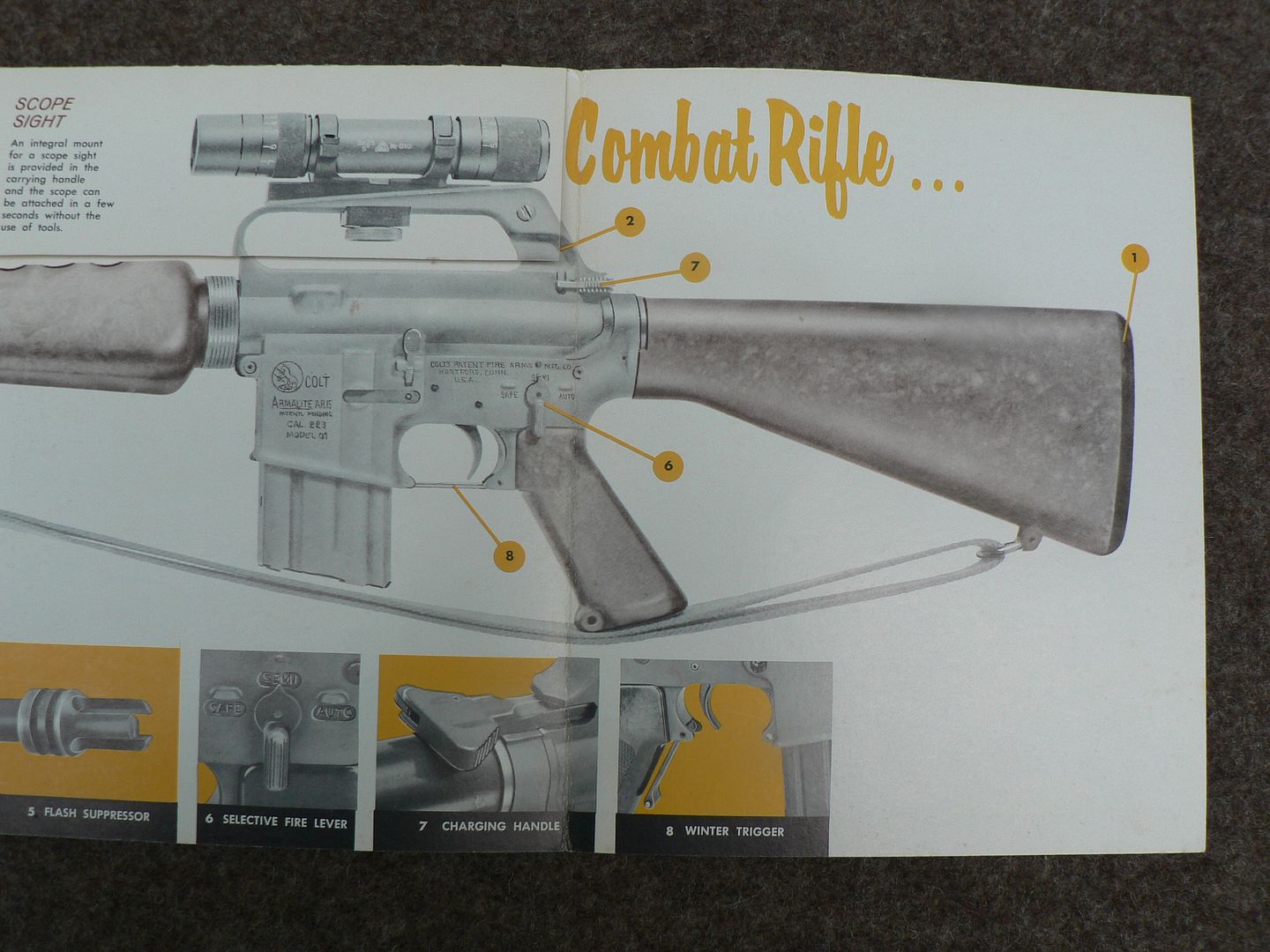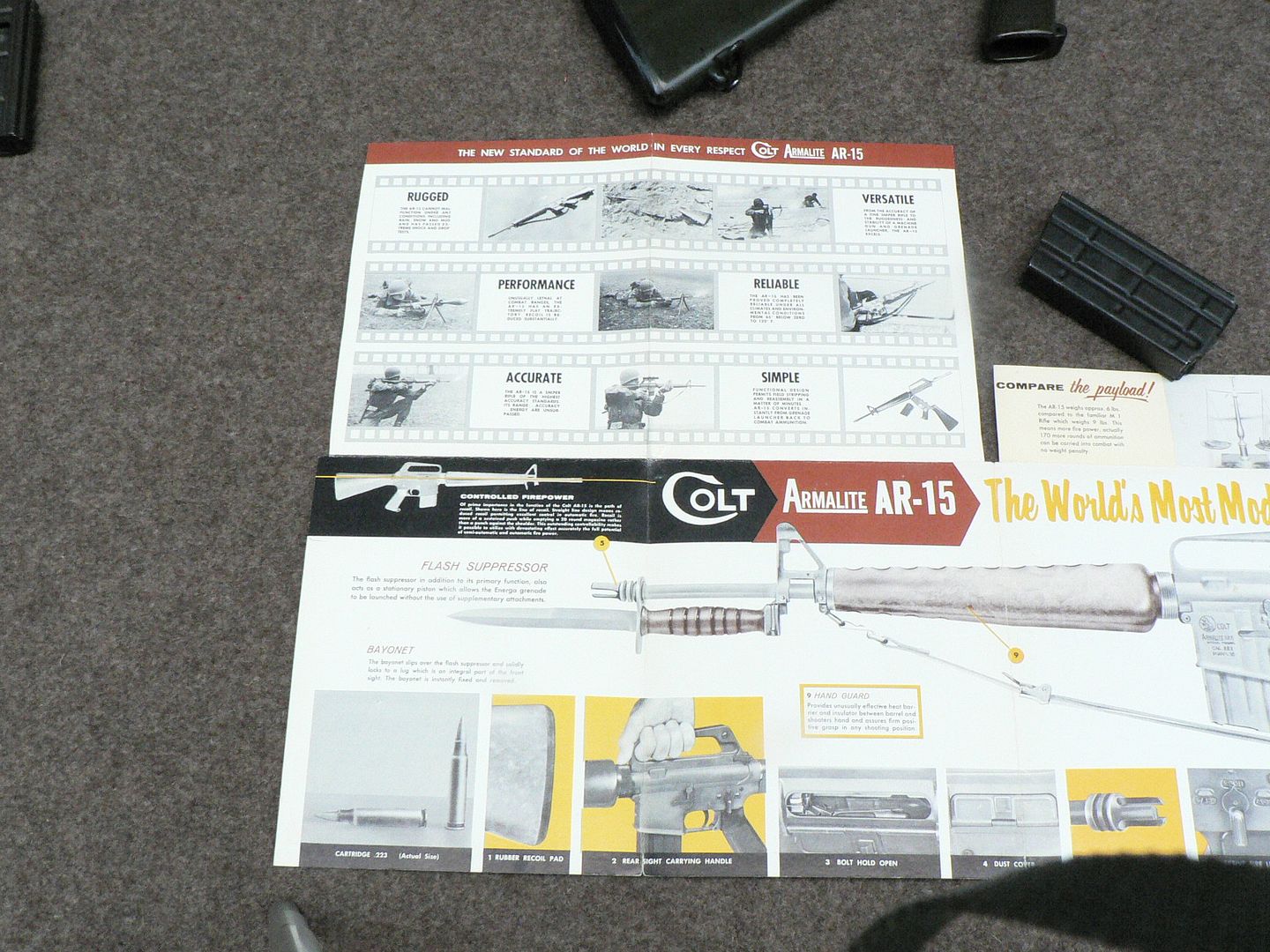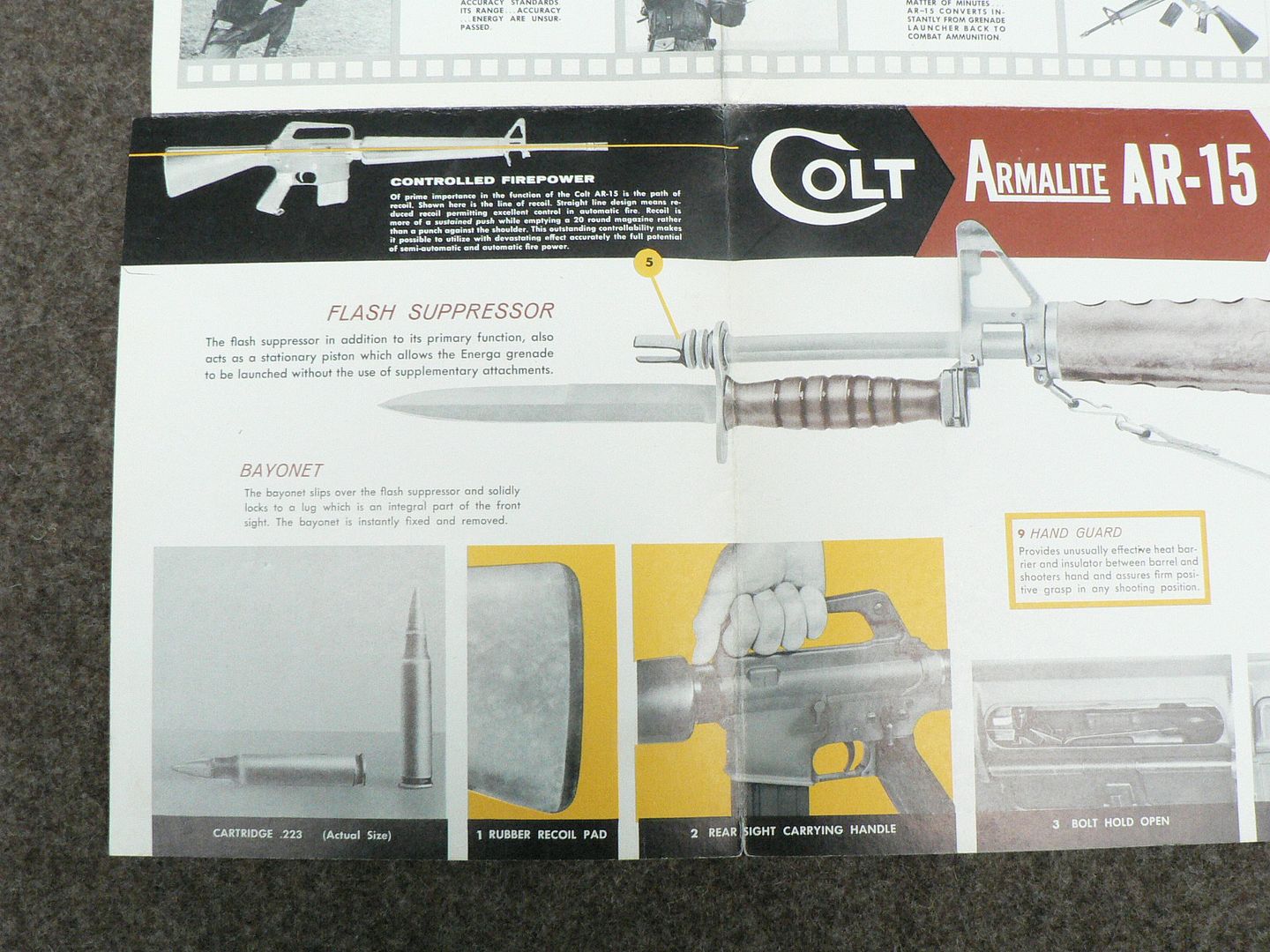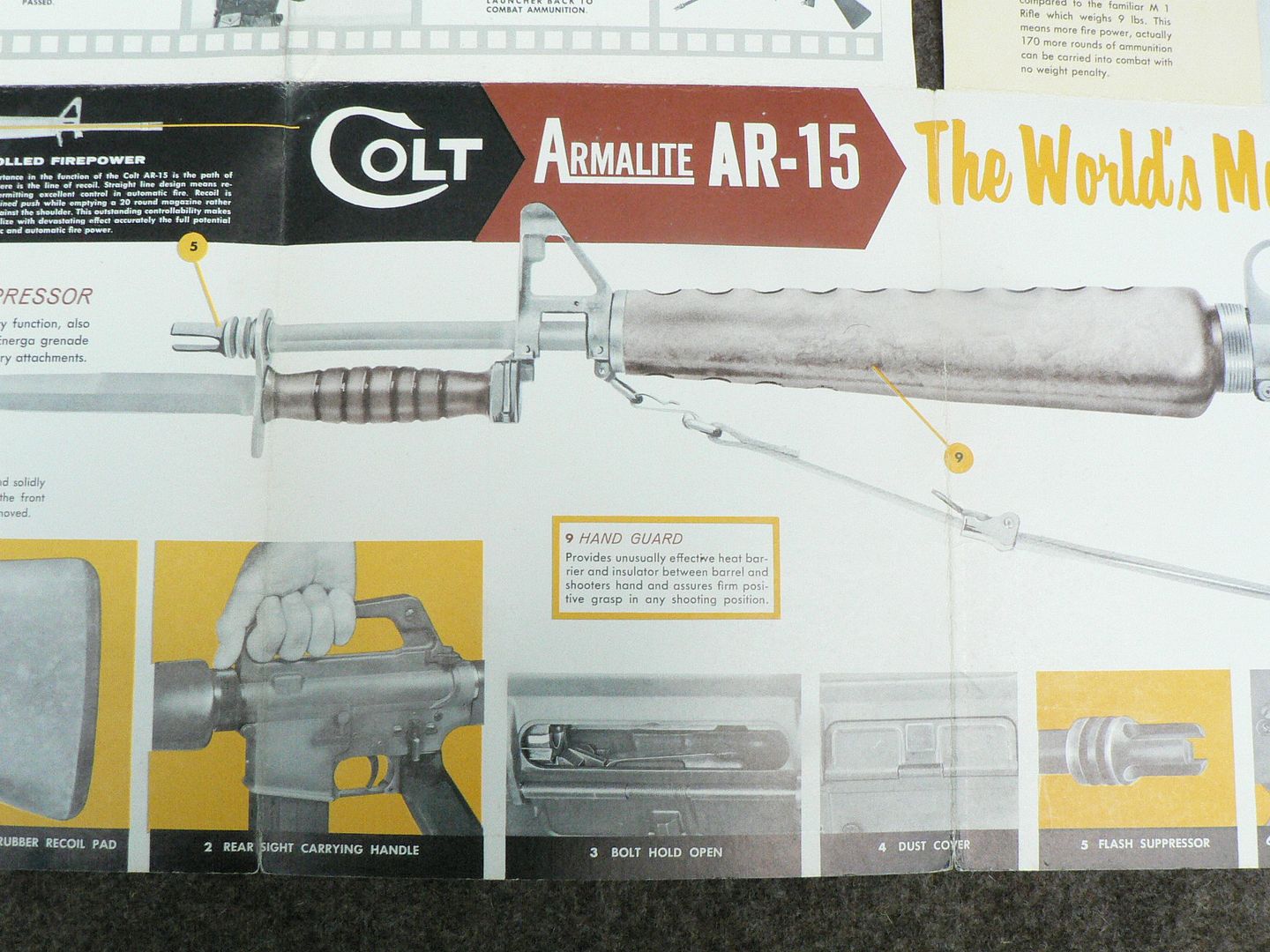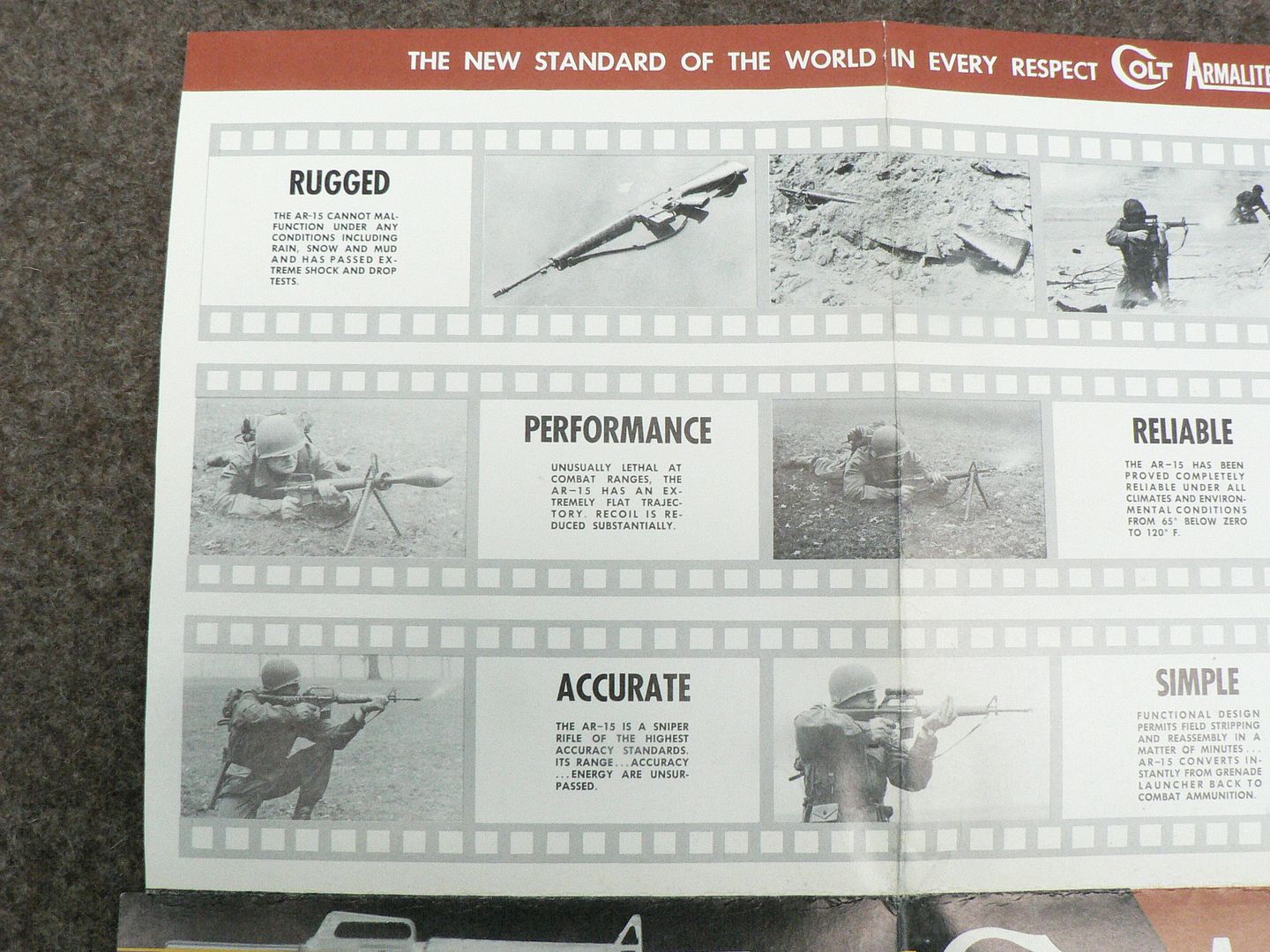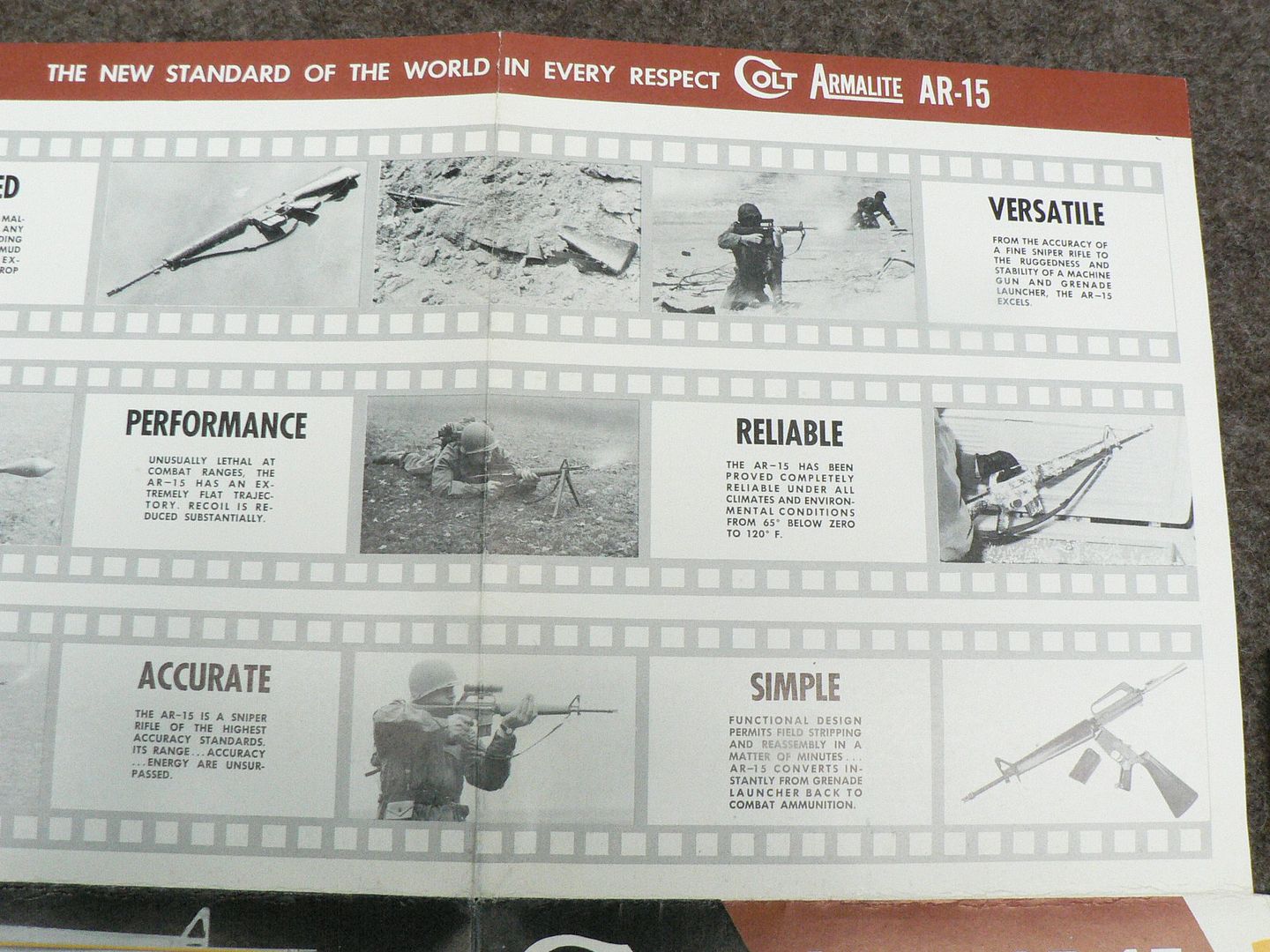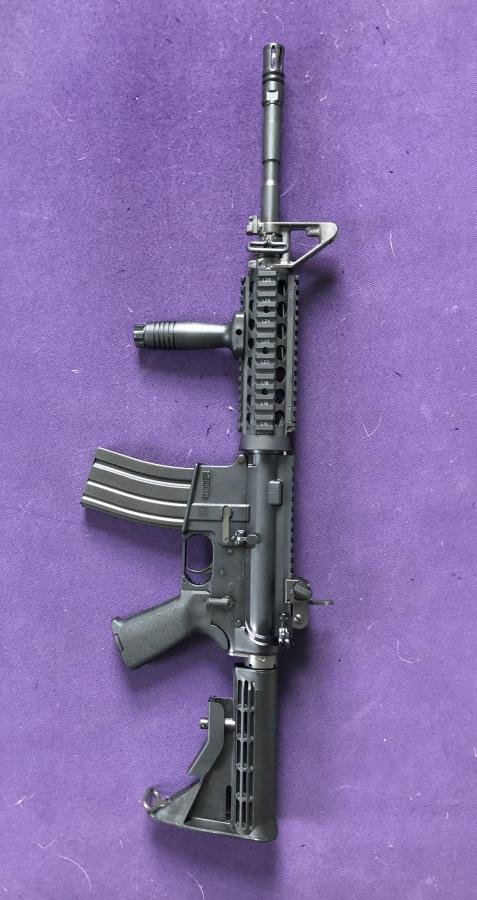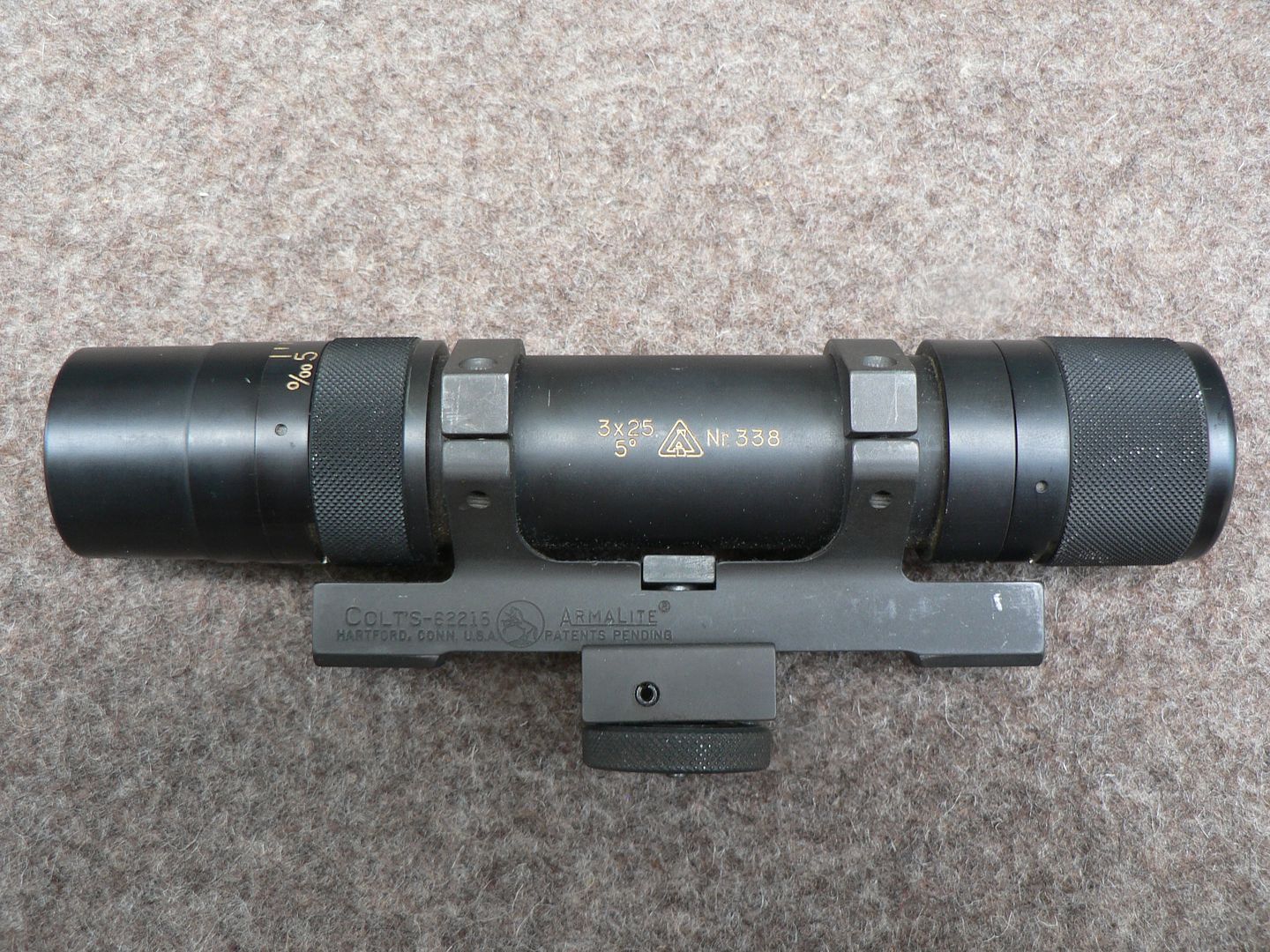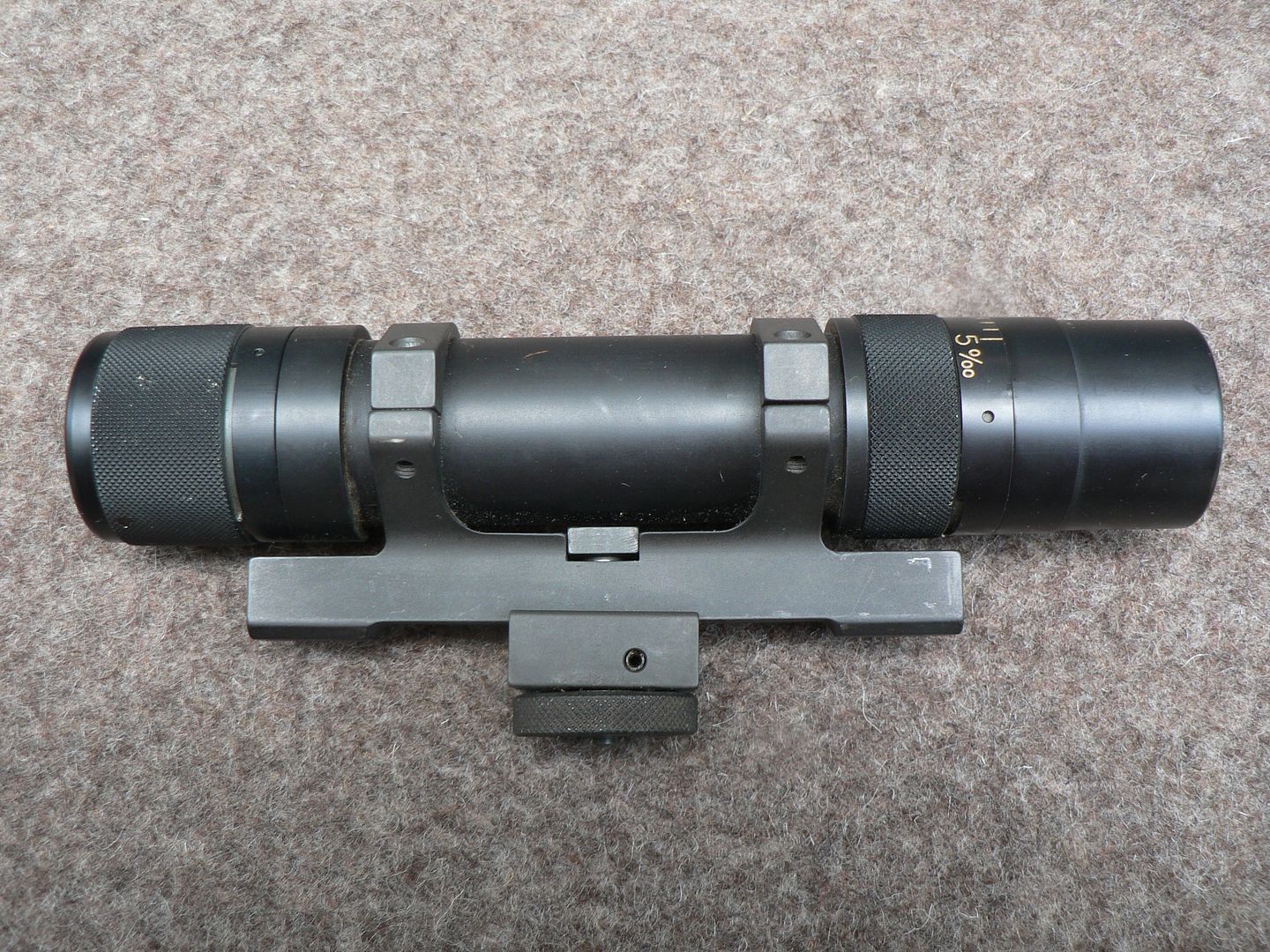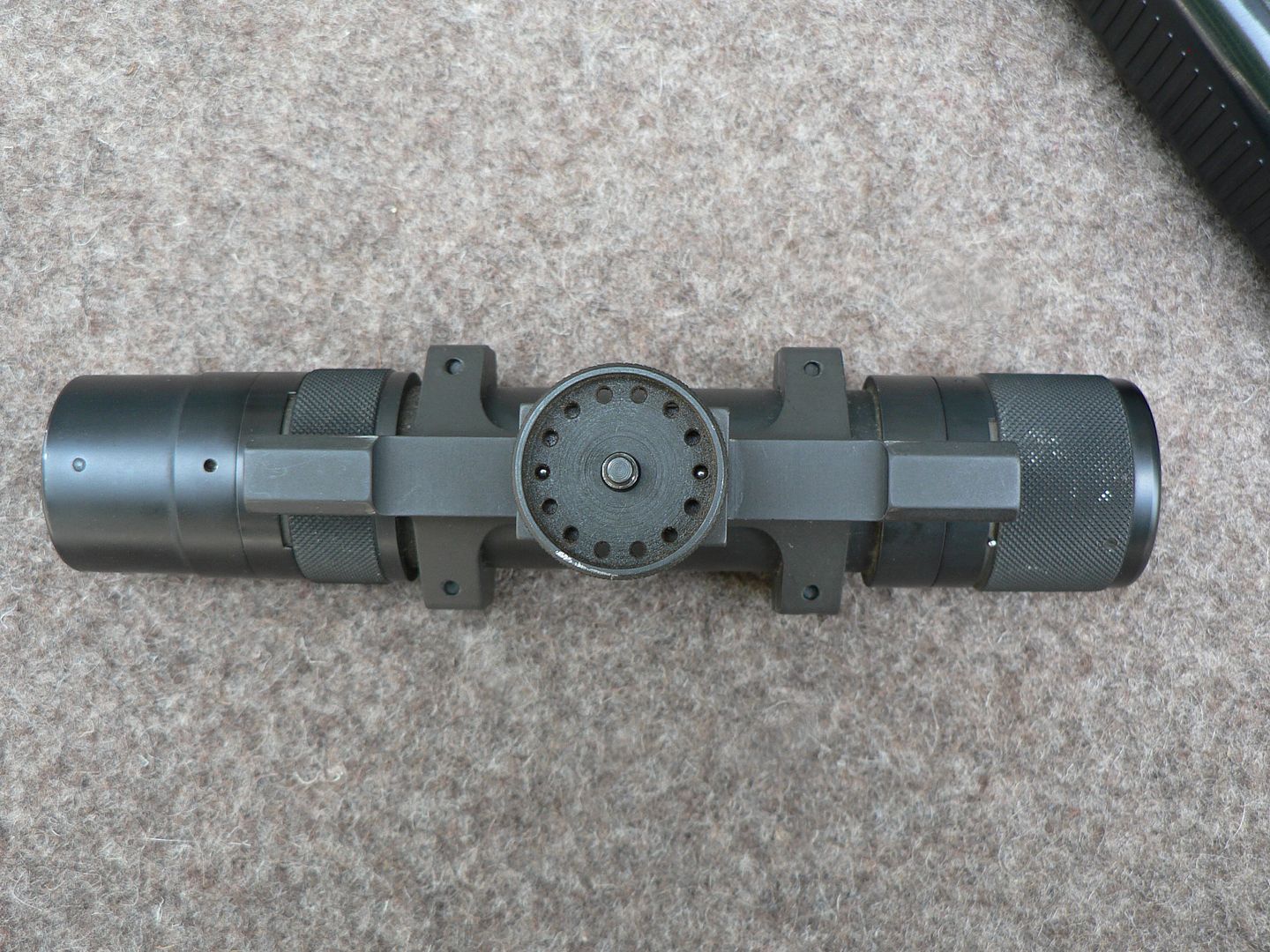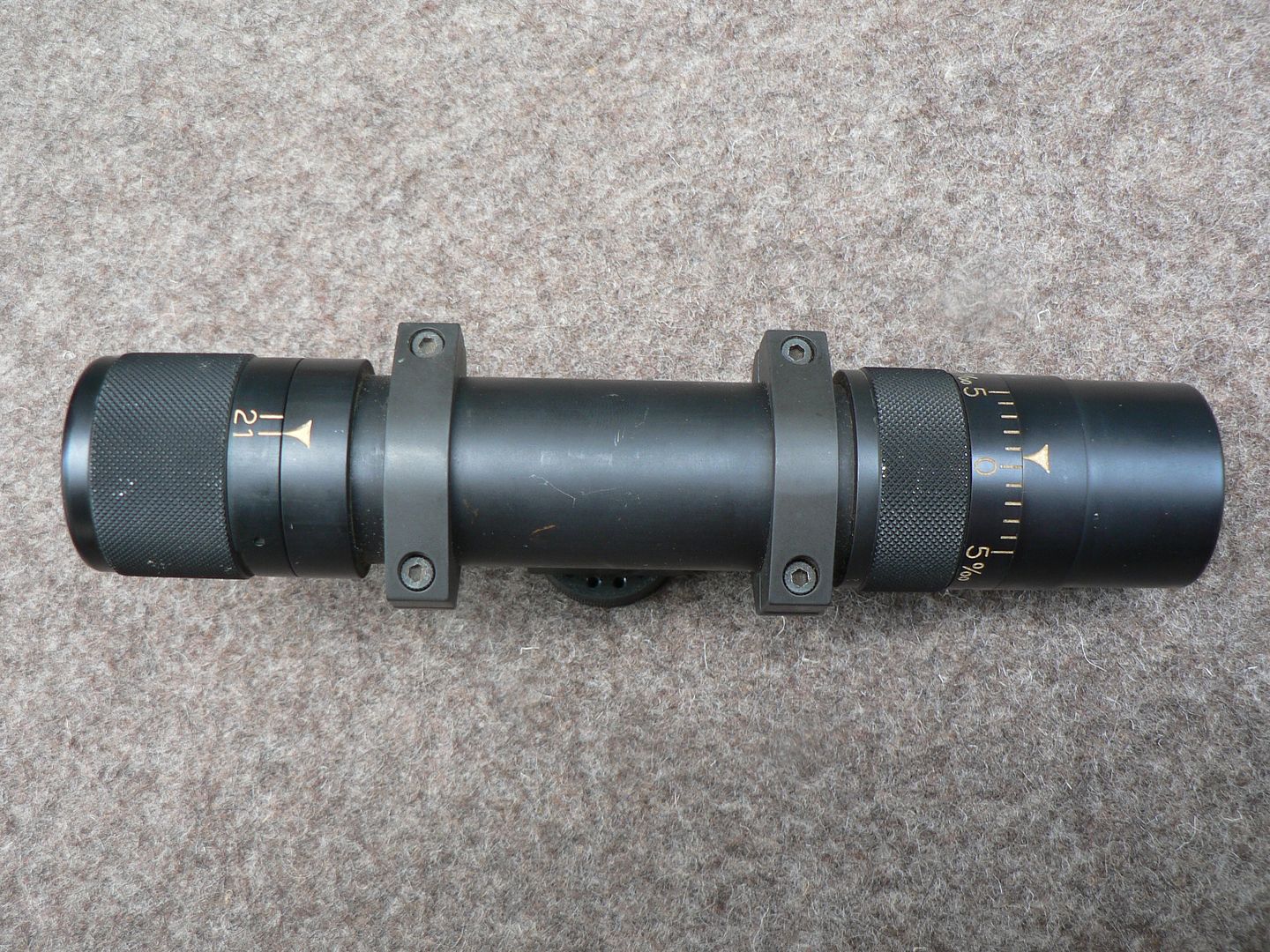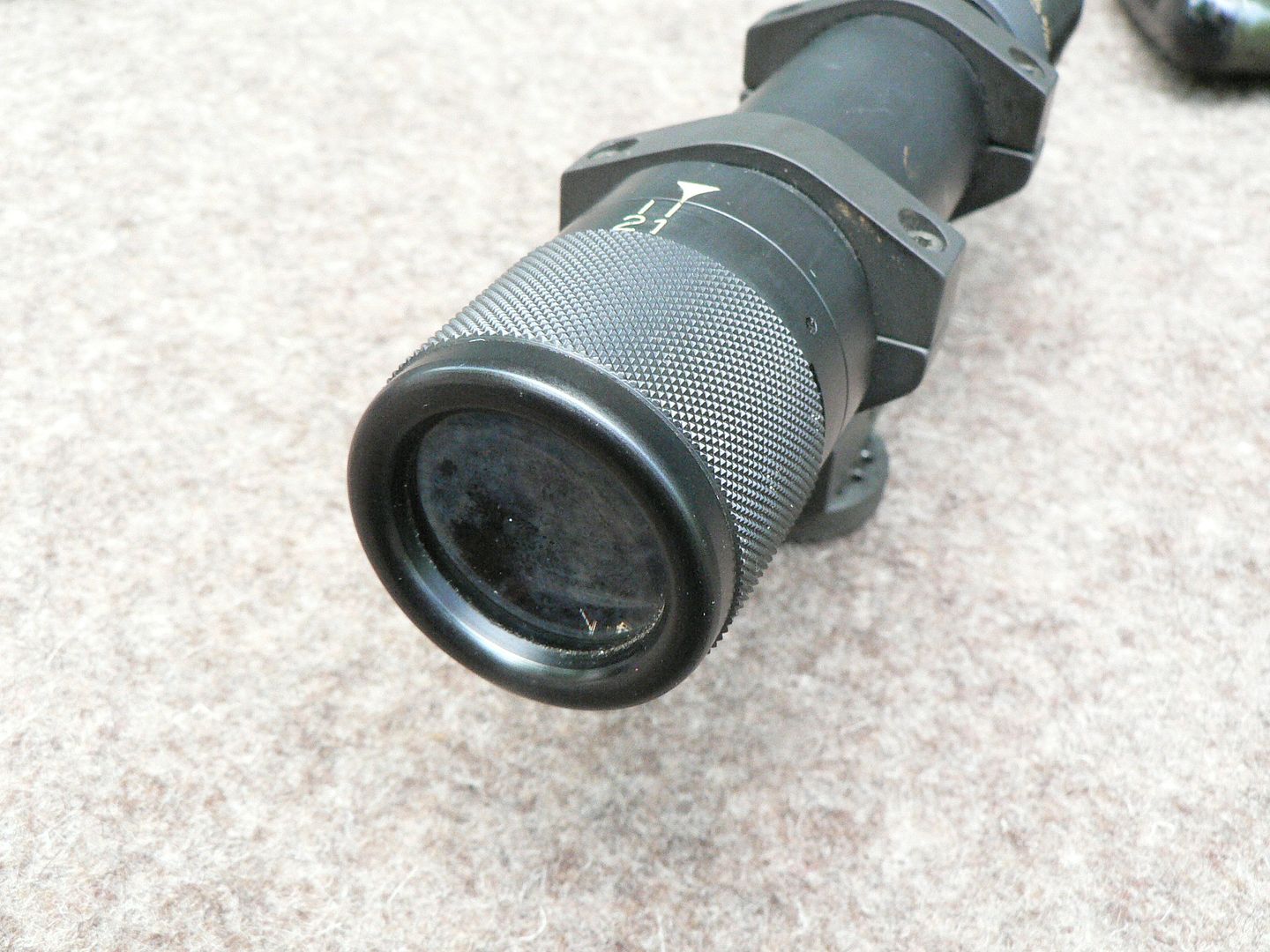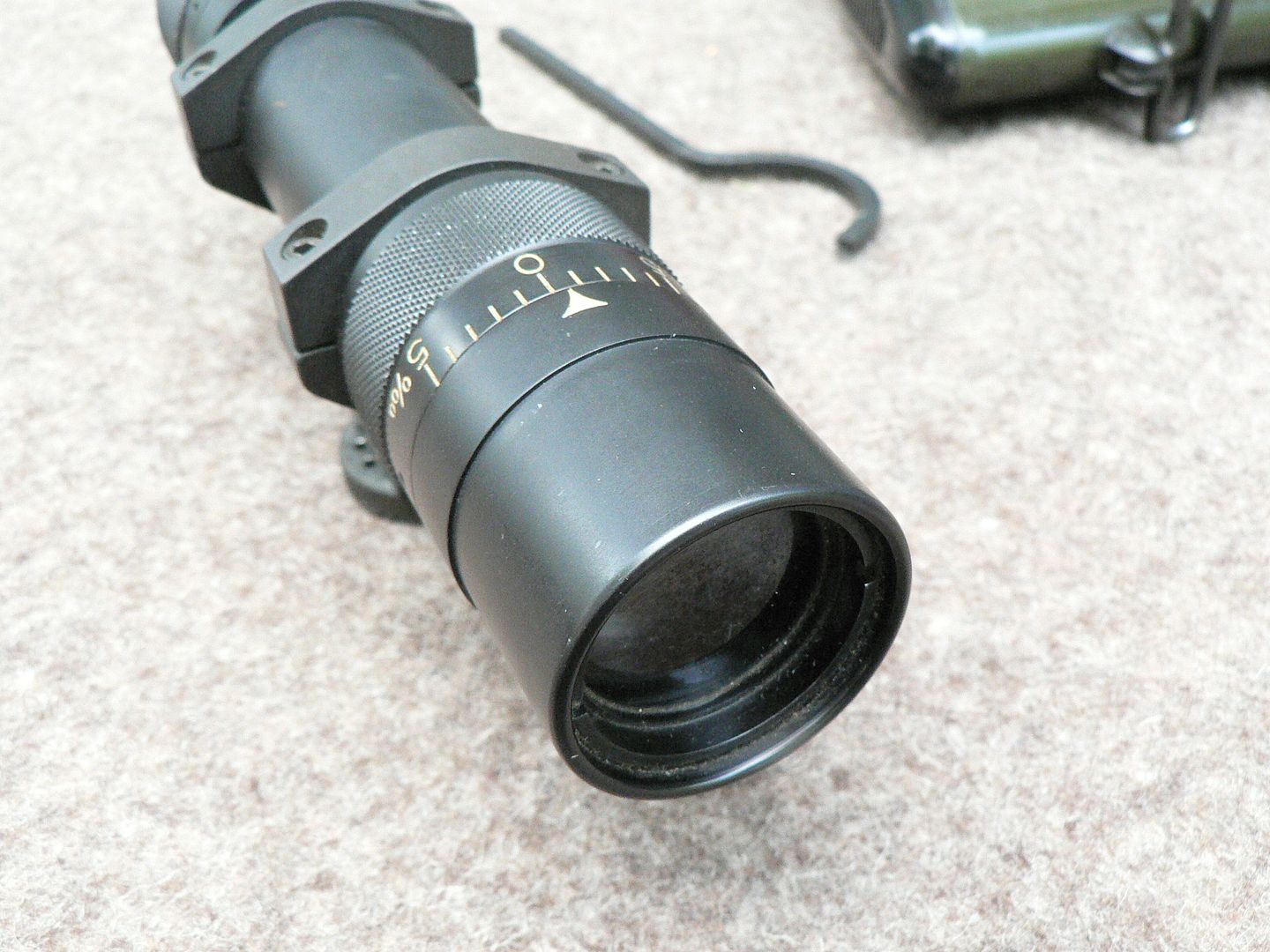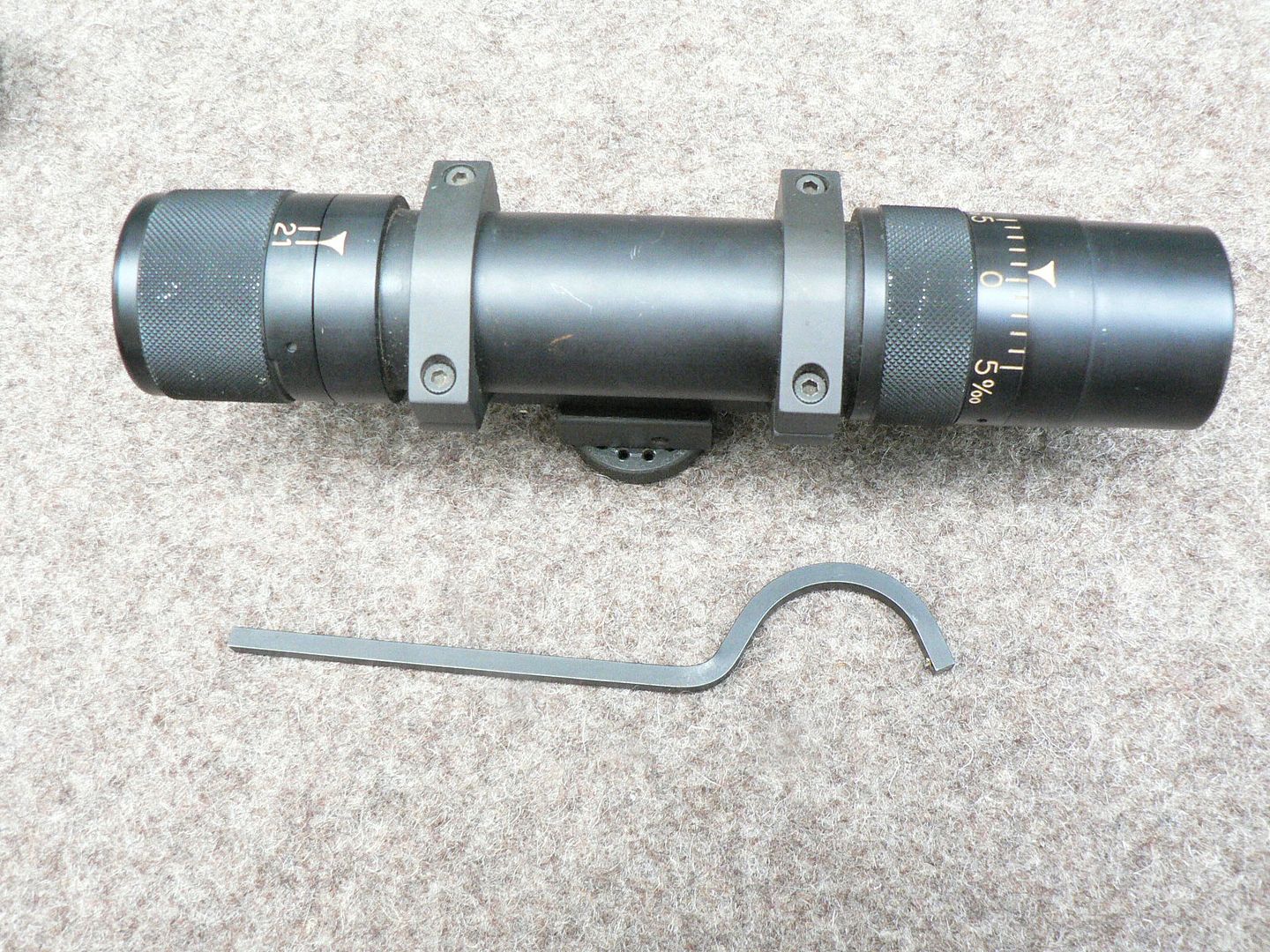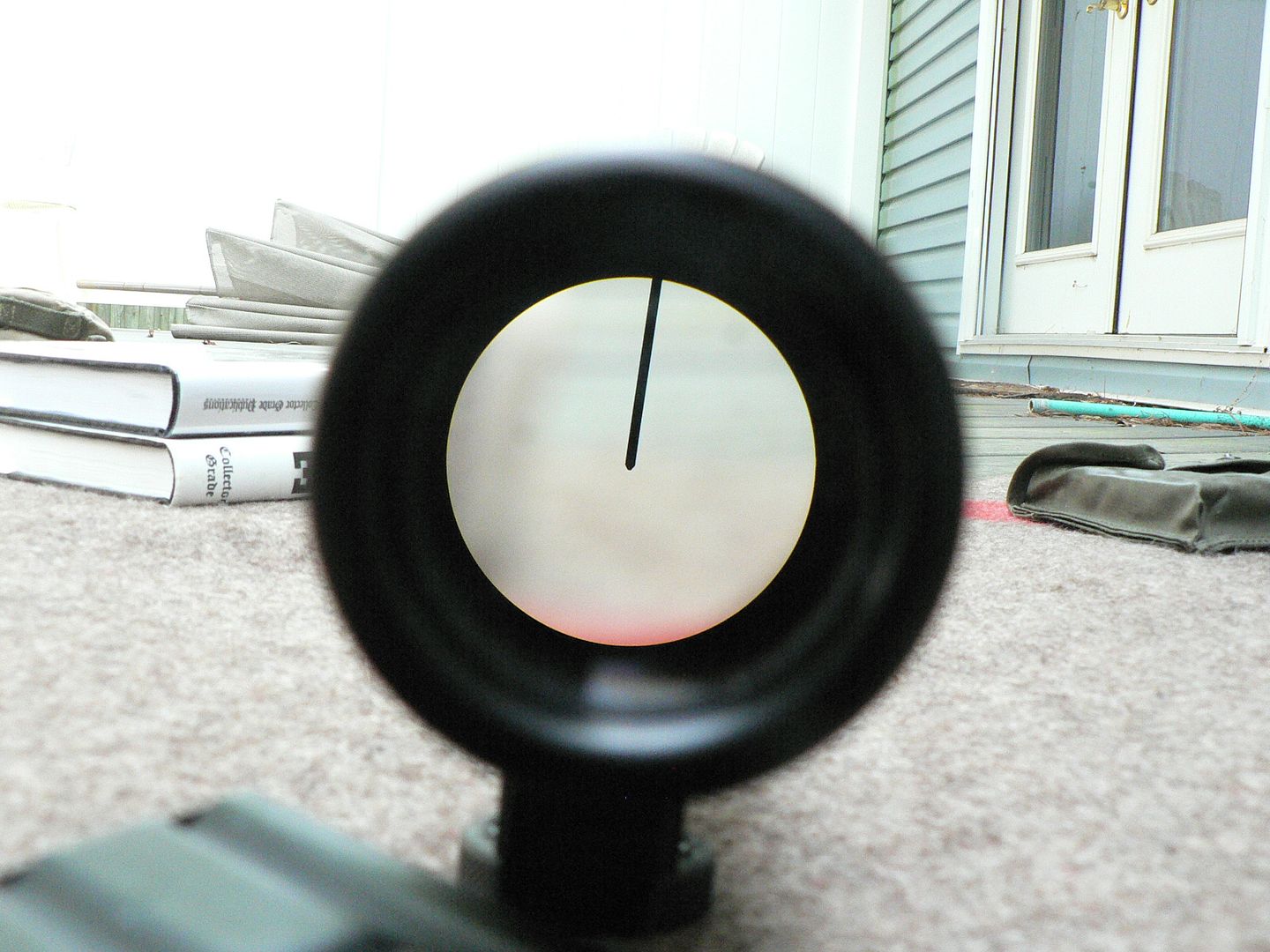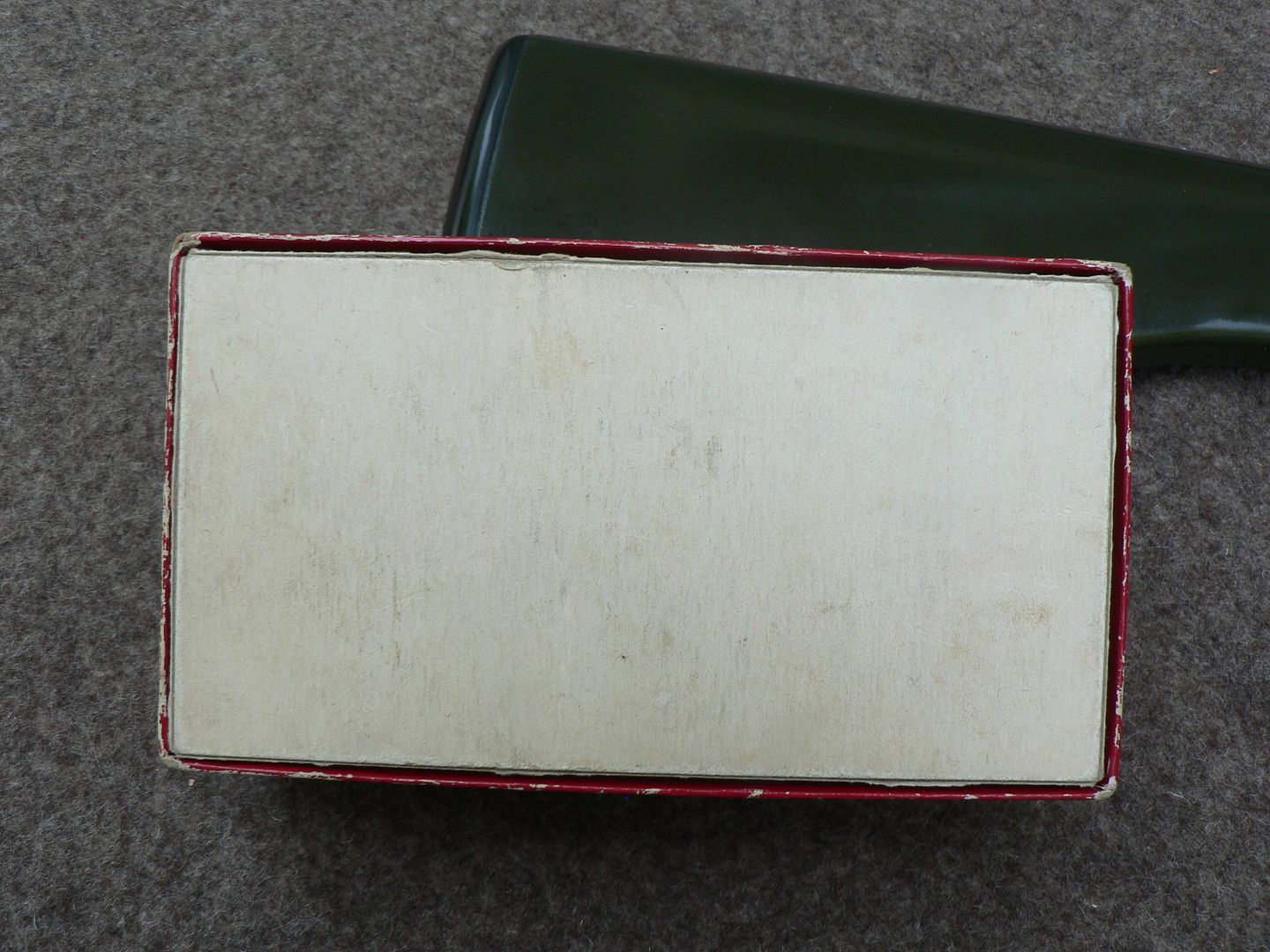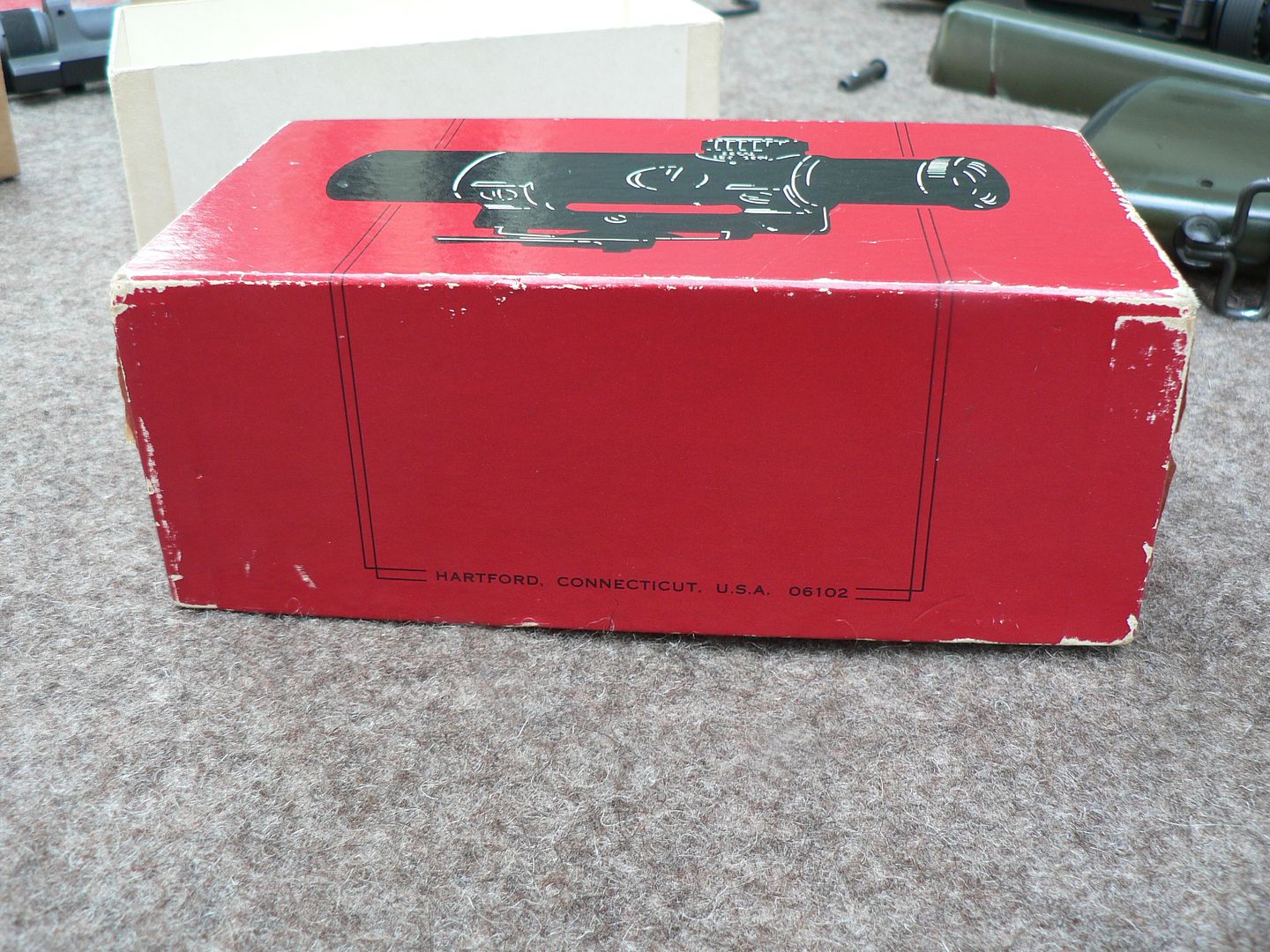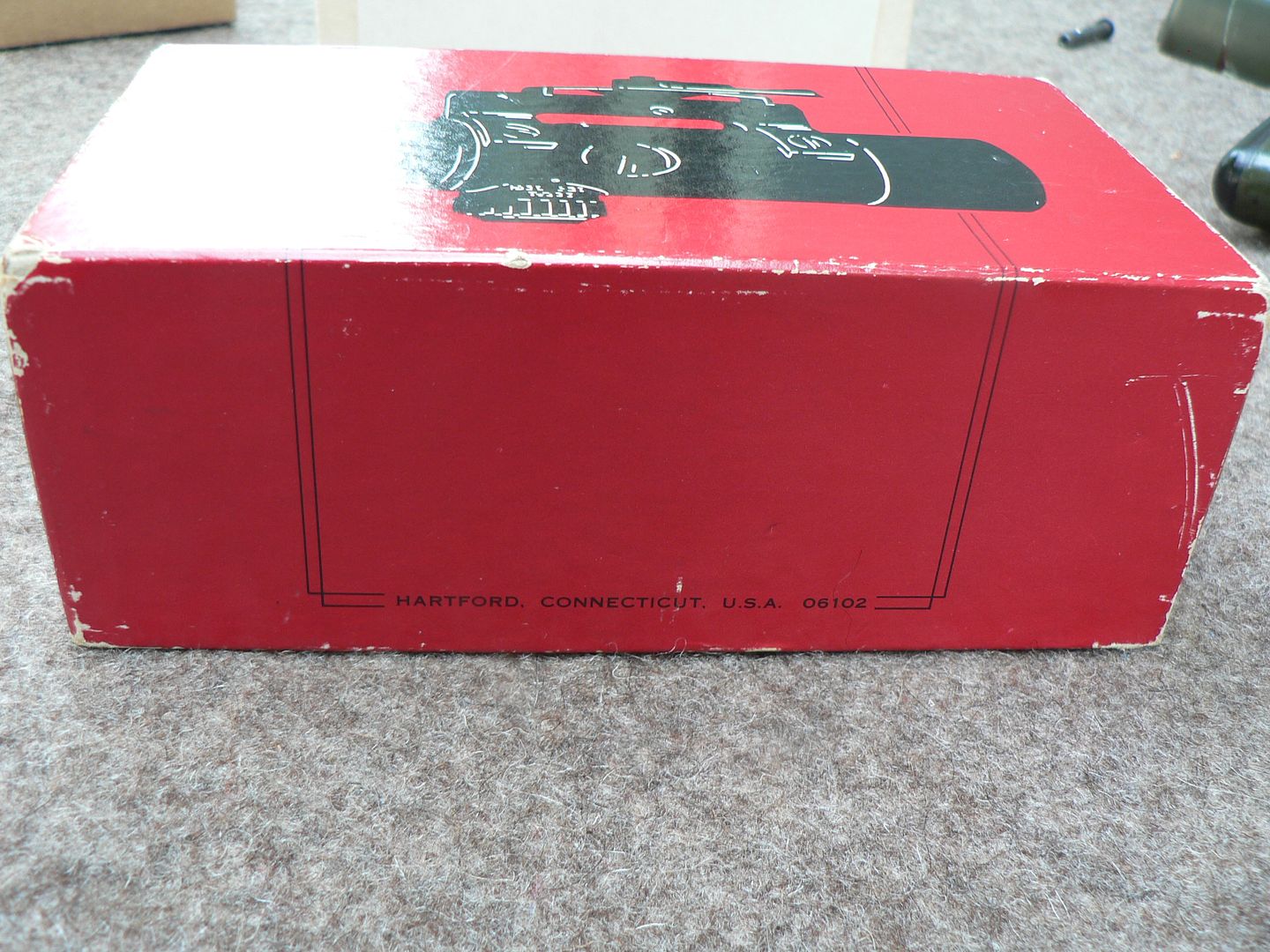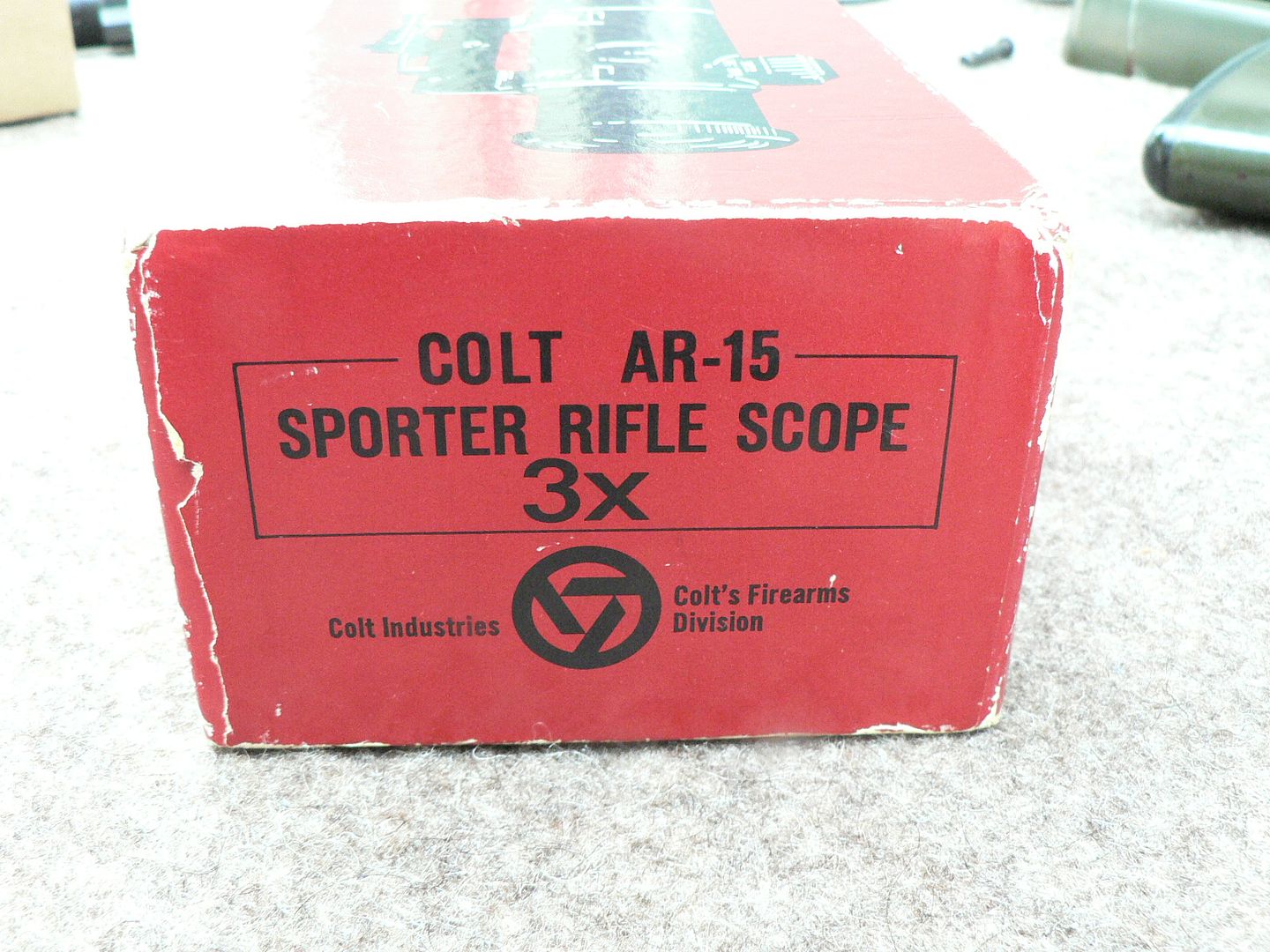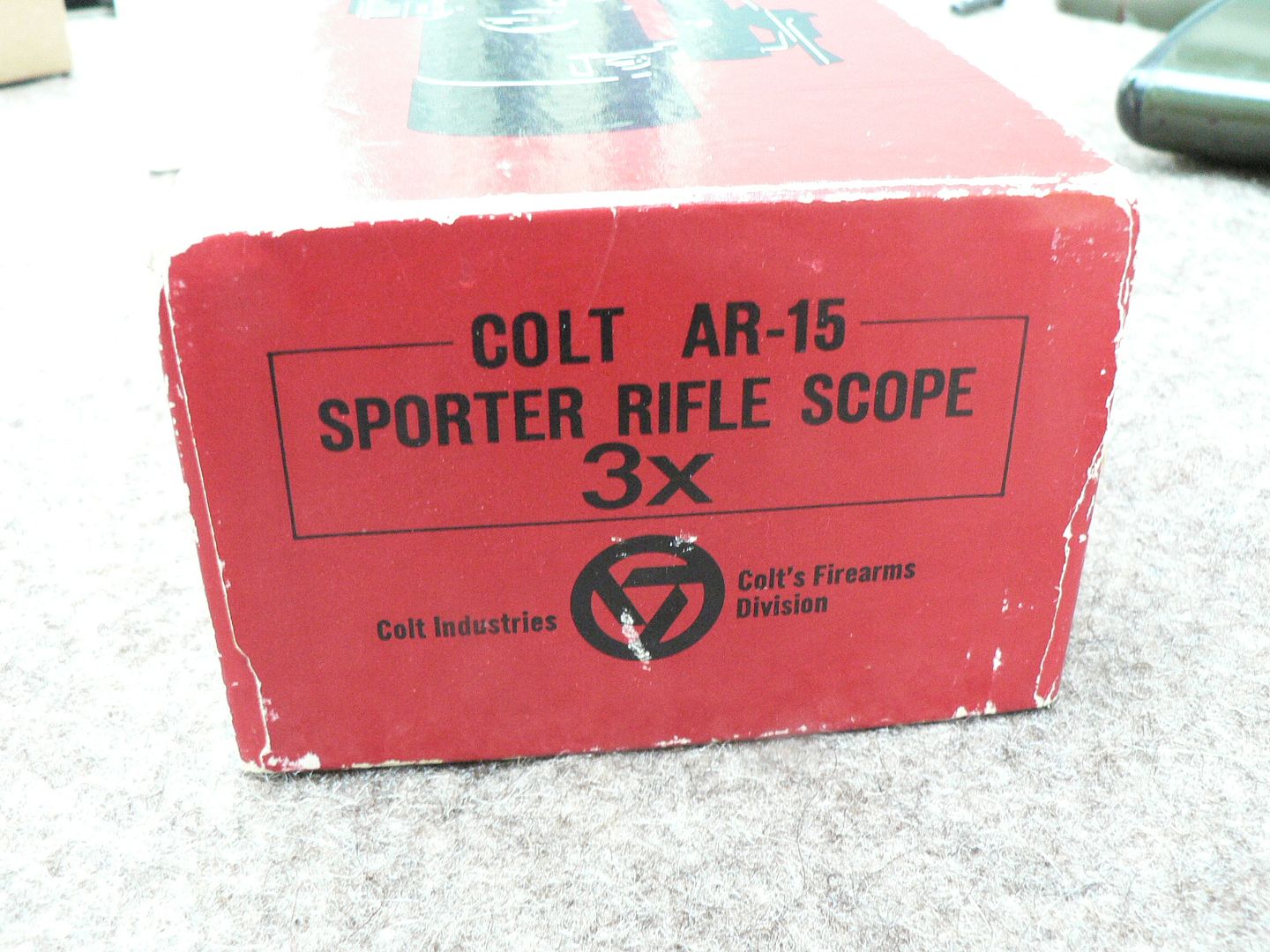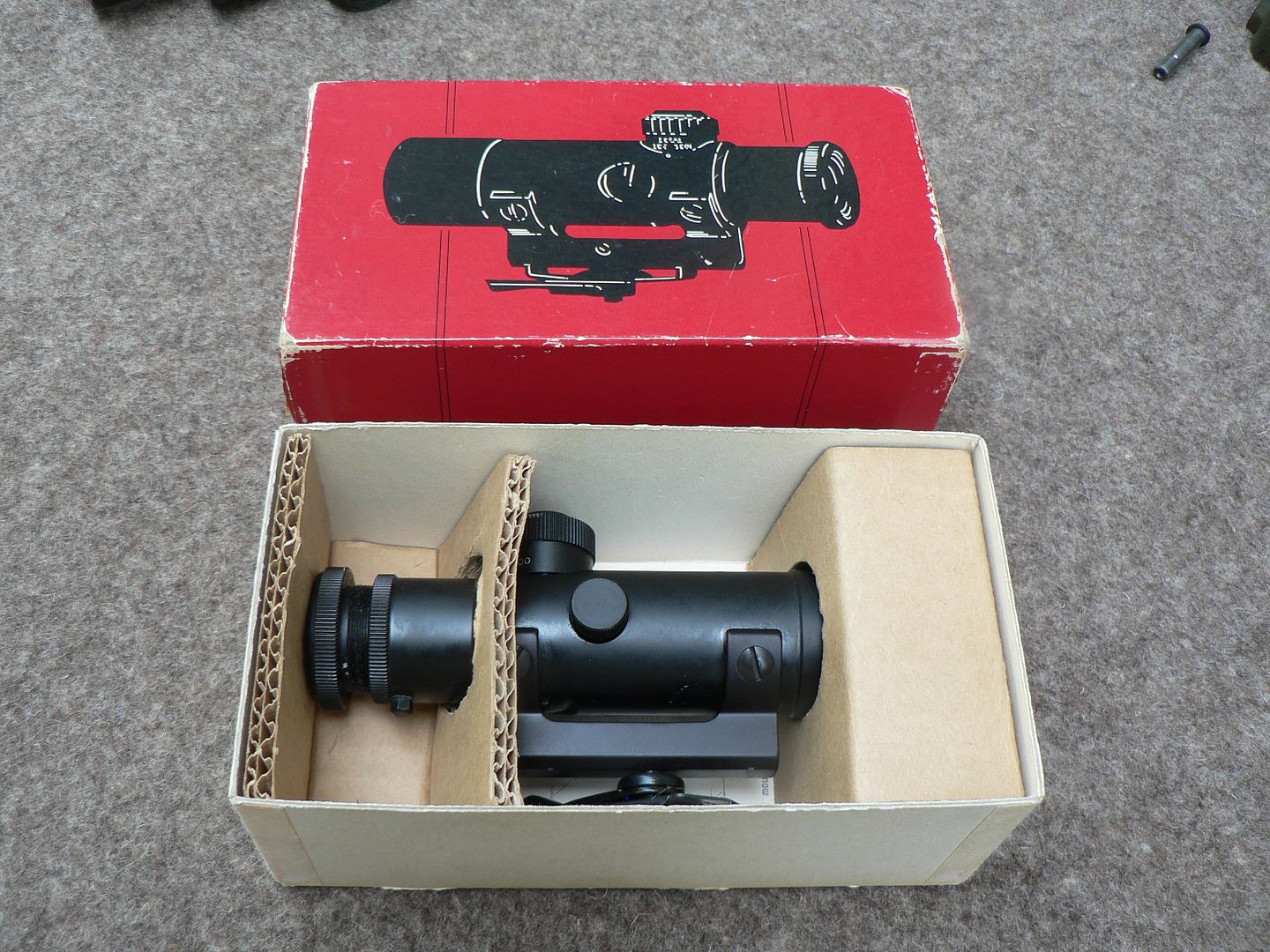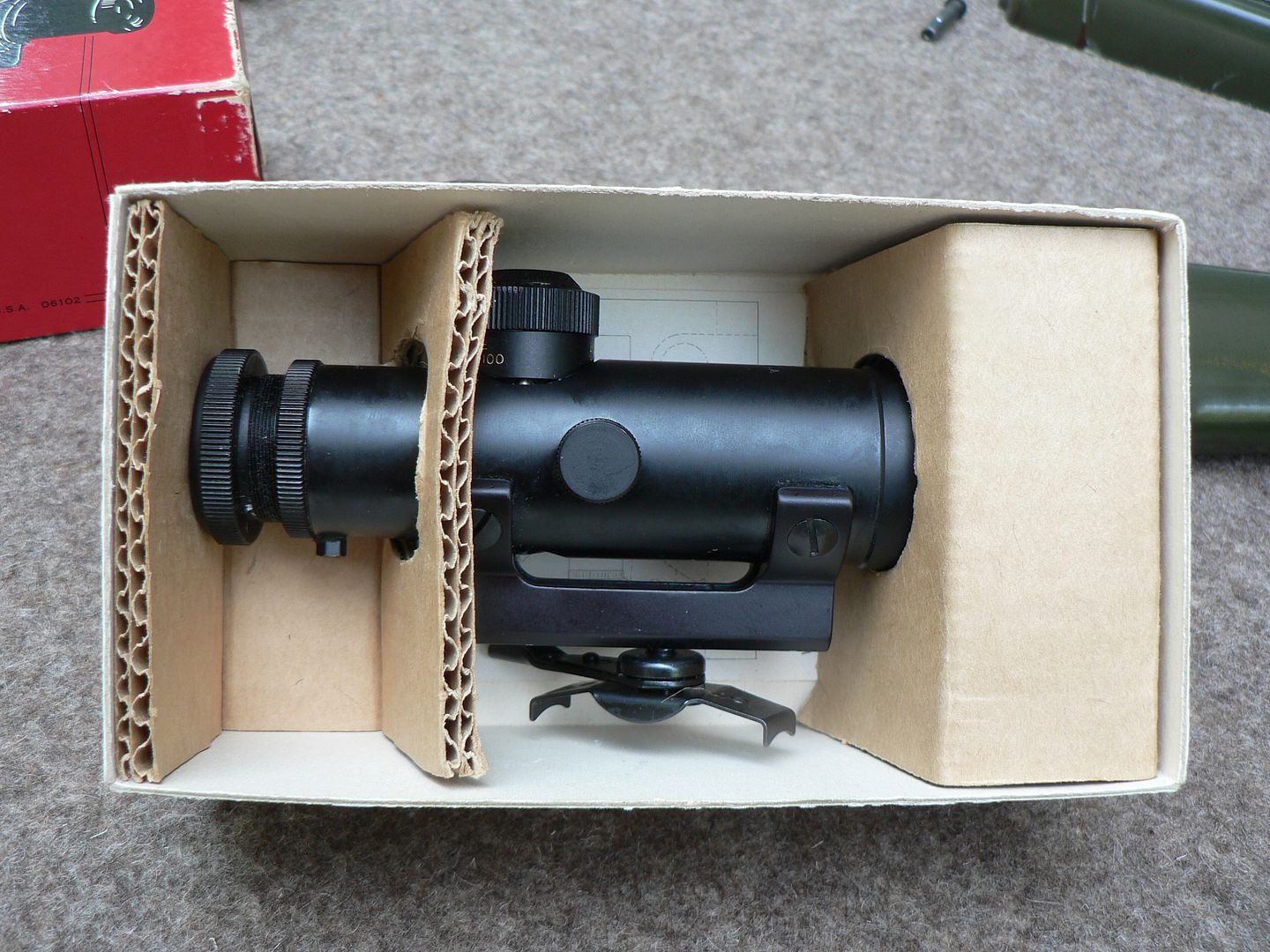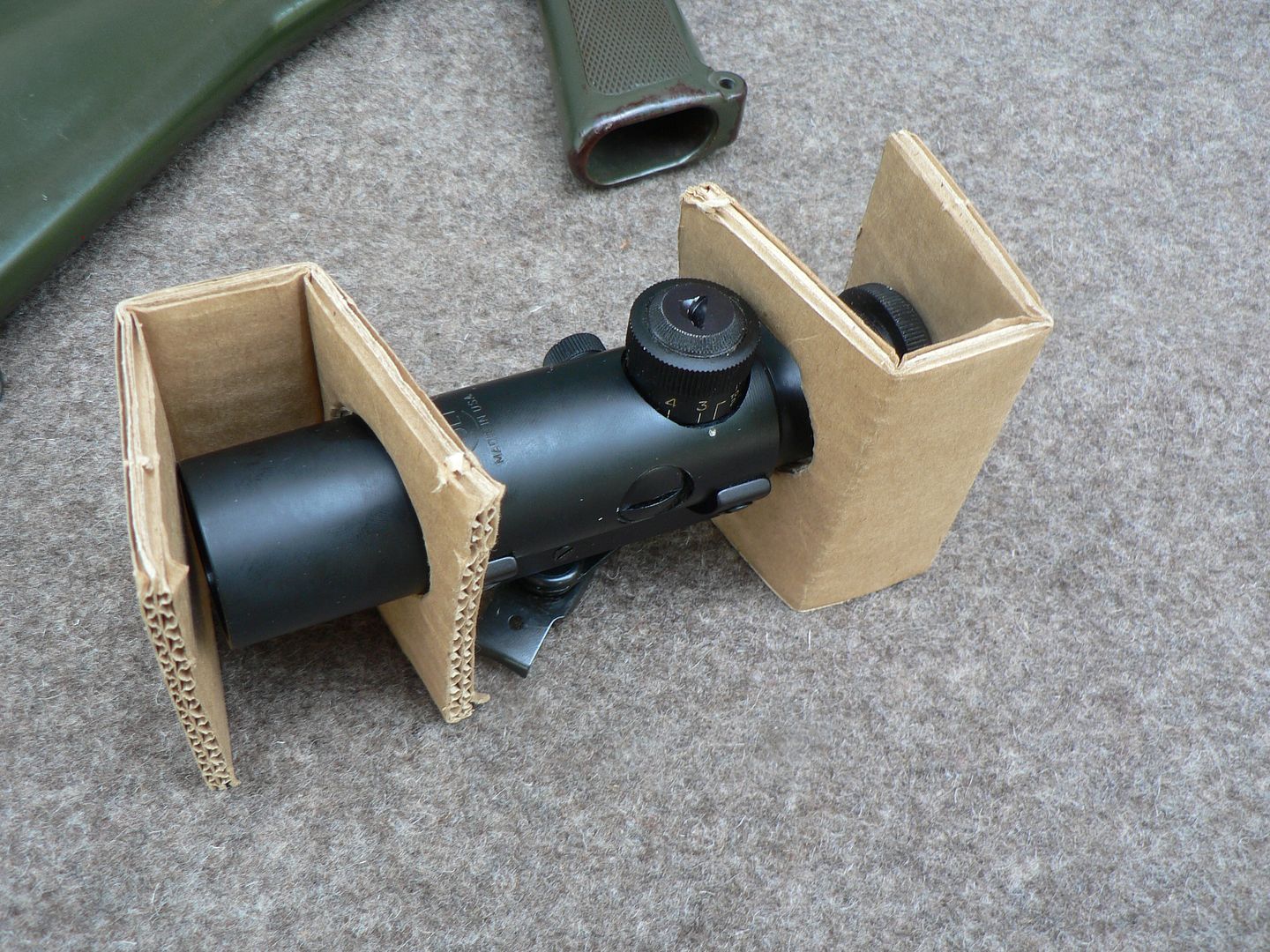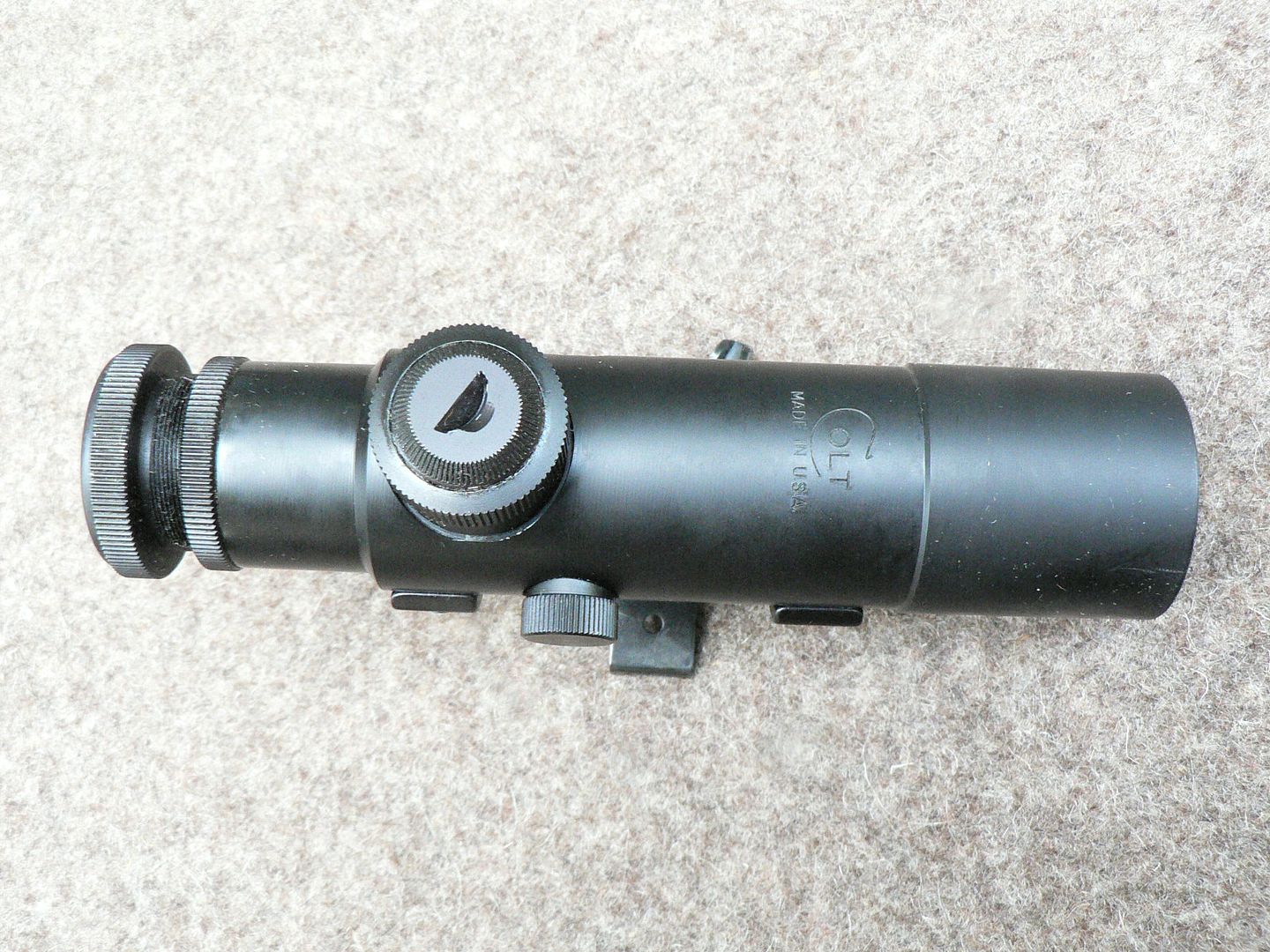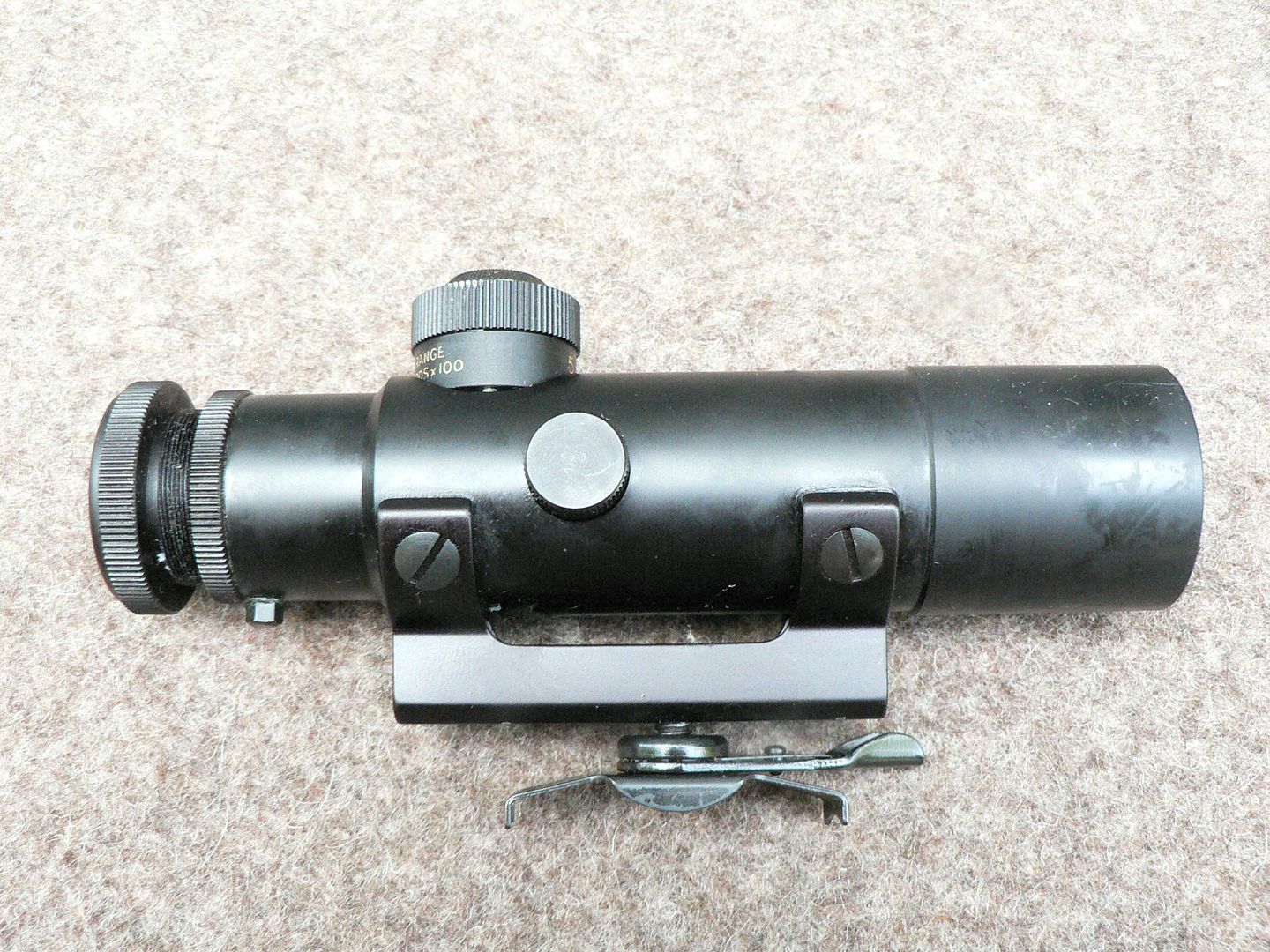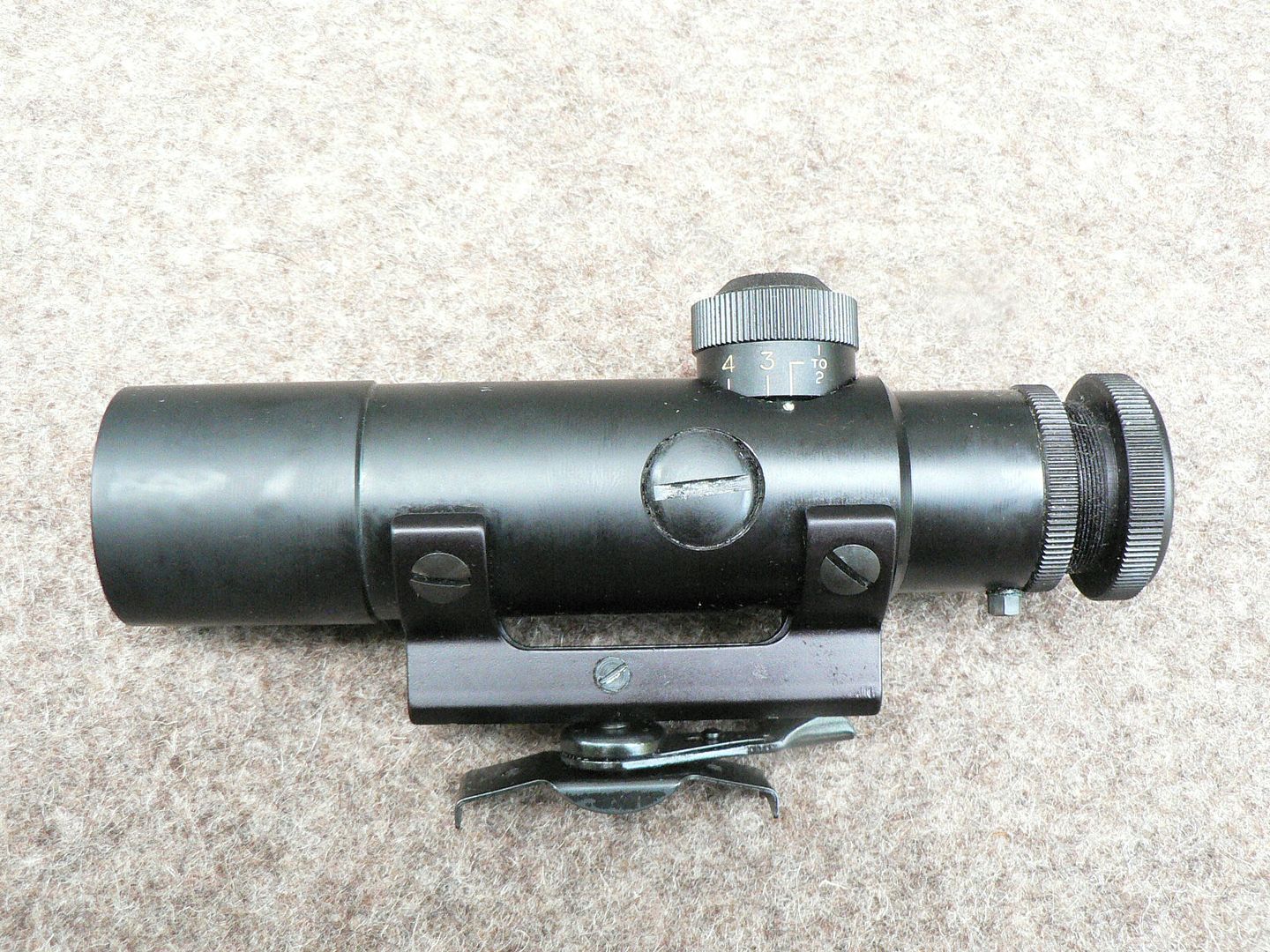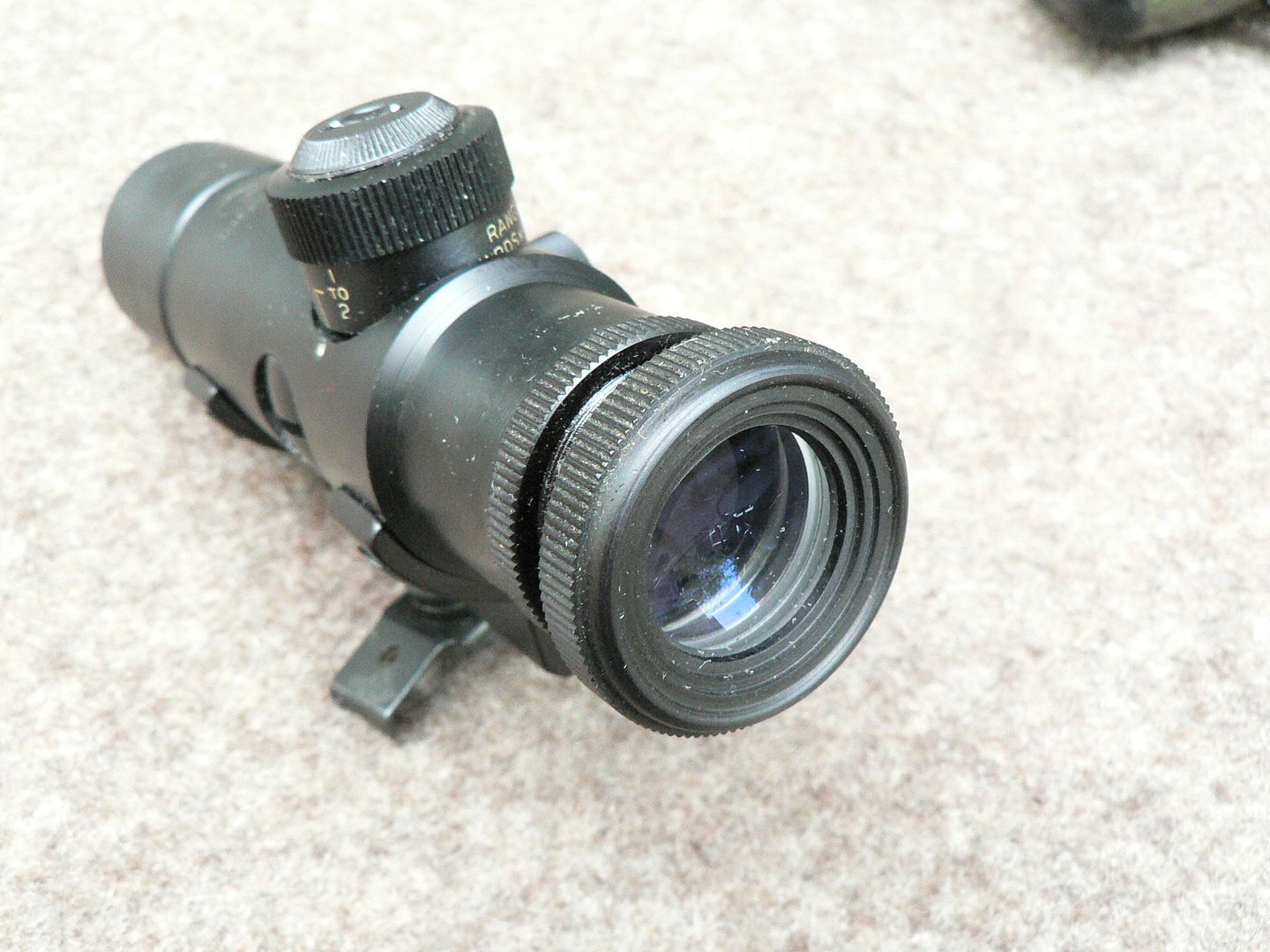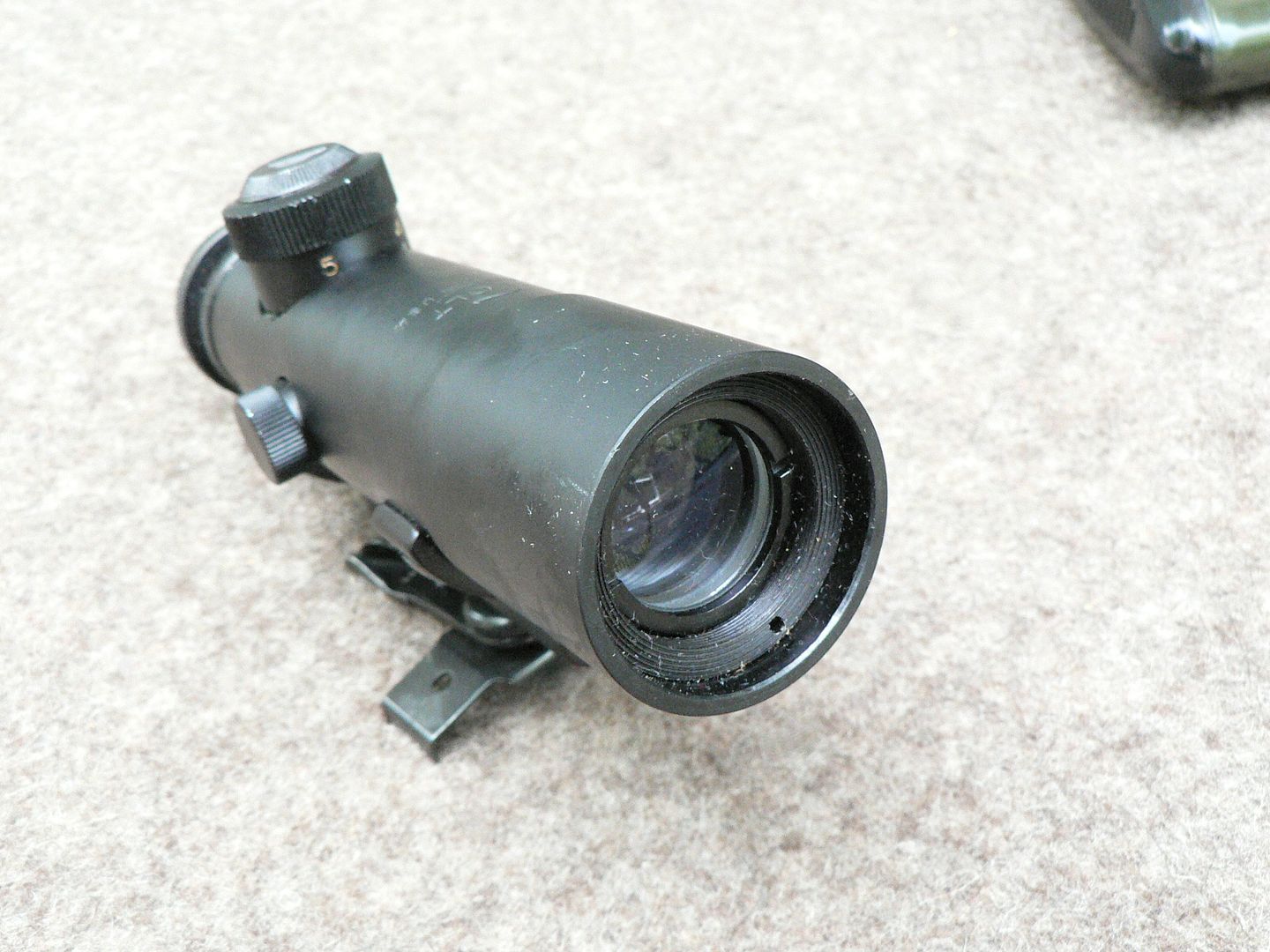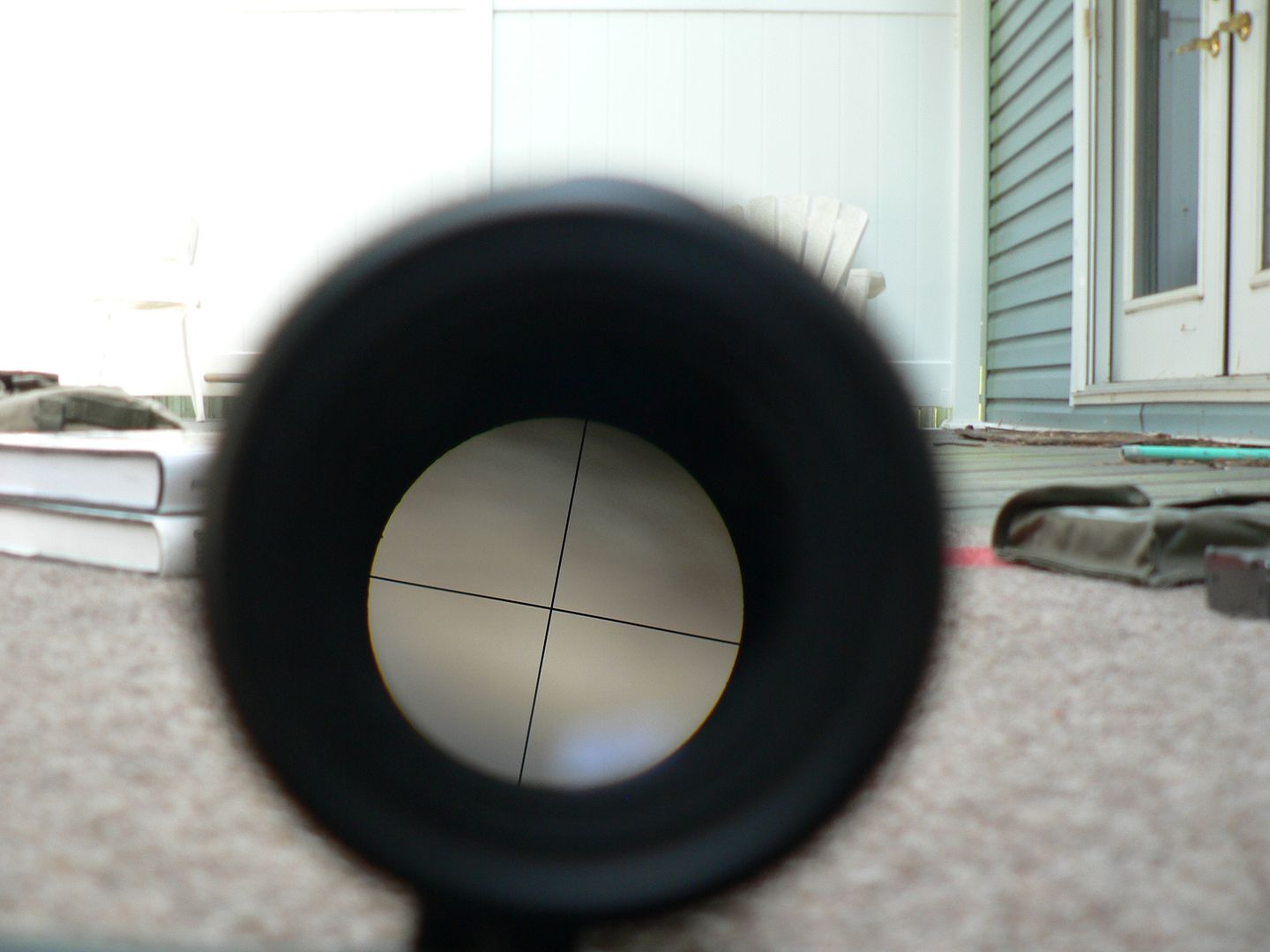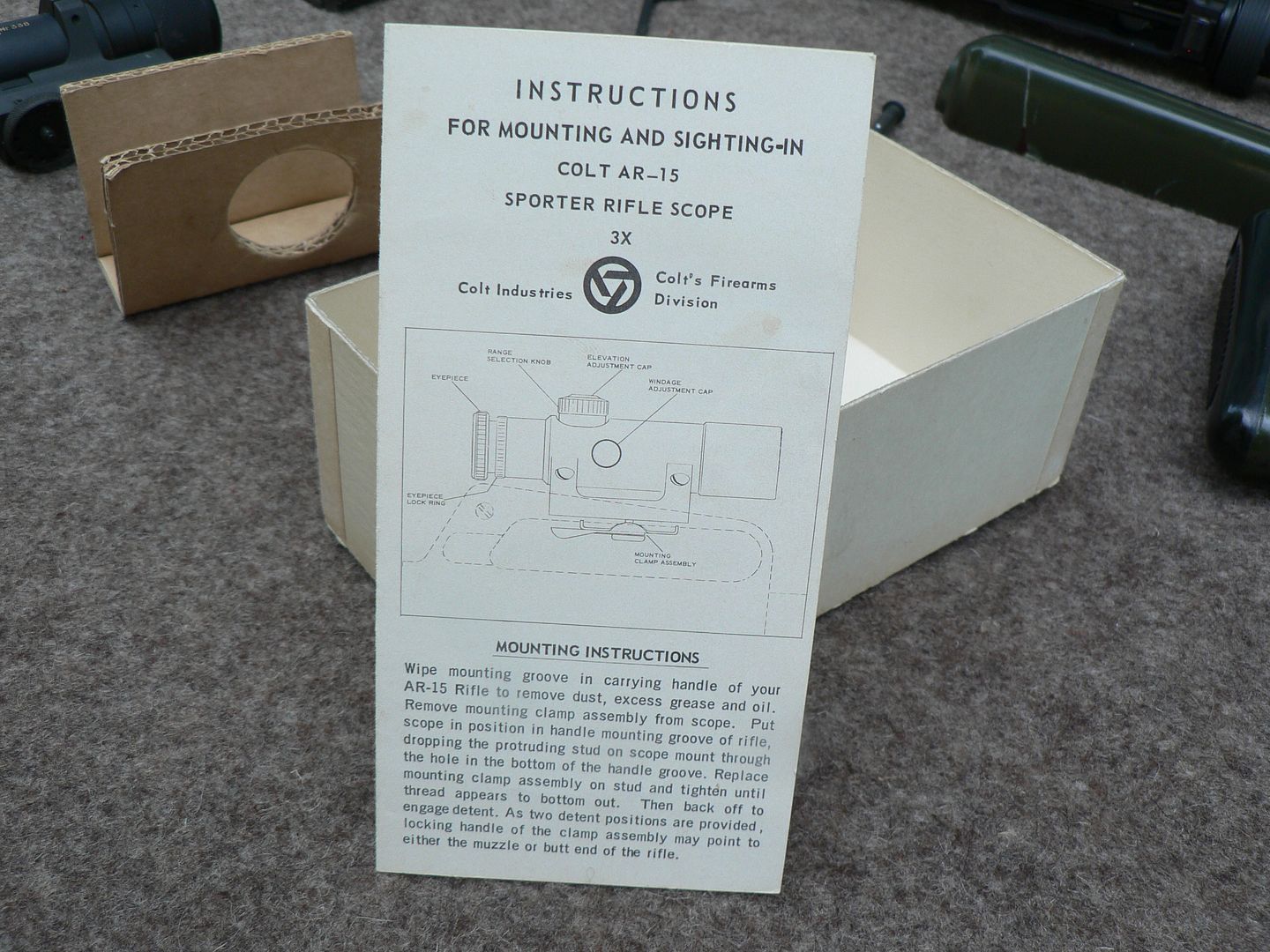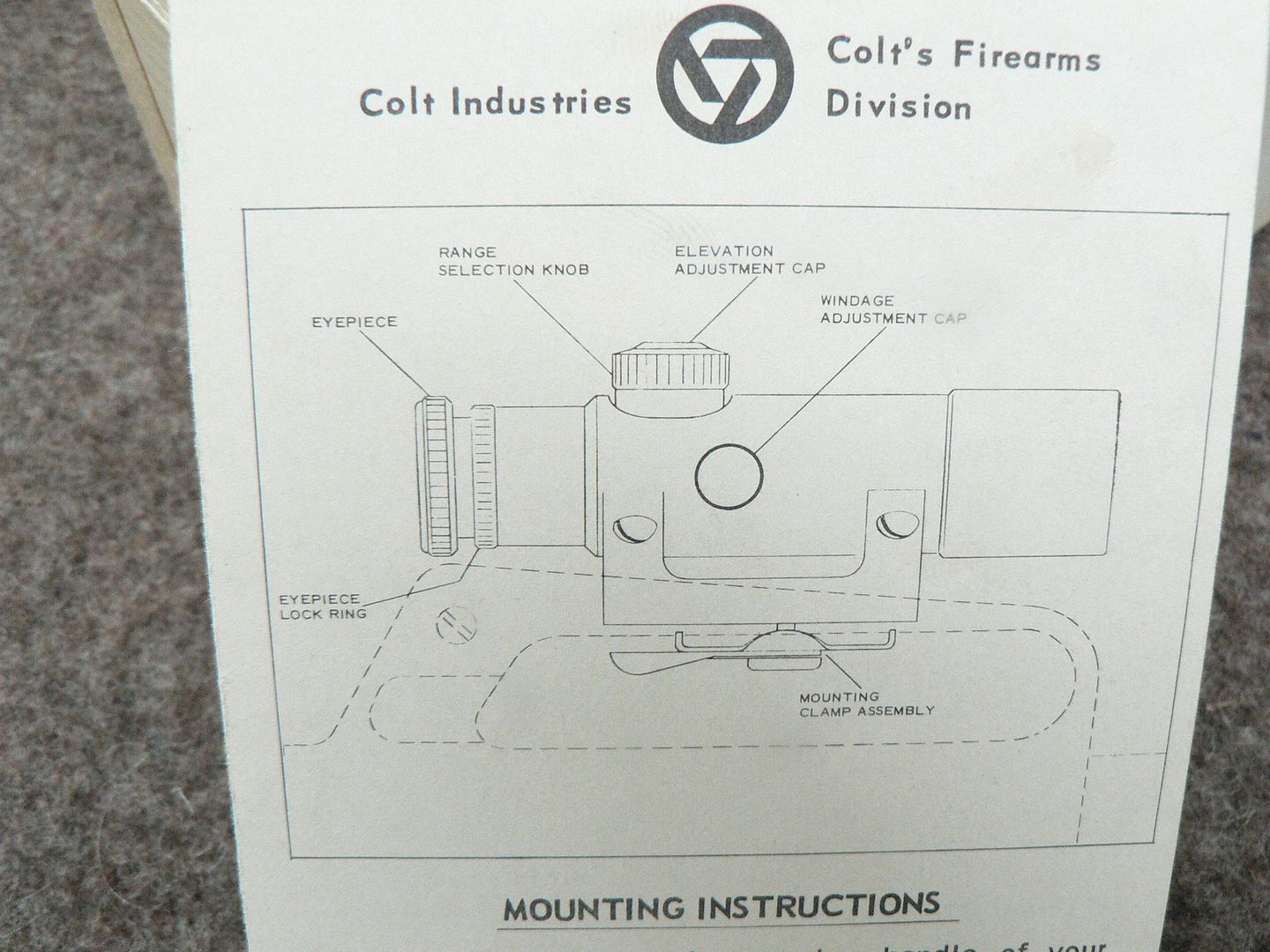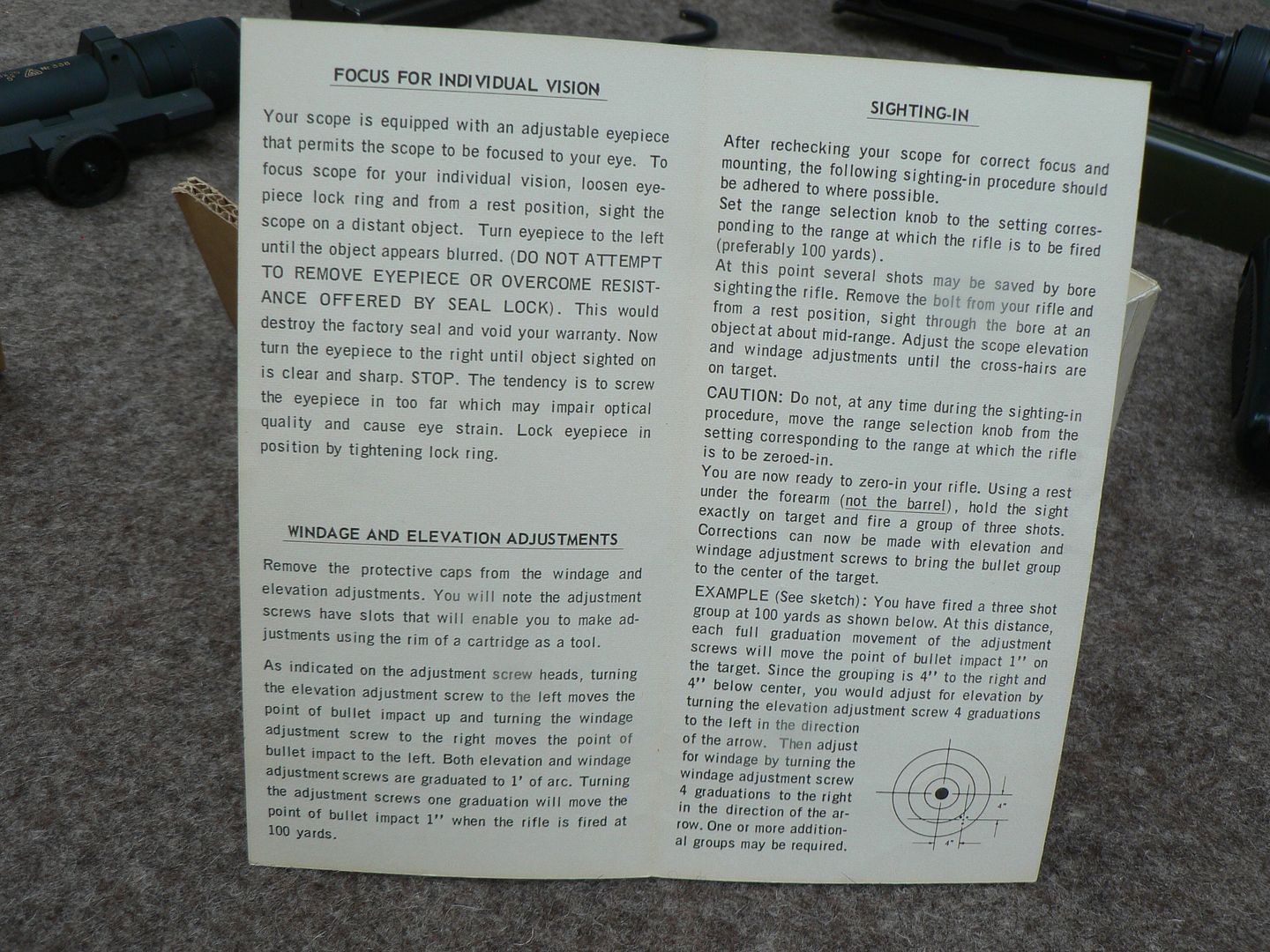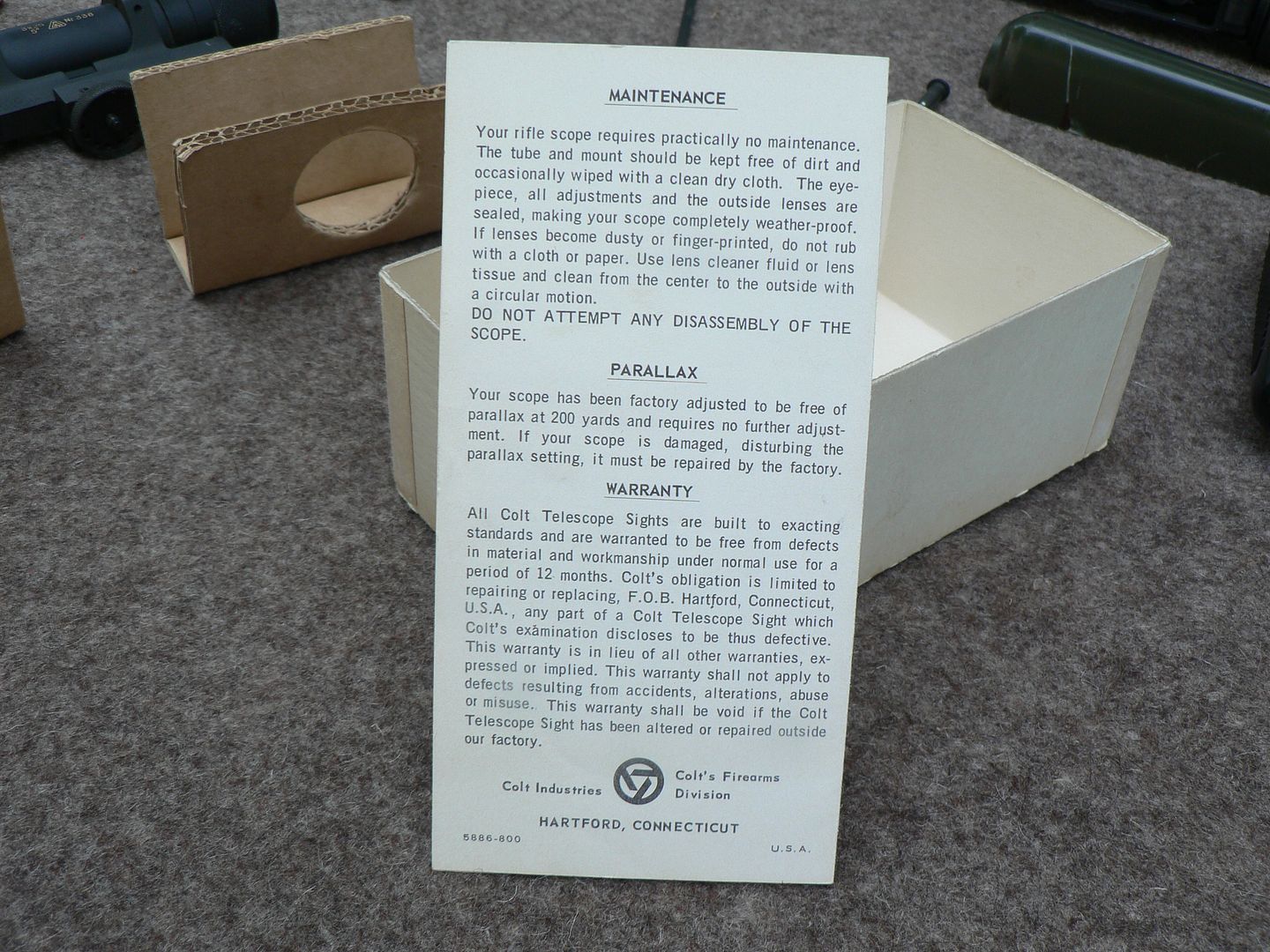Combloc
Stop Negassing me!!!!!
Now it's time to look at the bolt assembly. For the most part, it's the same as a standard modern AR15 bolt but it's got lots of bling because it's almost entirely chromed. Still there are some differences and I'll point out the ones I know as we go. I'm no expert so you might see things I missed. If so, let me know because this is all about learning!
Right side:
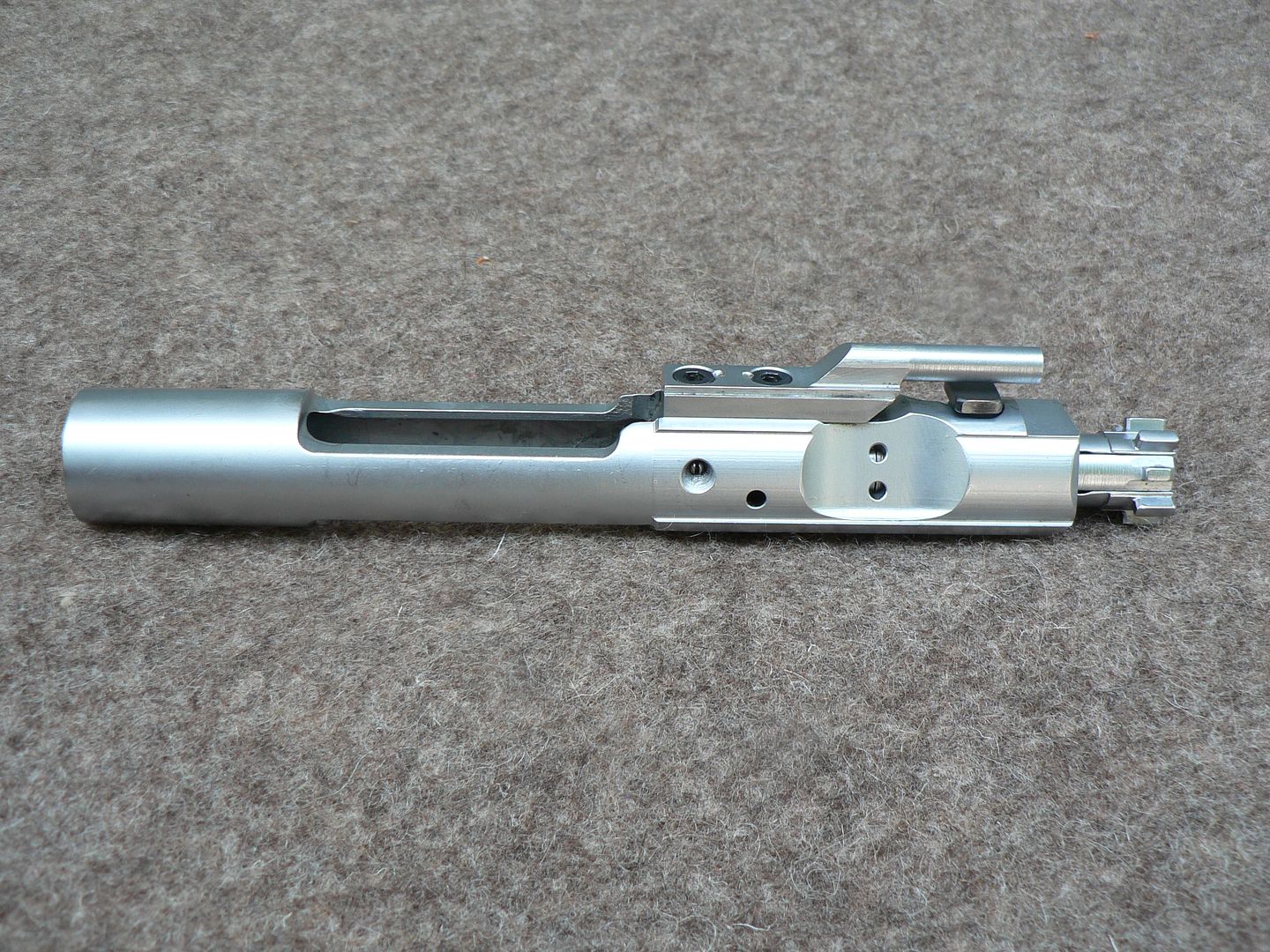
Left side:
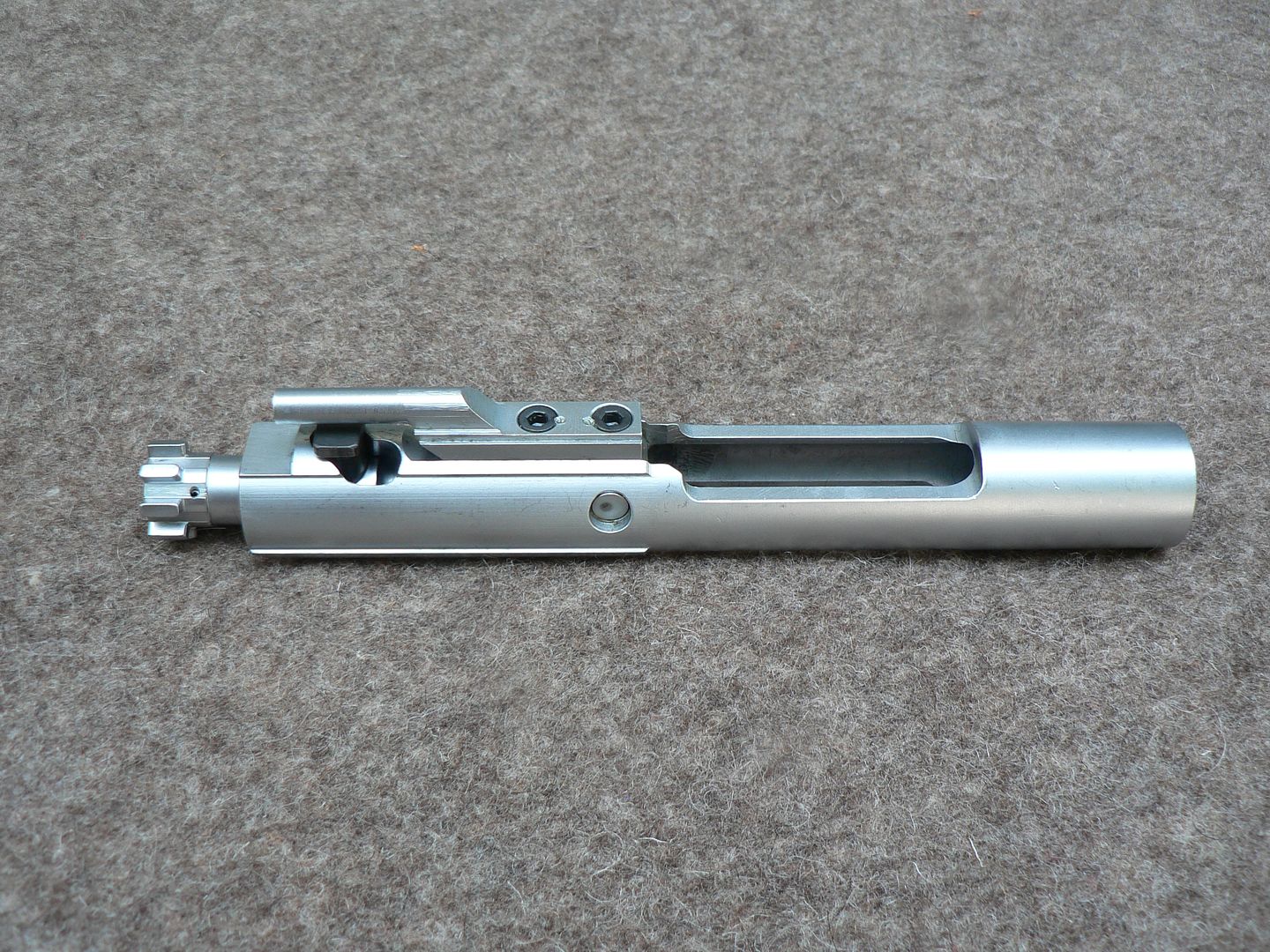
Note that the firing pin retainer pin is different. We'll look at that in a bit.
Top:

Bottom:
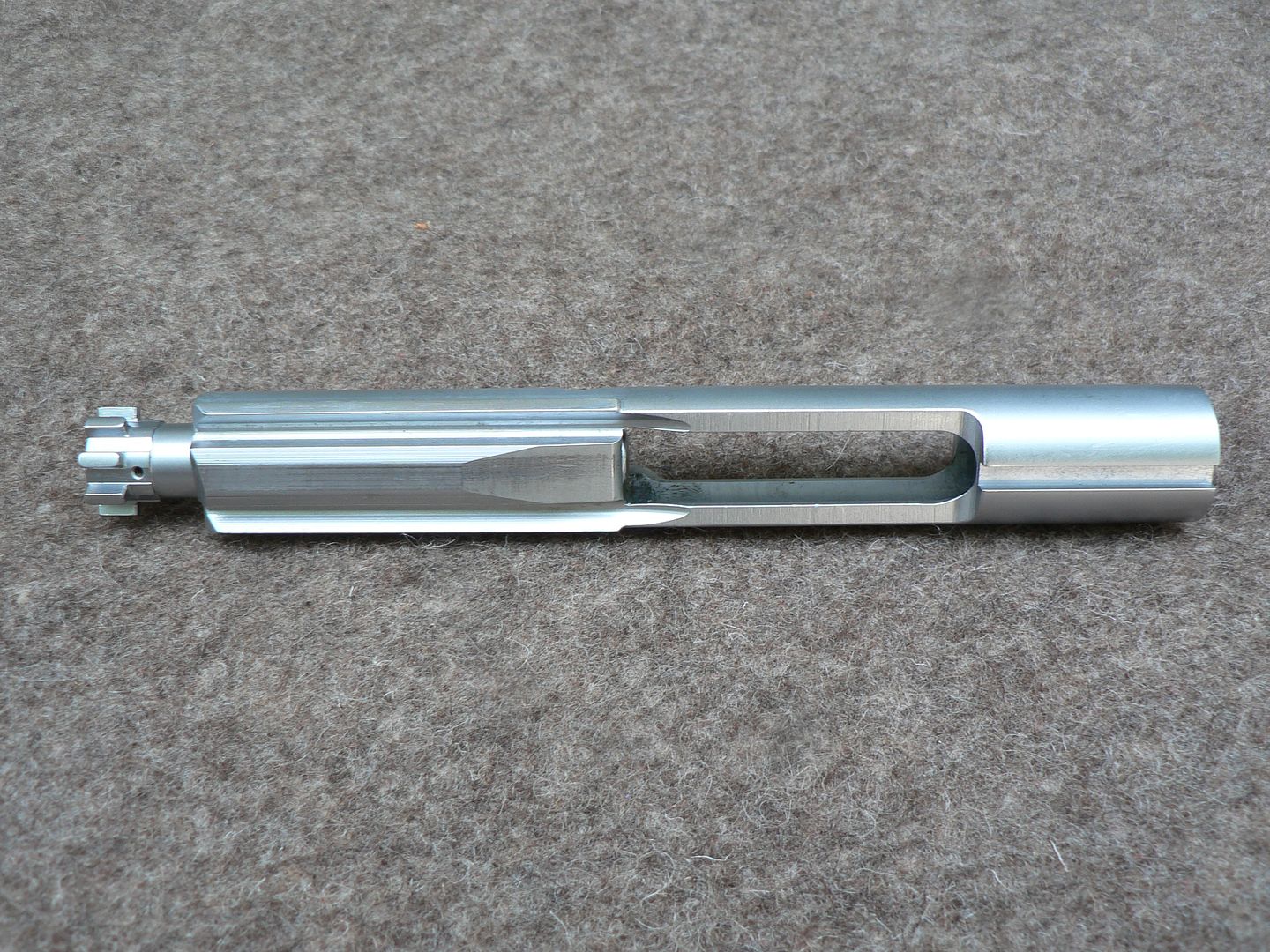
Bolt face:
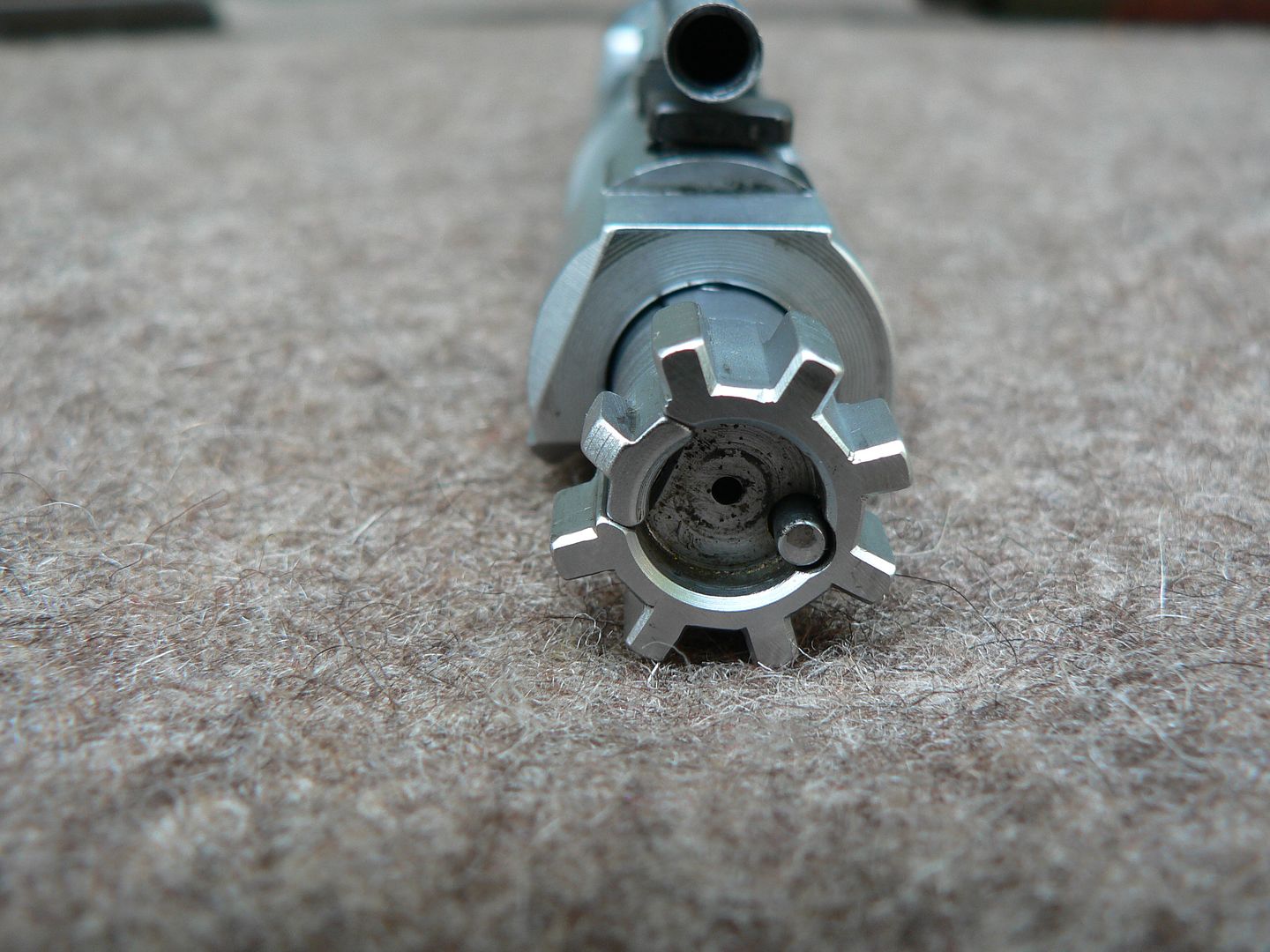
I want to say that newer locking lugs might be beefed up compared to these but I might be wrong??
Rear of the firing pin in situ:
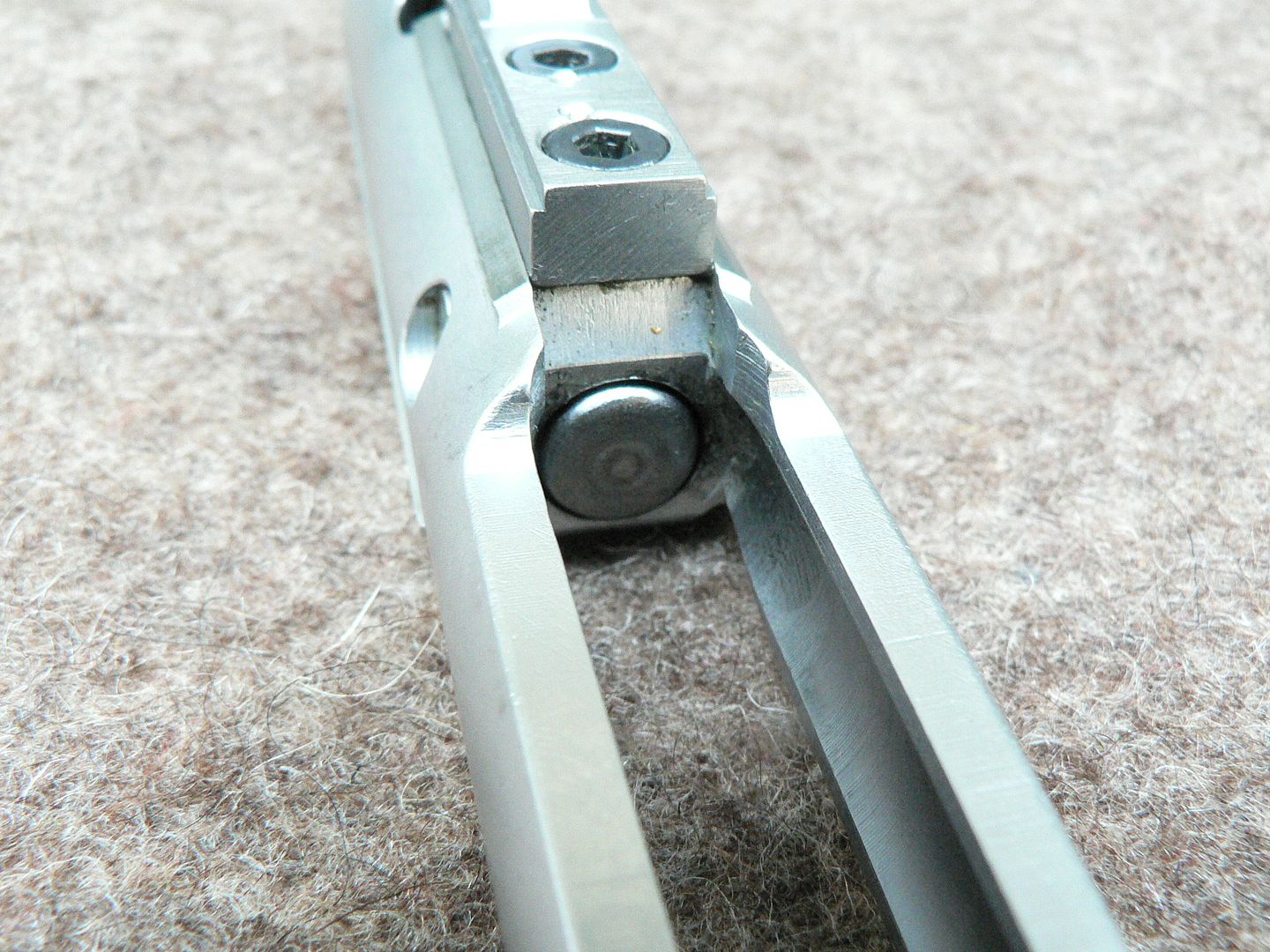
Disassembled:
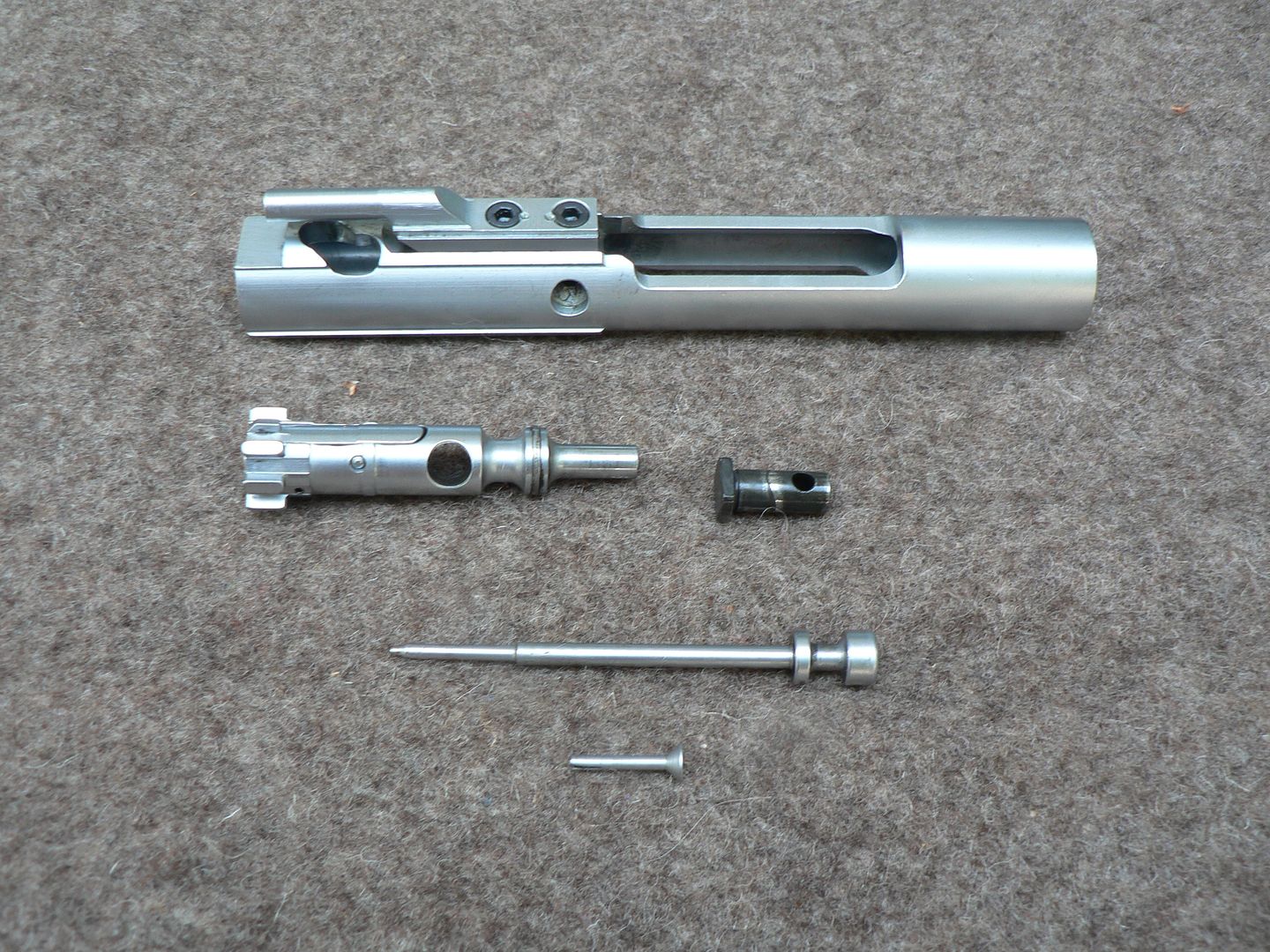
There is nothing special in the way it comes apart. It's still the same today.
Closeups of the firing pin retainer pin:
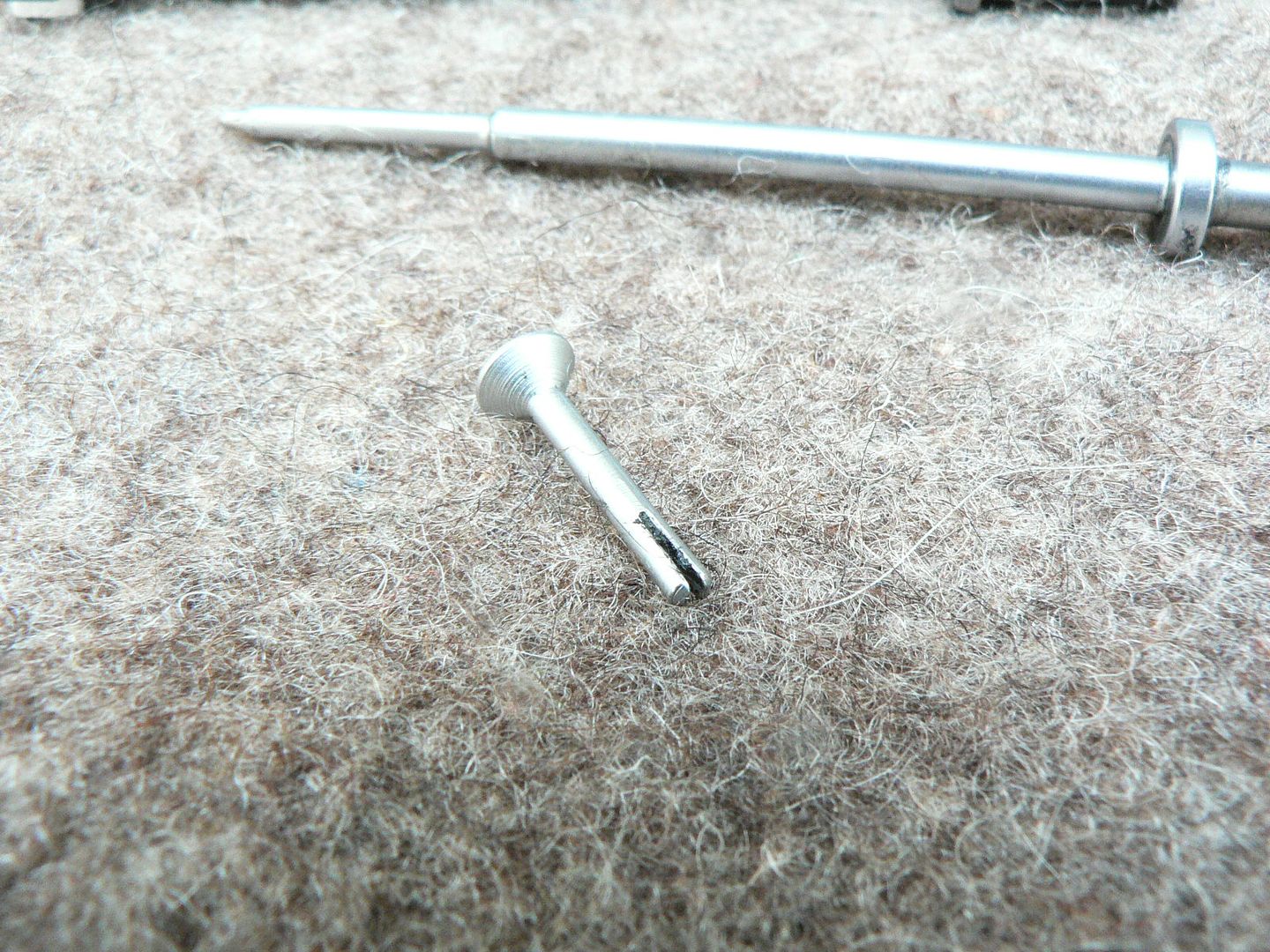
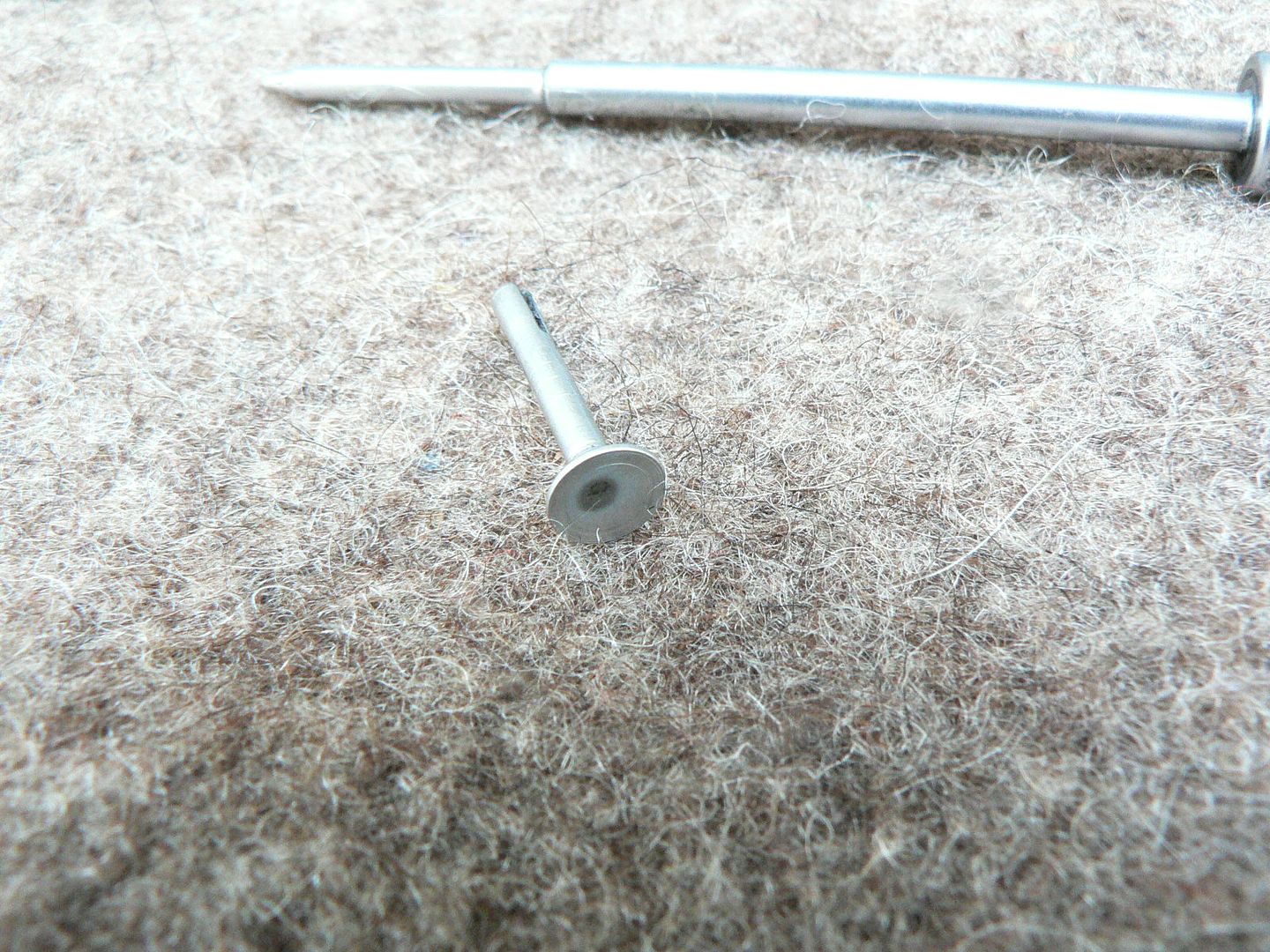
From what I've seen, these tended to be fragile and were eventually replaced with the now ubiquitous cotter pin of today.
First pattern firing pin:
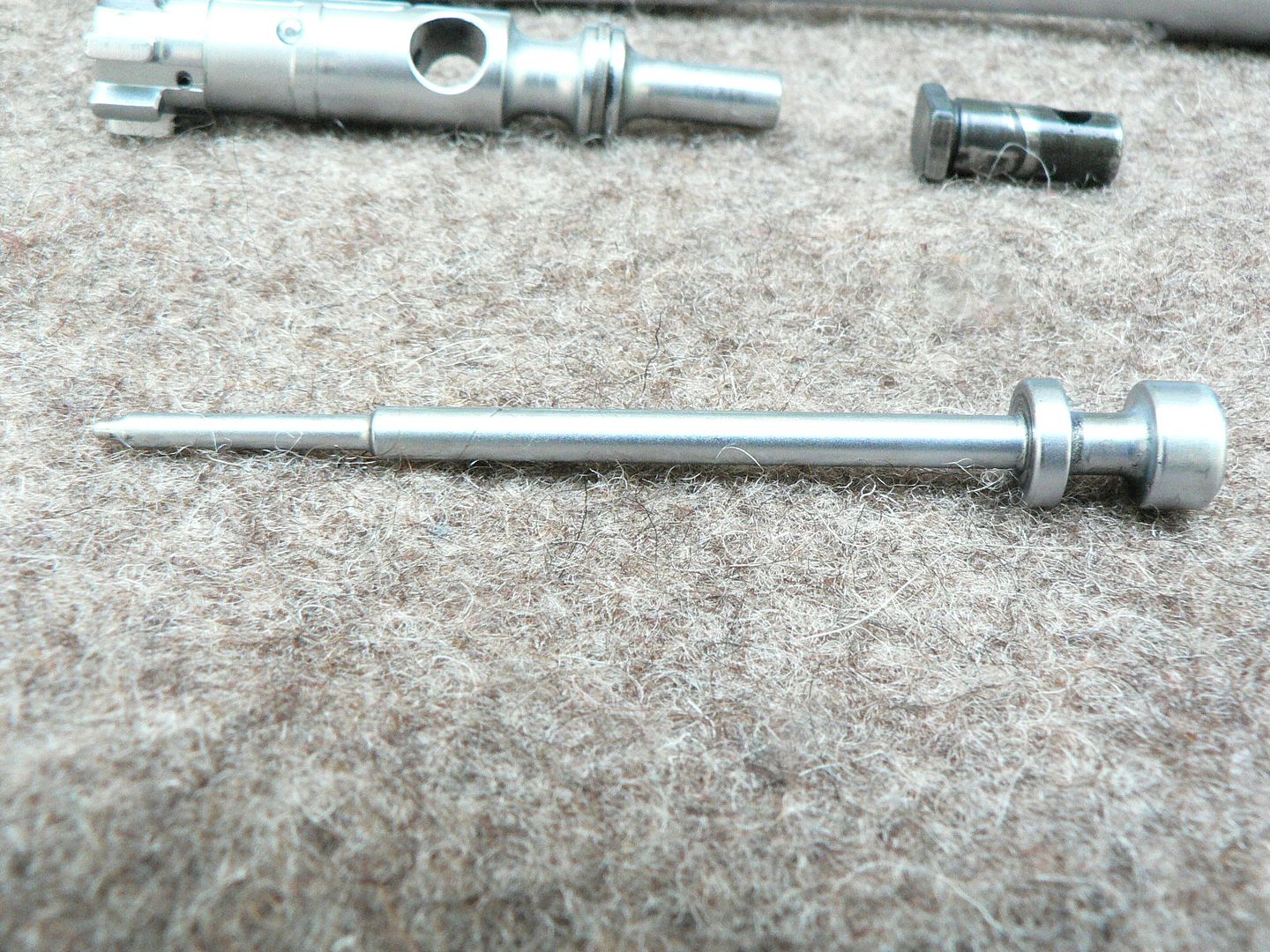
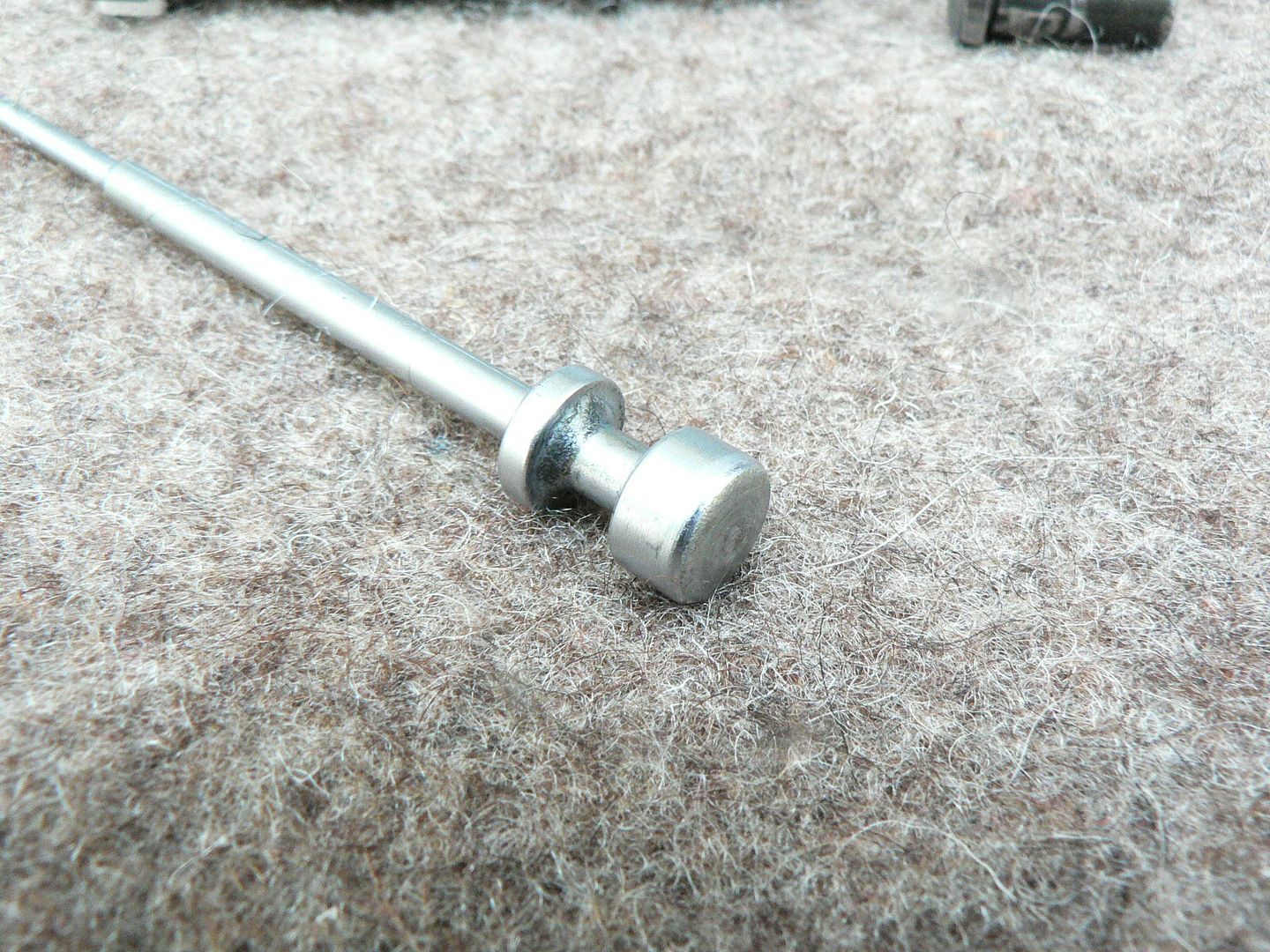
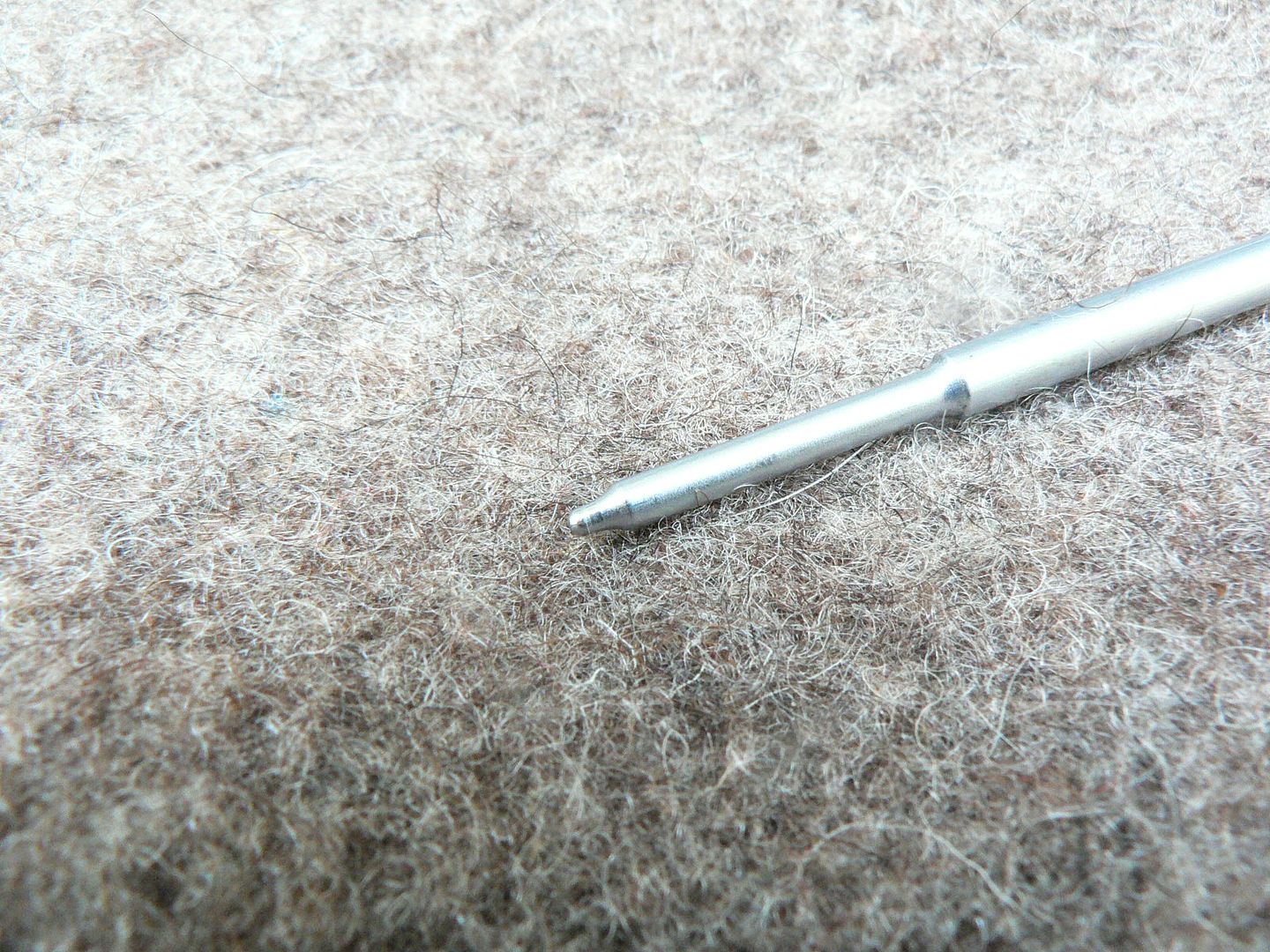
Compare this to the one in your personal AR and you'll immediately see just how beefy this one is. Very soon after US military acceptance, a slam fire issue arose. After the typical stupid amount of time and money spent government approach, it was decided that lightening the firing pin solved the problem. I would think that should have been a five minute discussion but hey, I'm just a dumb grunt.
The cam pin:
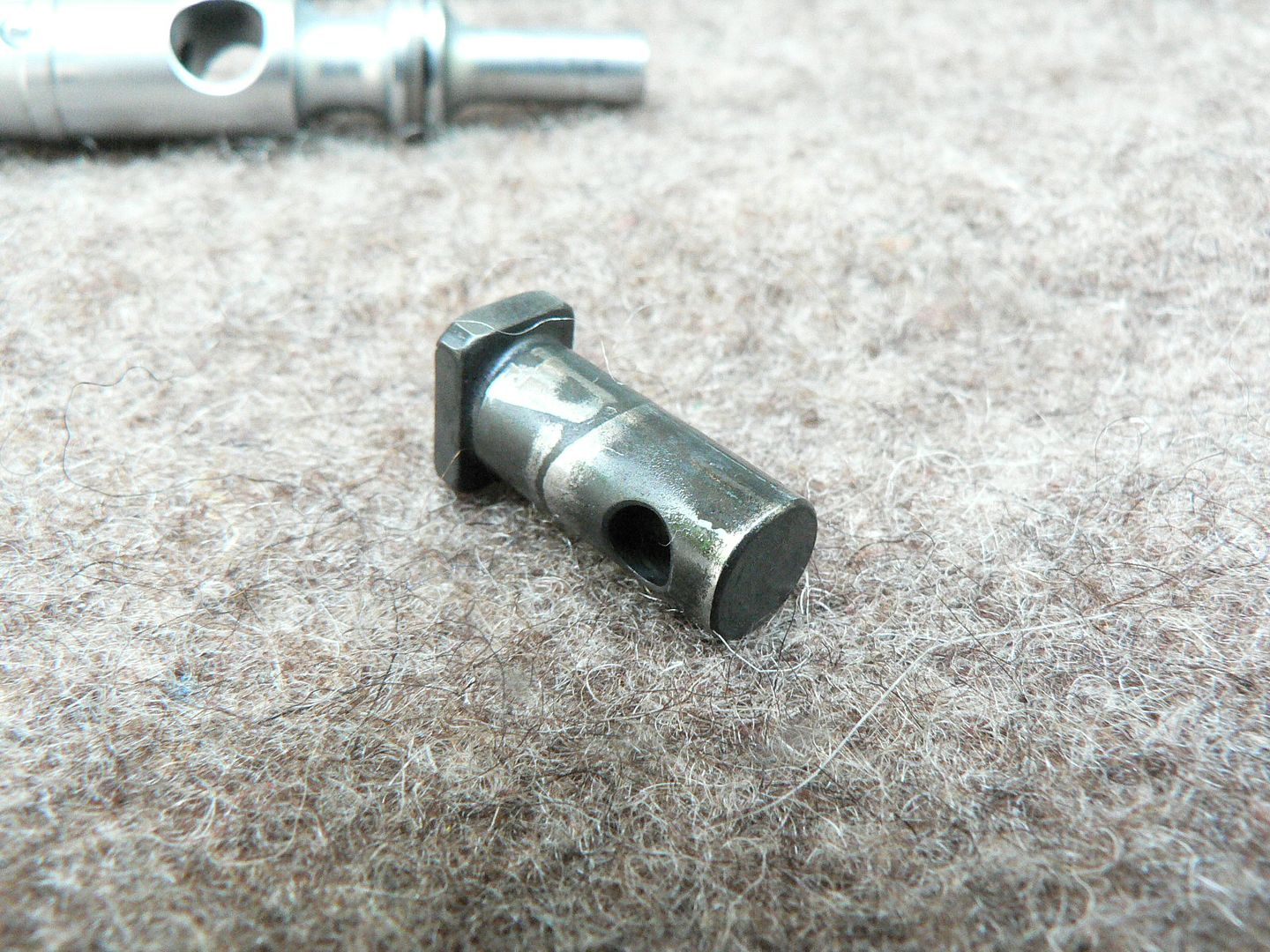
This is one of the few parts not chromed. The other major parts are the bolt key screws and the gas rings. I'm sure stuff like the ejector spring and extractor spring aren't chromed either but that should go without saying.
The bolt head:
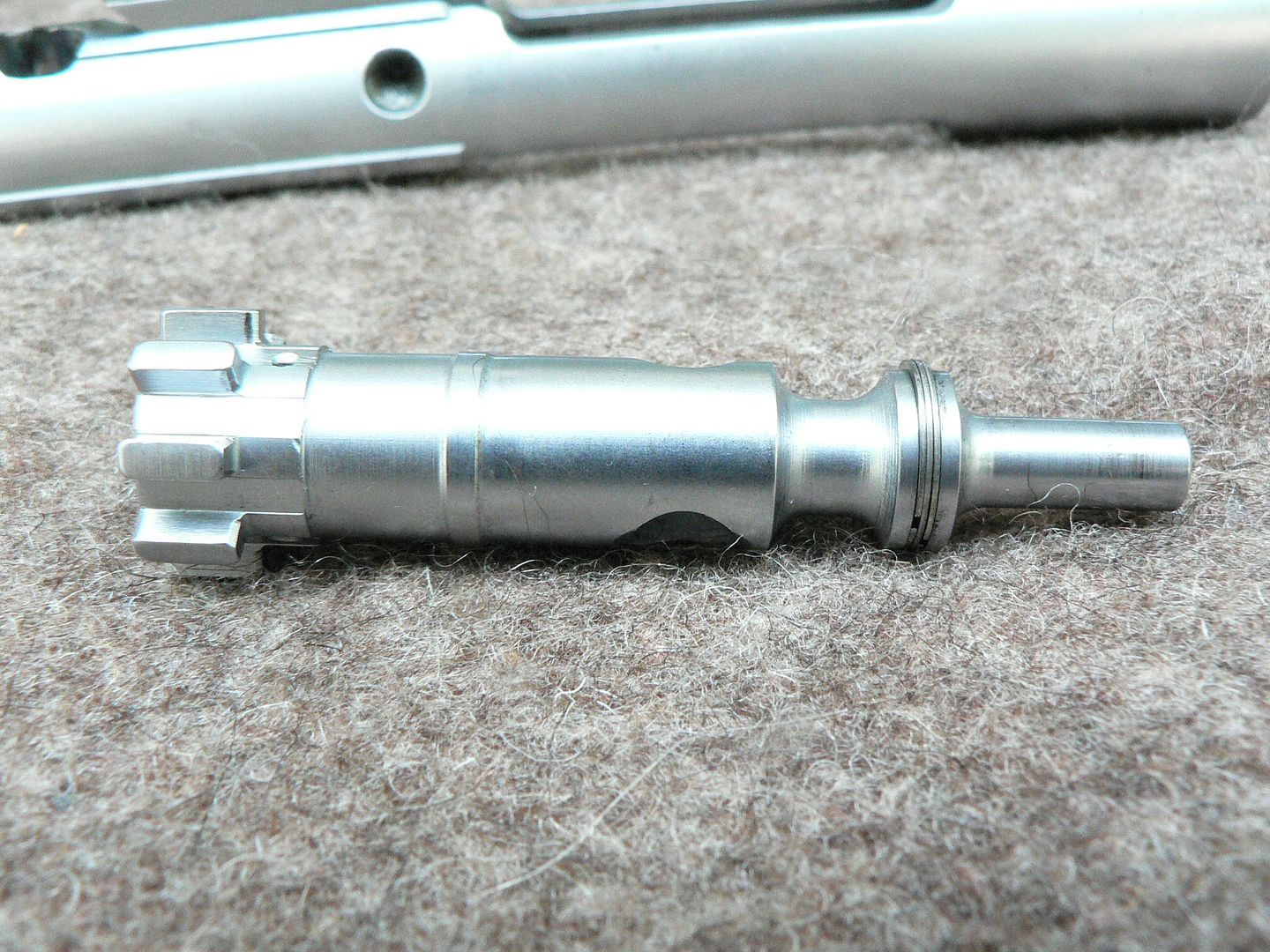
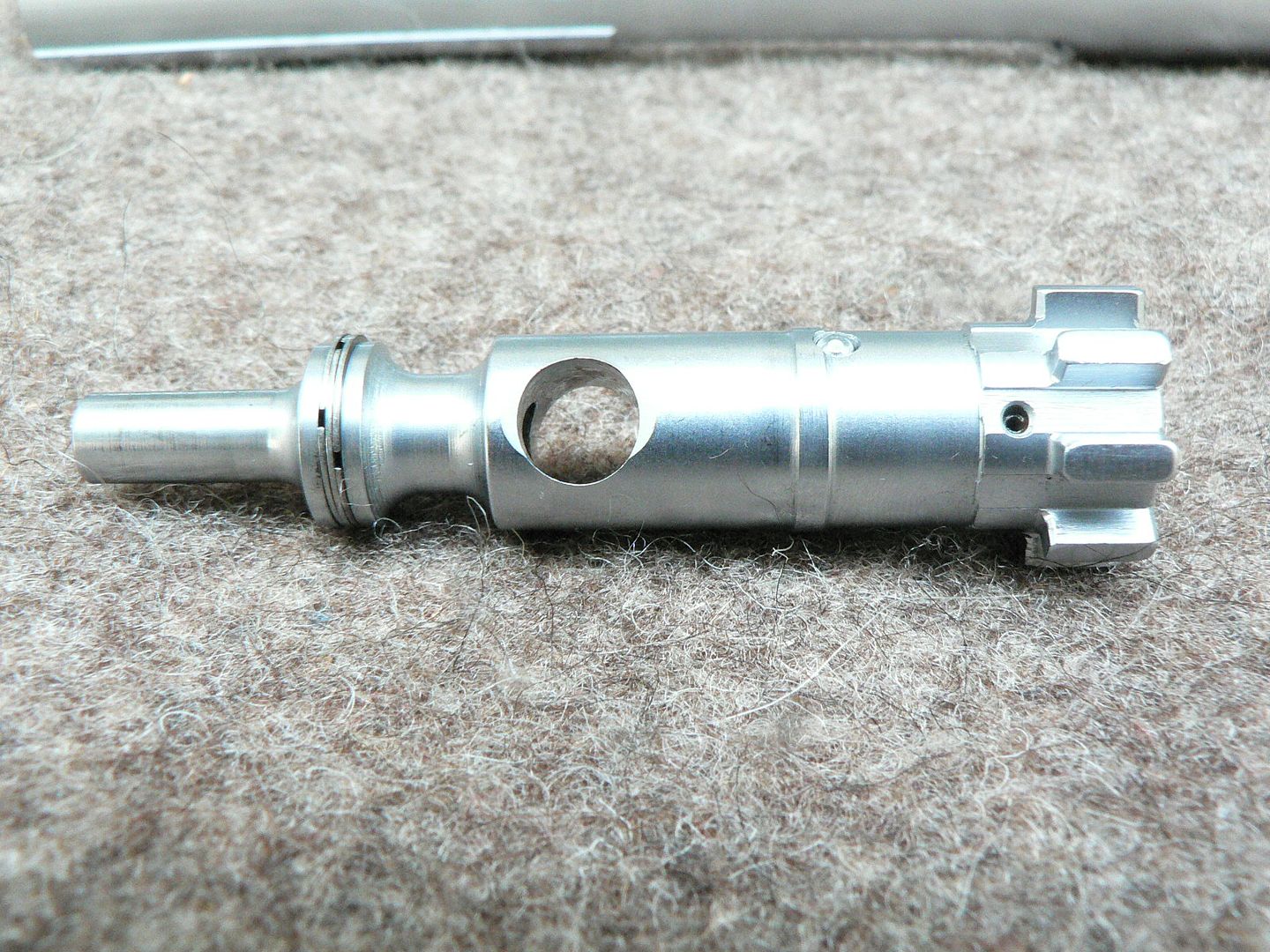
I guess "bolt head" is not technically correct and I should just be calling it the "bolt" but I'm a roller delayed blowback kinda' guy and used to that terminology. Sue me. Notice no "MP"mark. That wasn't happening yet.
The extractor showing some neato torpedo looking machining marks:
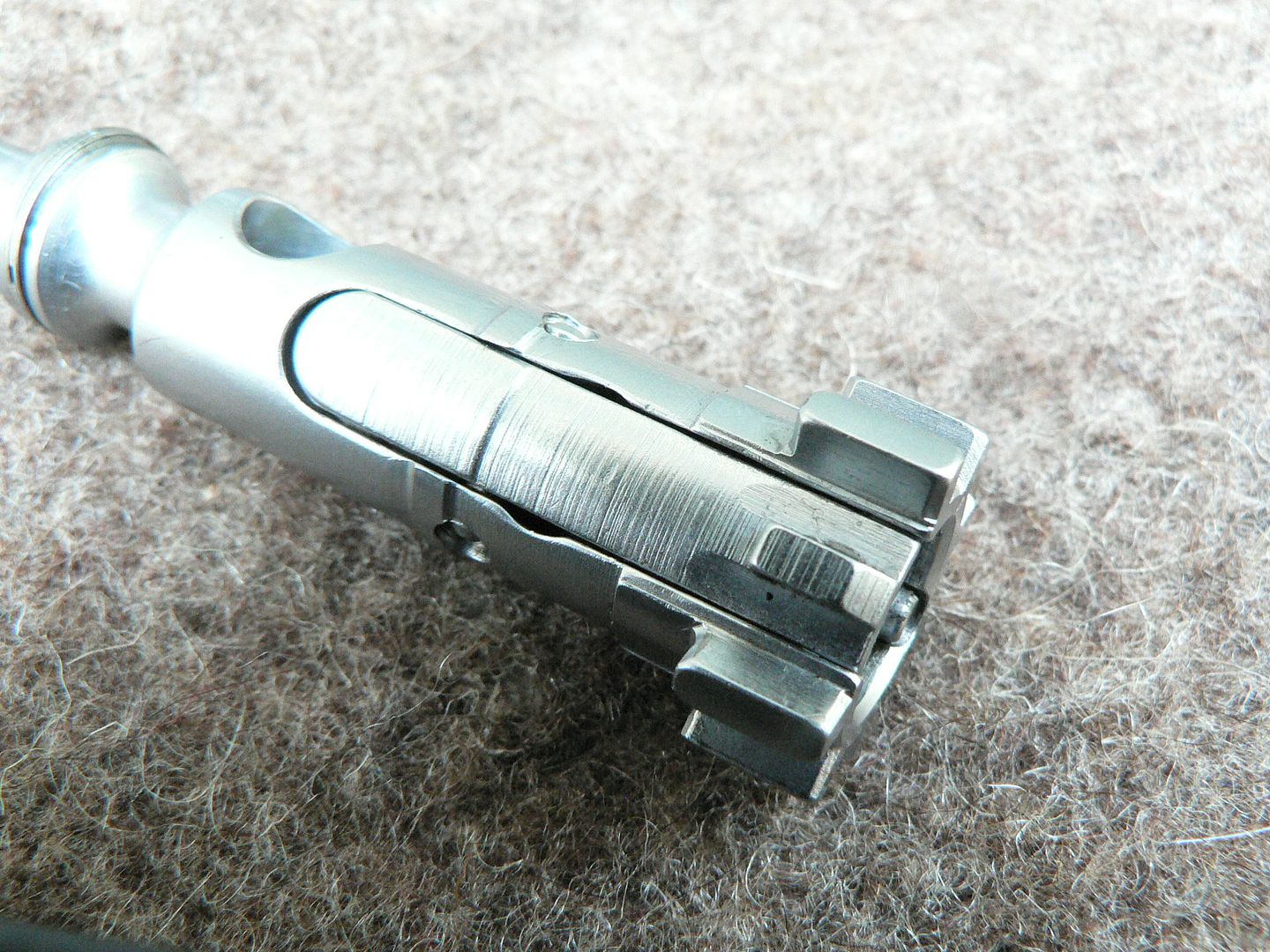
A closeup showing one side of the extractor retaining pin:
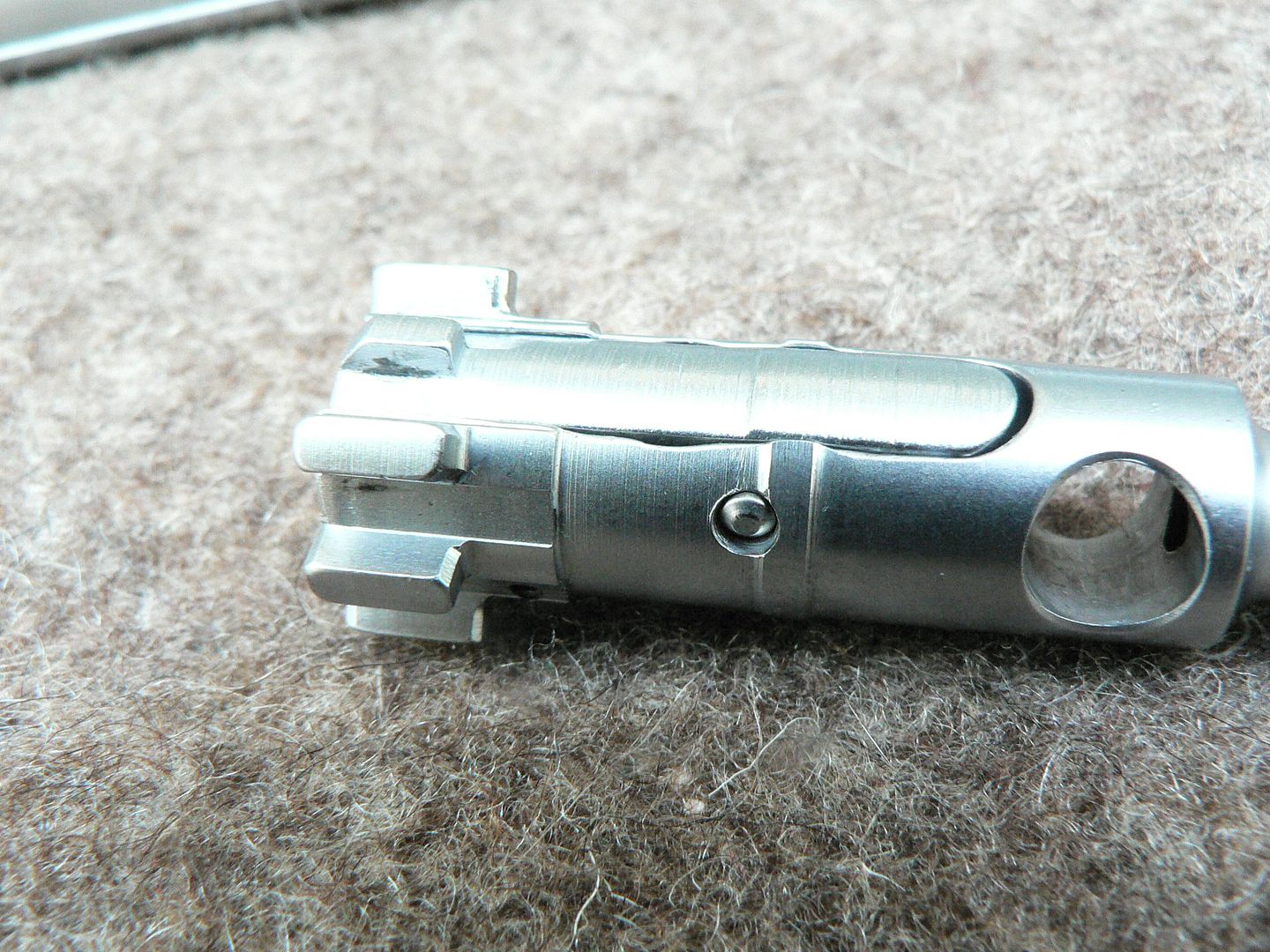
Nice chamfer on the pin!
So nice in fact that we might as well see if the other side is so well done:
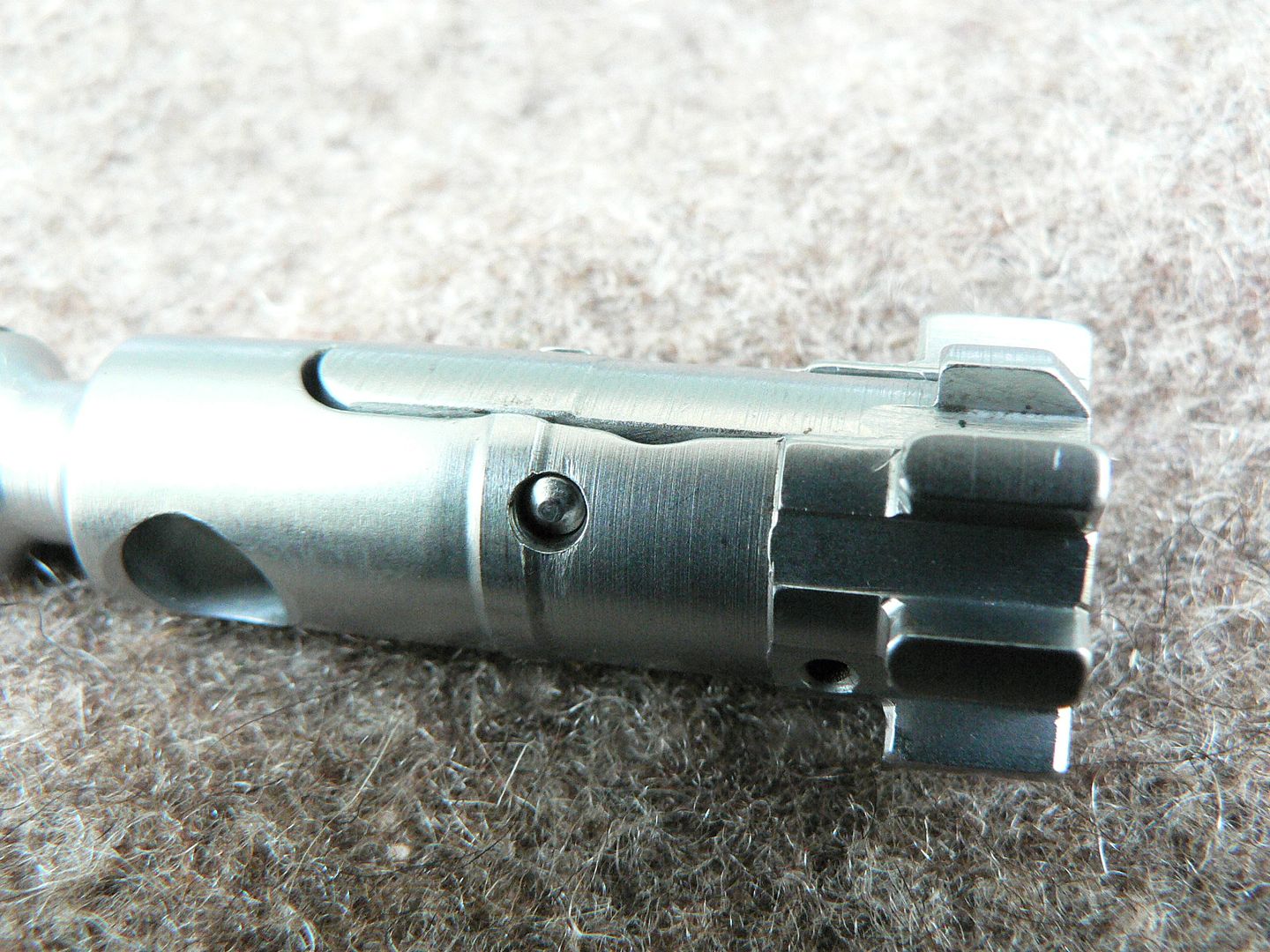
And it is! Schweet!!! Whoa dude.....it's just a pin.
The bolt face again:
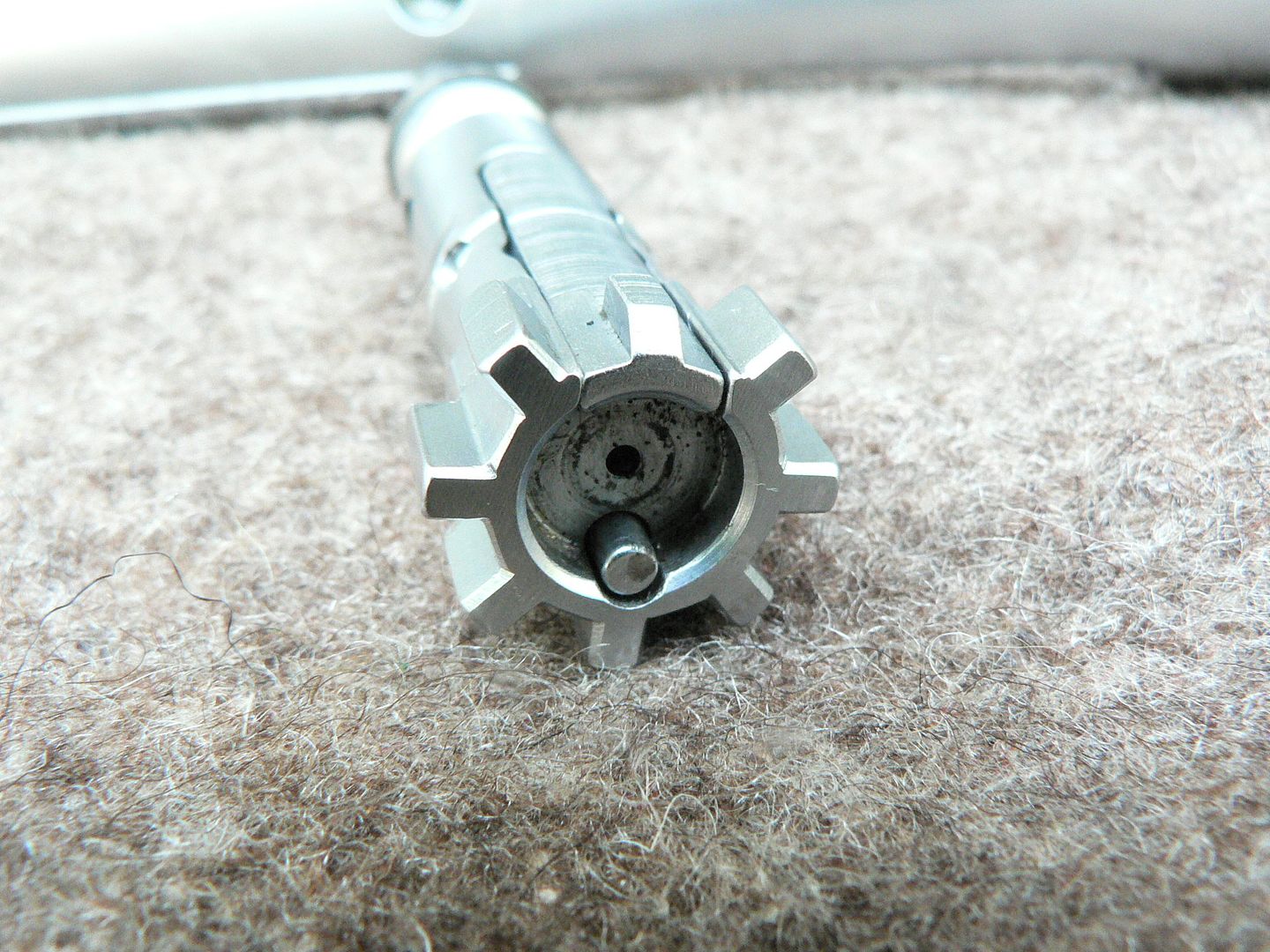
We already saw this but I took the picture so I didn't see the point in letting it go to waste. Melvin Johnson of Johnson Rifle fame came up with this locking lug configuration and he worked for Armalite so now you know about that. But you already knew that didn't you? Yeah, you did.
A close up of the bolt key and carrier:
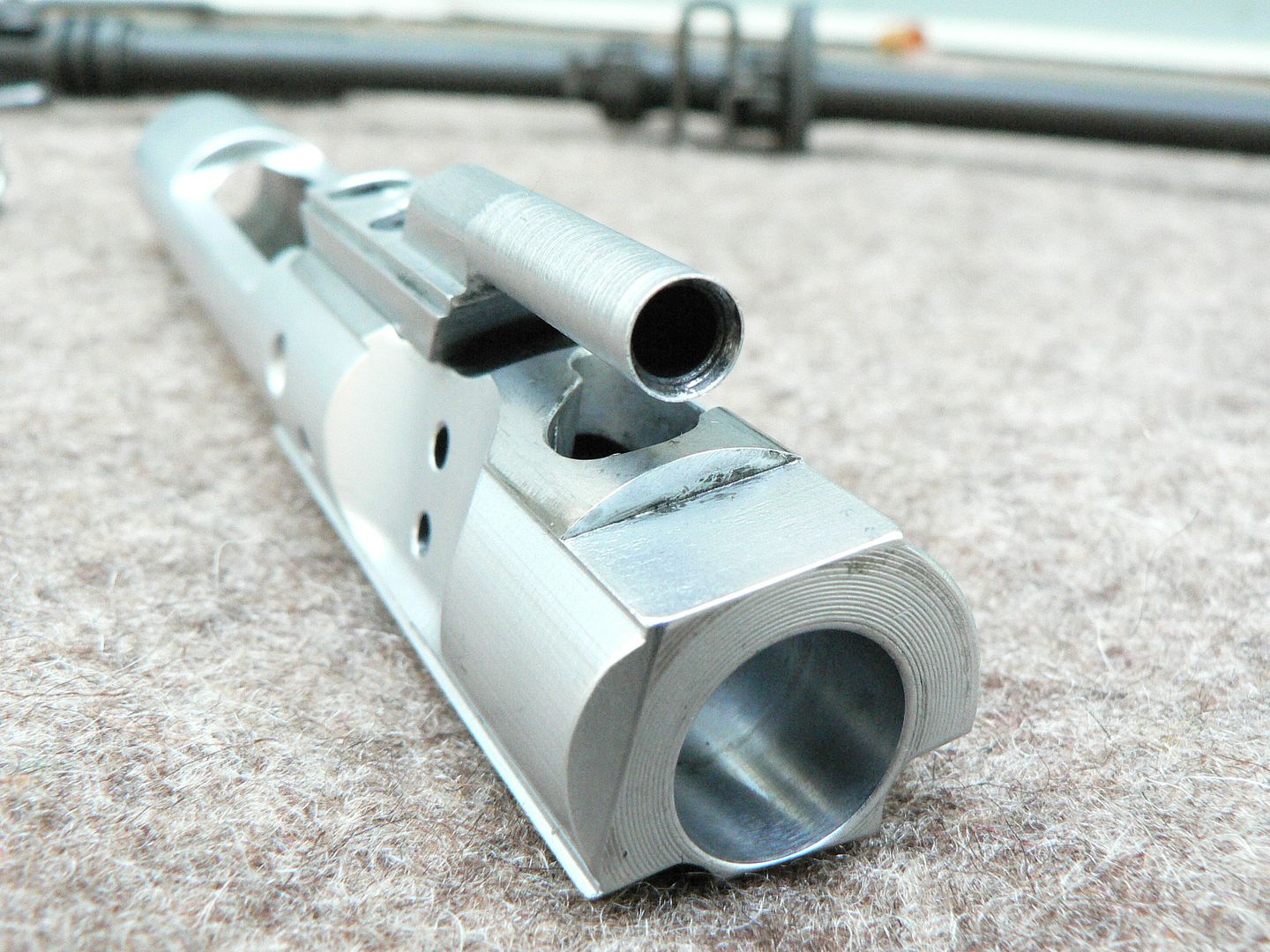
Again, compare this to your modern AR15 and you'll see some slight design changes to the key.
Closeup of the hole the head of the firing pin retaining pin nests in:
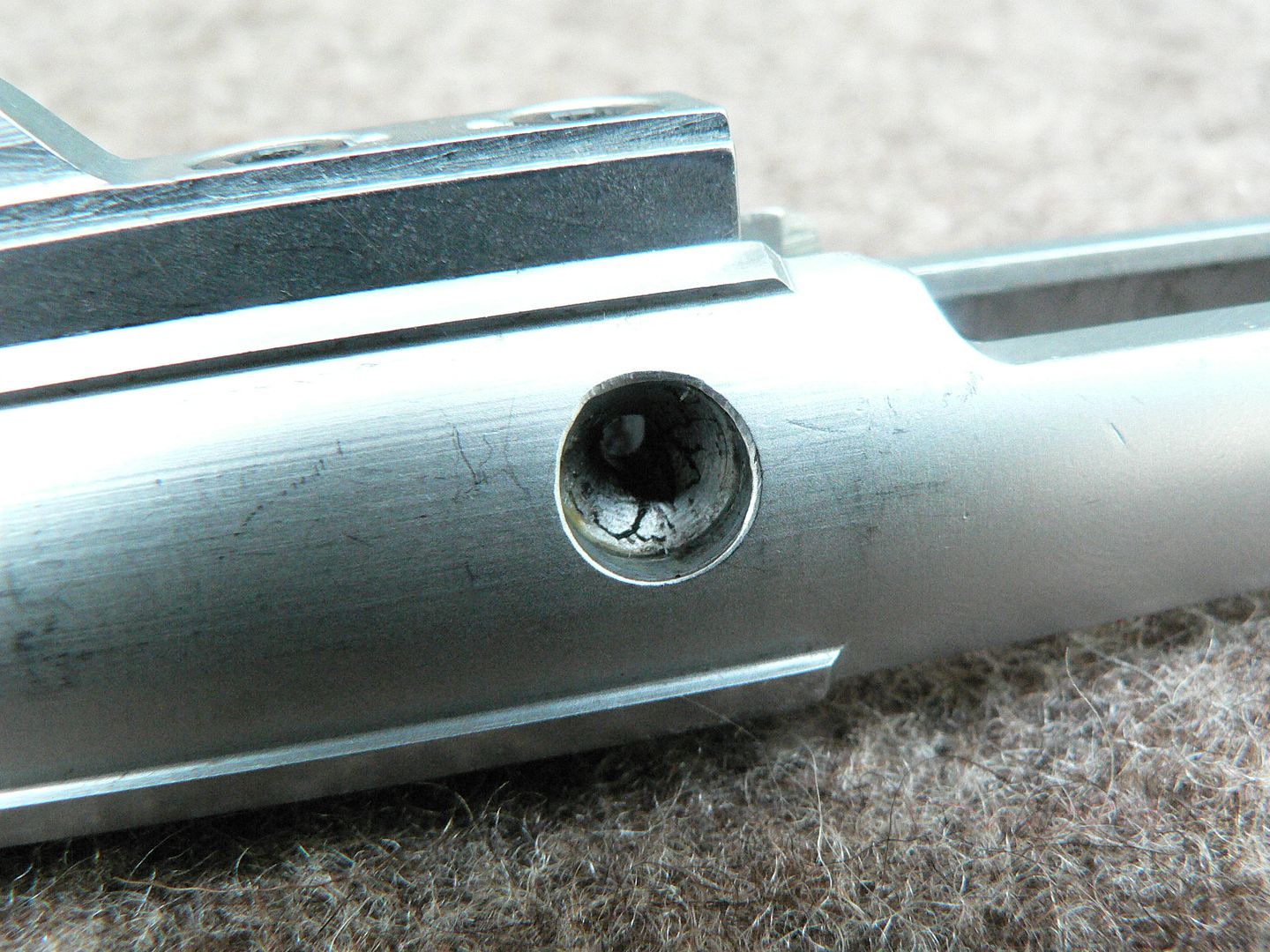
The dark veiny looking funk is grease.
And BLAMMO!!! That ends this semi-detailed look at AR15 number 251, the 151st one ever to roll off the assembly line at Colt's manufacturing in Hartford Connecticut. The thing that strikes me most about these early rifles is the care and craftmanship that went into them. Compared to today's production, this thing is finely made. But in the context of 1959 manufacturing, this rifle was cheaply made and even kind of rough. Today everything is made by robots and CNC machines but this was made before that stuff existed. Yes, much of it was made with then cutting edge casting and forging, but the touch of the human hand is quite evident in many places, particularly the well dressed mold lines of the upper and lower receivers. Also, not only is it quite light of weight compared to today's AR15/M16, but it just feels more handy and well balanced. I like the 601 because it's pure and close to the original design. It's what the designers intended before bureaucrats and committees sullied the vision. It's the Original AR15 and it is good. So that's that. But we're not done boring the pants off you yet my friends. In the next post, we'll take a detailed look at some early magazines and pouches. And after that....well, I don't want to give it away just yet. Keep checking back though; you might enjoy what's coming up. I hope you do anyway. Bye for now!
Right side:

Left side:

Note that the firing pin retainer pin is different. We'll look at that in a bit.
Top:

Bottom:

Bolt face:

I want to say that newer locking lugs might be beefed up compared to these but I might be wrong??
Rear of the firing pin in situ:

Disassembled:

There is nothing special in the way it comes apart. It's still the same today.
Closeups of the firing pin retainer pin:


From what I've seen, these tended to be fragile and were eventually replaced with the now ubiquitous cotter pin of today.
First pattern firing pin:



Compare this to the one in your personal AR and you'll immediately see just how beefy this one is. Very soon after US military acceptance, a slam fire issue arose. After the typical stupid amount of time and money spent government approach, it was decided that lightening the firing pin solved the problem. I would think that should have been a five minute discussion but hey, I'm just a dumb grunt.
The cam pin:

This is one of the few parts not chromed. The other major parts are the bolt key screws and the gas rings. I'm sure stuff like the ejector spring and extractor spring aren't chromed either but that should go without saying.
The bolt head:


I guess "bolt head" is not technically correct and I should just be calling it the "bolt" but I'm a roller delayed blowback kinda' guy and used to that terminology. Sue me. Notice no "MP"mark. That wasn't happening yet.
The extractor showing some neato torpedo looking machining marks:

A closeup showing one side of the extractor retaining pin:

Nice chamfer on the pin!
So nice in fact that we might as well see if the other side is so well done:

And it is! Schweet!!! Whoa dude.....it's just a pin.
The bolt face again:

We already saw this but I took the picture so I didn't see the point in letting it go to waste. Melvin Johnson of Johnson Rifle fame came up with this locking lug configuration and he worked for Armalite so now you know about that. But you already knew that didn't you? Yeah, you did.
A close up of the bolt key and carrier:

Again, compare this to your modern AR15 and you'll see some slight design changes to the key.
Closeup of the hole the head of the firing pin retaining pin nests in:

The dark veiny looking funk is grease.
And BLAMMO!!! That ends this semi-detailed look at AR15 number 251, the 151st one ever to roll off the assembly line at Colt's manufacturing in Hartford Connecticut. The thing that strikes me most about these early rifles is the care and craftmanship that went into them. Compared to today's production, this thing is finely made. But in the context of 1959 manufacturing, this rifle was cheaply made and even kind of rough. Today everything is made by robots and CNC machines but this was made before that stuff existed. Yes, much of it was made with then cutting edge casting and forging, but the touch of the human hand is quite evident in many places, particularly the well dressed mold lines of the upper and lower receivers. Also, not only is it quite light of weight compared to today's AR15/M16, but it just feels more handy and well balanced. I like the 601 because it's pure and close to the original design. It's what the designers intended before bureaucrats and committees sullied the vision. It's the Original AR15 and it is good. So that's that. But we're not done boring the pants off you yet my friends. In the next post, we'll take a detailed look at some early magazines and pouches. And after that....well, I don't want to give it away just yet. Keep checking back though; you might enjoy what's coming up. I hope you do anyway. Bye for now!
Last edited:

